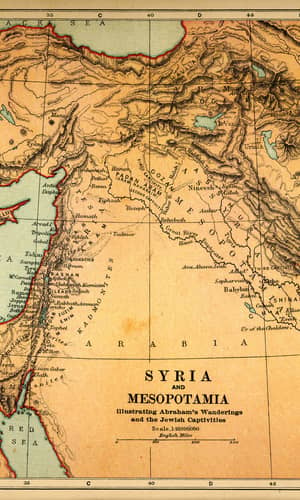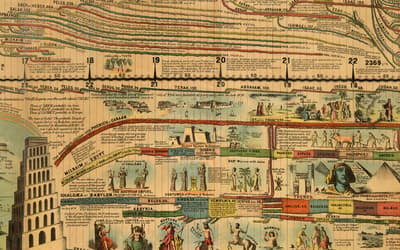The views expressed in this paper are those of the writer(s) and are not necessarily those of the ARJ Editor or Answers in Genesis.
Abstract
The authors demonstrate a plausible revision of the first seven centuries and 14 dynasties of Egyptian history from the Dispersion to the Exodus using all available historical sources, which will be seen to resolve several problems with reconciling Egyptian history with the Masoretic Text of Scripture for the Sojourn in Egypt.
Keywords: Egyptian Chronology, Sojourn in Egypt, Ussher Chronology, CFAH, Chronological Framework of Ancient History
Introduction
This paper is the sixth in the Chronological Framework of Ancient History (CFAH) series and the first of a two-part paper presenting an alternative chronology for the seven centuries of Egyptian history from the Dispersion in 2191 BC until the Exodus in 1491 BC.
Through this series of 20 papers the authors have been developing a comprehensive revisionist Chronological Framework of Ancient History (CFAH) by filtering the durations between events recorded by ancient chroniclers and their copyists through the critical method explained in the first paper, Griffith and White (2022a). The ancient chroniclers claimed access to accurate information about the past from temple and state records. The focus of the CFAH series is to build a historical model based on the classical chroniclers that is integrated with Scripture. We accept the chroniclers’ durations to events when we find that two or three witnesses agree.
We confirmed in papers Griffith and White (2022b; 2023a; 2023b) that eight ancient cultures agreed closely on the dates of Babel, the Dispersion, or the founding date of their nations (Griffith and White 2022b; 2023a, b). We saw in Griffith and White (2023c) that some official chroniclers such as Berossus used sophisticated methods such as a checksum to preserve the data in their chronology.
It is important to note at the outset that historical arguments are usually inductive rather than deductive (Lisle 2009, 107). Due to the lack of comprehensive information, the best that any scholar can present is a possible or reasonably probable chronology of the ancient world.
Fig. 1 shows an overview of the entire CFAH model for Egyptian history, which will be argued in papers #6 through #12. For the first seven centuries of Egyptian history, our model extends that of Courville (1971) with a few differences.
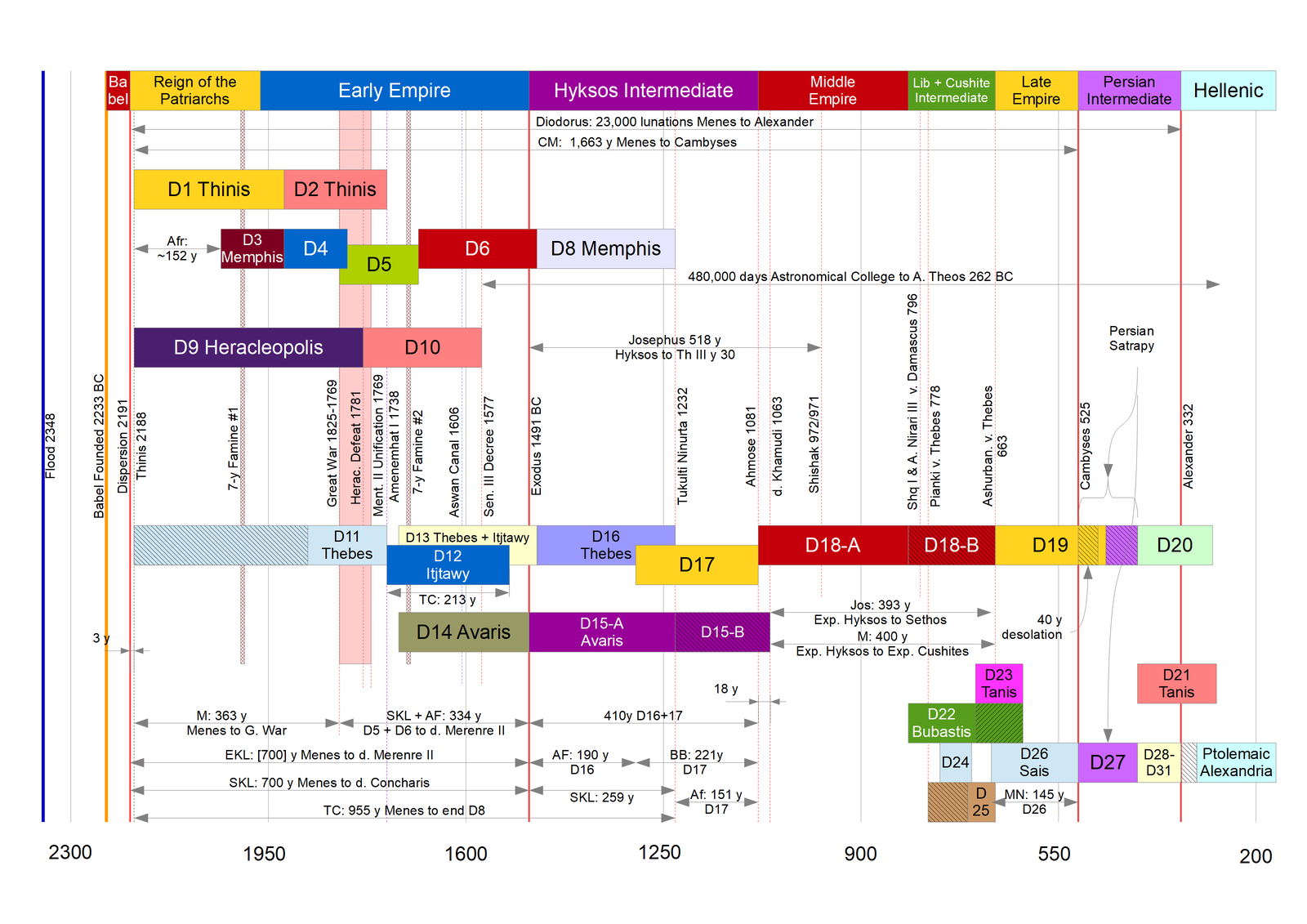
Fig. 1. CFAH Egyptian chronology.
The scope of this paper is to pinpoint the placements of Dynasties #1 through #14, which fit in the nine and a half centuries between the Dispersion in 2191 BC, and the end of Dynasty 8 circa 1233 BC. It would take a 400 page book to fully develop the thesis of this paper. As we must reduce the paper to a readable length, we will have to summarize our arguments and research here.
Using All Available Historical Sources
The data for this paper is composed of durations for dynasties and events in Egypt from The Turin Canon (TC), Manetho, the Sothis King List (SKL), the Eratosthenes King List (EKL), the Old Egyptian Chronicle, Josephus, Artapanus, the Book of Jubilees, and the Midrash, as well as monumental inscriptions and papyri.
There are six extant redactions of Manetho’s Aegyptiaca by Africanus, Eusebius, the Armenian text of Eusebius, Josephus, Theophilus, and Barbarus. When citing any of those six sources, we are referring to Manetho. Appendix 1 defends the use of these sources and presents a working hypothesis of the method Manetho used to compose his lists, which was that he listed city dynasties by groups in the order in which they came to power.
Arguments for the CFAH Model of Egyptian History
We offer the following arguments that Manetho’s original work was understood by the initiated priesthood to represent overlapping dynasties reigning in different cities at the same time but was deliberately misrepresented to the uninitiated Greeks as a single chronological series from Menes to Alexander. First, the widespread and normal means of administering nations in the Bronze Age was the Great King and Vassal King covenant, which would naturally produce parallel dynasties as seen in the Sumerian King List. Second, the durations of the dynasties from the priestly sources can be shown to fit together and interlock so that the parallel dynasties fit together sensibly and harmonize the majority of the data. Third, the resulting synchronisms between Egyptian dynasties are surprisingly accurate. Fourth, we find several precise synchronisms with Scripture that support our placement of the dynasties as plausible. Fifth, the synchronisms that arise from this placement expand our knowledge of Egyptian history, and the probability of such synchronisms resulting from chance is infinitesimally small.
Argument 1. Great Kings with Vassals Were the Default Polity
During most periods of Egyptian history, one city was dominant over the others, thus creating a “great king” and vassal king arrangement governed by a suzerain treaty (Coogan 2009, 100) which was common in the Near East down to the end of the Middle Ages.
Therefore, when we look at the ANE society of polities, we notice the co-existence of city-states, whose purpose was to operate as a divine manor, and national states, whose purpose was to function as a reflection of divine king-ship. This yields a two-tier system in which it is understood that the gods decree their favour on a great king who, in turn, is acknowledged as the ruler of an hegemonic national state, the legitimate suzerain of vassal lesser kings, enjoying certain privileges and system-wide responsibilities. (Freire 2015, 9)
We find several confirmations of this claim from different periods of Egyptian history. First, Artapanus wrote that at the time Moses was born:
[King Palmanothes] begat a daughter Merris, whom he betrothed to a certain Chenephres, king of the regions above Memphis (for there were at that time many kings in Egypt); and she being barren took a supposititious child from one of the Jews, and called him Mouses (Moses) . . . (Eusebius 2002, Pr.Ev.9.27, emphasis added)
Second, we learn that eight centuries later, when Piankhi conquered Lower Egypt, he found twenty kings reigning in various cities there, whose names and cities he recorded on the Piankhi Stela (Ben Tor 2010, 91–107).
Third, King Intef III, though being the King of Thebes, left an inscription calling himself, “Confidant of the King,” which Hayes (1971, 475) interpreted as meaning the King of Heracleopolis, though we will argue he was referring to “The Residence,” meaning the King of Memphis Dynasty 4.
We consider these examples sufficient to demonstrate that multiple kings were ruling simultaneously in Egypt over the major cities during at least parts of the early, middle, and late periods of Egyptian history. The major exception to this rule was the Eighteenth Dynasty for reasons that will be discussed in the future paper CFAH-8. As might be expected, the periods of multiple reigning city dynasties sometimes led to or resulted from instability and civil war.
Egyptologists recognize that several petty kings ruled in various cities in Upper Egypt during the Predynastic time period they refer to as “Dynasty 0” or the Protodynastic Period (Wilkinson 1999, 1–27). These included the kings named Iry-Hor, Scorpion I and II, and several others. However, Egyptologists tend to assume that after Narmer unified Egypt by conquest, there was only one king ruling all of Egypt at any given time for most of the following three millennia, excepting the three “intermediate periods” (Spalinger 2001, 265). However, given that Egypt spanned 1,300 km from Abu Simbel to the Mediterranean Sea, that would be like assuming that the territory from Jerusalem to Susa in Iran only had one king for most of antiquity. Given that the universal governance model in the Ancient Near East could be described as feudalism, it would make far more sense to assume that there were typically petty kings ruling local cities as vassals of a Great King, except where proven otherwise.
The key to deciphering ancient Egyptian chronology is the recognition of the biblical Mizraim as Menes, the founder of Egypt shortly after the Biblical Dispersion (Genesis 10:13–14; 50:11). It appears that Egypt’s oldest cities were founded shortly after the Dispersion from Babel (Griffith and White 2022b, Anchor Point 3) by five or seven of the sons (and grandsons) of Mizraim, depending on the source. Each son formed a tribe or city-state; and each city-state had its own series of kings, later recorded as dynasties. The forced unification of those founding tribes by Narmer is considered to be the dawn of Egyptian dynastic history (Wilkinson 1999, 28–59).
The fact that Manetho lists dynasties by city is prima facie evidence of such a feudalistic arrangement. Memphis was the administrative seat of the Egyptian state for the majority of its history. Yet, Manetho grouped and ordered his dynasties by their home cities.
Syncellus summarized his copy of Manetho saying, “Thereafter Manetho tells also of five Egyptian tribes which formed thirty dynasties . . .” (Manetho 1964, 11, 211). From at least the time of Eusebius, if not earlier, Christian and Jewish historians viewed Menes in the Egyptian king lists to be the same person as Mizraim. However, Egyptologists under Darwinist influence began to reject this idea in the nineteenth century. Eusebius, who had access to a complete copy of Manetho’s Aegyptiaca summarized:
Egypt is called Mestraim by the Hebrews; and Mestraim lived <not> long after the Flood. For after the Flood, Cham (or Ham), son of Noah, begat Aegyptus or Mestraim, who was the first to set out to establish himself in Egypt, at the time when the tribes began to disperse this way and that. . . . Mestraim was indeed the founder of the Egyptian race; and from him the First Egyptian Dynasty must be held to spring.” (Manetho 1964, 7,9)
Having made a case for a Great King and Vassal arrangement in ancient Egypt, the next argument will show how the city dynasties fit together like a puzzle (fig. 2).
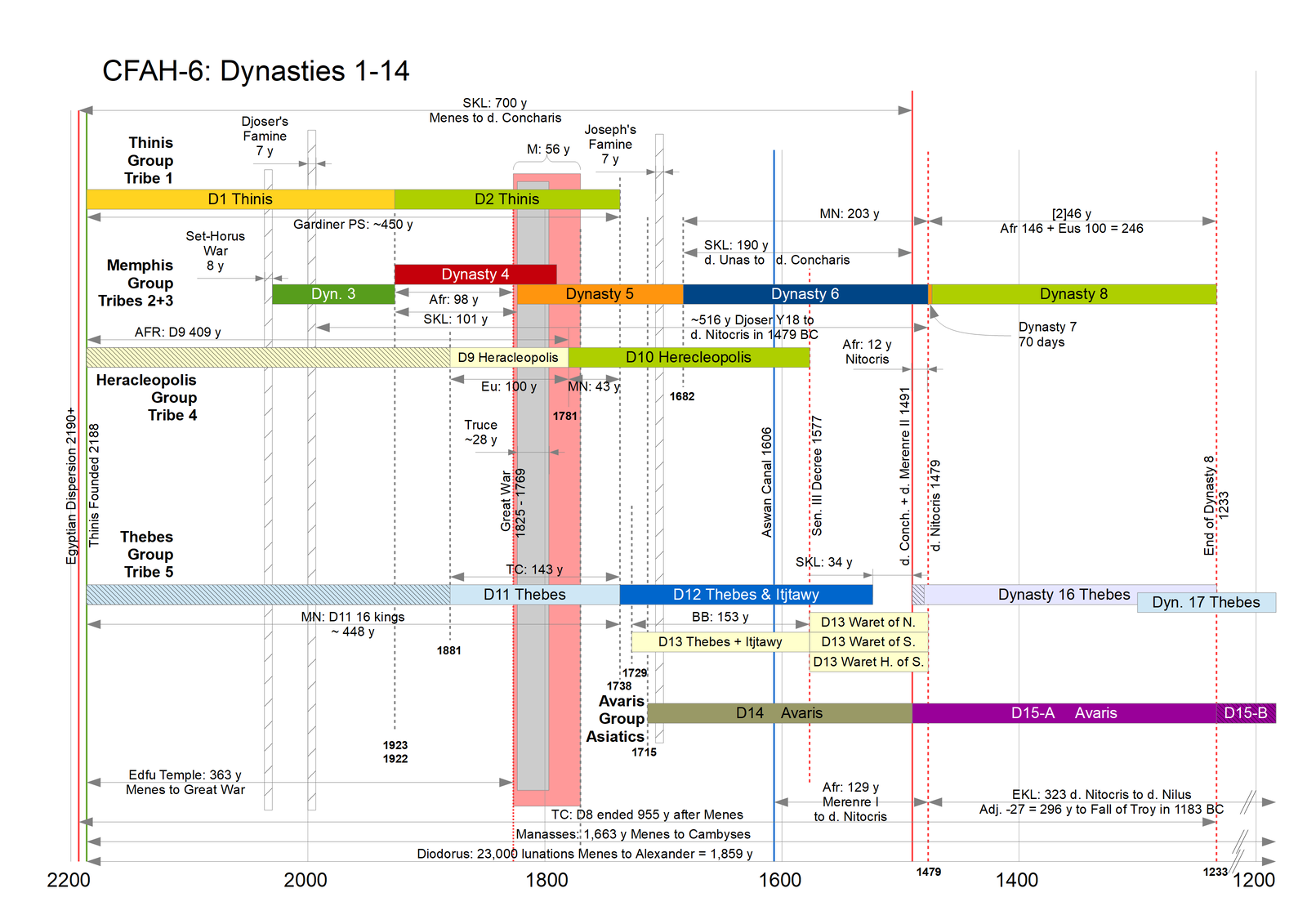
Fig. 2. CFAH solution for Dynasties 1–14.
Argument 2. The Durations Form an Interlocking Matrix
The durations between events in early Egyptian history provided by ancient and classical sources fit together to form an interlocking matrix (fig. 3).
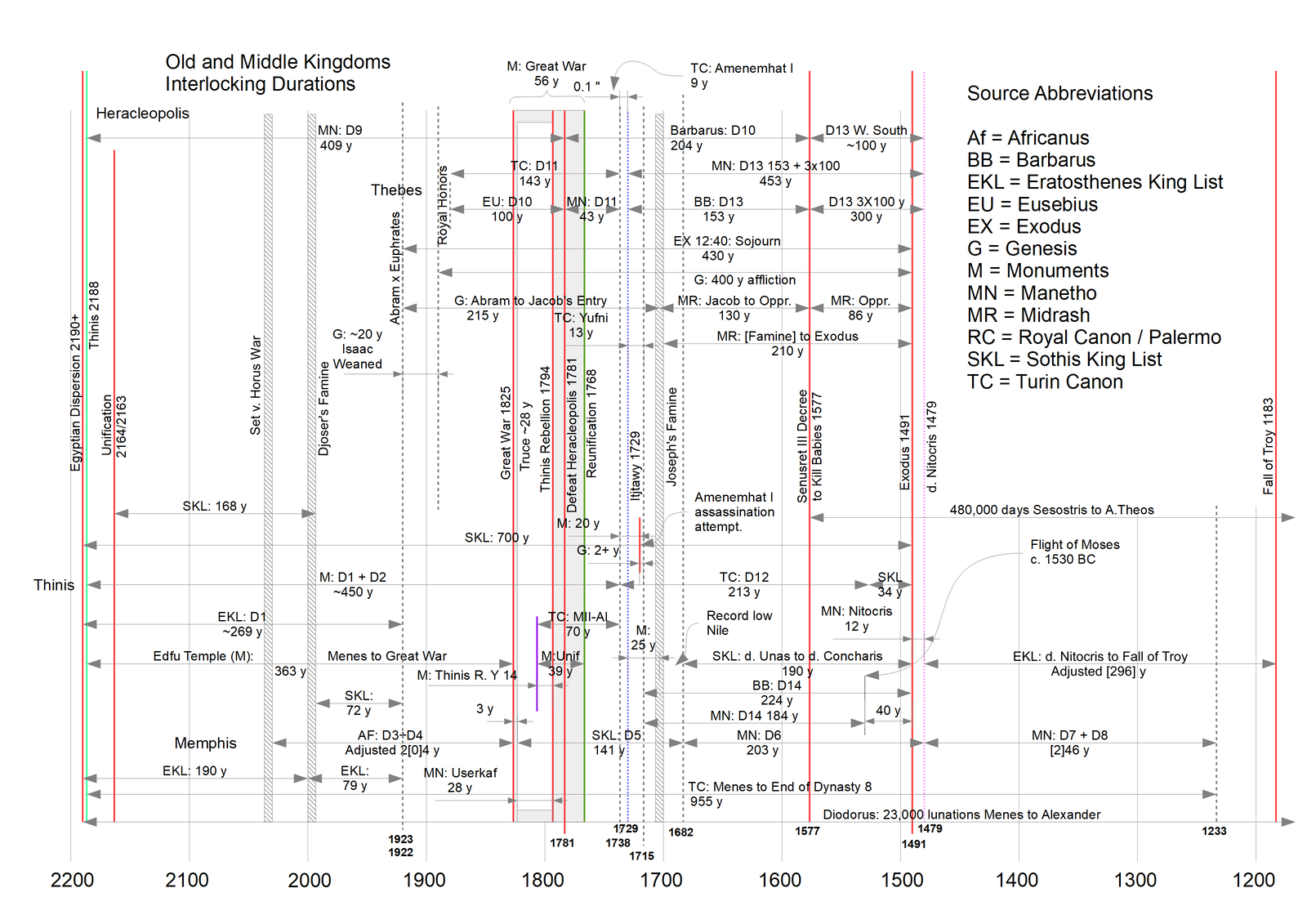
Fig. 3. Matrix of interlocking durations between Old and Middle Kingdom Dynasties.
Table 1 lists anchor points determined in the first five papers in addition to new ones that will be determined below. Table 2 lists dynastic durations from the main sources of Manetho and Monuments such as the Palermo Stone. Additional durations to relevant events are listed in table 3.
Table 1. Anchor Points for early Egyptian history.
| Anchor Points for Early Egyptian HistorySorted by Date | |||
|---|---|---|---|
| Anchor Point # | Year BC | Event | Paper # |
| 2 | 2192/2191 | The Dispersion. The Egyptian monarchy was founded in the year of the Dispersion, probably before they migrated from Babel. | CFAH-2 |
| 3 | 2189/2188 | Egyptian state was founded with the first cities, Thinis, Nekheb, etc. | CFAH-2 |
| 22 | 2164/2163 | War of Unification, Memphis founded. | CFAH-3 |
| 21 | 2036/2035 | Start of the reign of Semiramis I | CFAH-3 |
| 50 | 2029–1922 | Dynasty 3 of Memphis, ends with death of Sneferu | CFAH-6 |
| 49 | 2001–1994 | Djoser’s Seven Year Famine | CFAH-6 |
| 20 | 1825–1769 | Great War lasted 56 years. | CFAH-3,CFAH-6 |
| 55 | 1881 | Royal Honors given to Heracleopolis and Thebes by D4 | CFAH-6 |
| 56 | 1808 | Accession of Mentuhotep II | CFAH-6 |
| 54 | 1781 | Fall of Heracleopolis to Thebes, End Dynasty 9 | CFAH-6 |
| 53 | 1738 | Accession of Amenemhat I | CFAH-6 |
| 57 | 1729 | Founding of Itjtawy, Start of Dynasty 13 | CFAH-6 |
| 60 | 1718 | Failed Assassination Attempt on Amenemhat I | CFAH-6 |
| 61 | 1716/1715 | Joseph Promoted from Prison | CFAH-6 |
| 58 | 1708–1701 | Joseph’s Famine, Senusret I Famine, Unas Famine | CFAH-6 |
| 17 | 1679 | Approximate year of death of Joseph’s pharaoh, Moeris | CFAH-3 |
| 59 | 1606 | Digging of Aswan Canal for the First Time | CFAH-6 |
| 18 | 1577/1576 | Senusret III returned from war in Asia, founded an astronomical college, and reorganized the government. | CFAH-3 |
| 52 | 1526/1525 | Death of R. Iubass, Sobekneferu, end of Dynasty 12 | CFAH-6 |
| 16 | 1497–1479 | Approximate reign of Nitocris aka Netjerkare Siptah | CFAH-3 |
| 51 | 1491 | Death of Concharis, Khaankhra Sobekhotep | CFAH-6 |
| 14 | 1233/1232 | End of Dynasty 8 of Memphis | CFAH-3 |
| 12 | 1184/1183 | Fall of Troy, Death of Nilus. | CFAH-3 |
| Key: = new Anchor Points in this paper, CFAH-6 | |||
Table 2. Dynastic durations from extant sources.
| Dynastic Durations From Extant Sources | ||||||||||
|---|---|---|---|---|---|---|---|---|---|---|
| Dynasty | Africanus | Eusebius | Eusebius (Armenian) | Barbarus | Turin Canon | Palermo Stone | ||||
| Stated | Sum | Stated | Sum | Stated | Sum | |||||
| 1 | 253 | 263 | 252 | 258 | 270 | 228 | 253 | lacuna | ||
| 2 | 302 | 302 | 297 | 297 | 297 | 297 | 302 | partial | ||
| 1+2 | 555 | 549 | 1+2 = ~450(Gardiner 1964, 68) | |||||||
| 3 | 214 | 214 | 198 | n/a | 197 | n/a | 214 | |||
| 1+2+3 | 769 | 747 | ||||||||
| 4 | 277 | 284 | 448 | 448 | 277 | |||||
| 1–4 | 1046 | 1195 | ||||||||
| 5 | 248 | 218 | n/a | 258 | ||||||
| 6 | 203 | 197 | 203 | 203 | N/A | 203 | N/A | N/A | ||
| 1–6 | 1497 | 1498 | n/a | N/A | ||||||
| 7 | 70 d | 75 d | 75 y | N/A | N/A | |||||
| 8 | 146 | 100 | 100 | 140 | 187? | N/A | ||||
| 1–8 | 1639 | 1598 | 955 | N/A | ||||||
| 9 | 409 | 100 | 100 | 409 | N/A | |||||
| 10 | 185 | 185 | 185 | 204 | N/A | |||||
| 11 | 43 | 43 | 43 | 60 | 143 | N/A | ||||
| 1–11 | 2300 y, 70 d | 2300 y, 79 d | 2300 | |||||||
| 12 | 160 | 245 | N/A | 153 | 213 y, 1 m, 17d | |||||
| N/A | ||||||||||
| 13 | 453 | 453 | 453 | 184 | N/A | |||||
| 14 | 184 | 184 | 484 | 224 | N/A | |||||
|
Color Key blue = precise chronological duration green = checksum, not a chronological value red = probable copying error |
||||||||||
Table 3. Durations from other sources.
| Durations from Other Sources | ||||
|---|---|---|---|---|
| Duration(years) | Event 1 | Event 2 | Source | Comment |
| 700 | Dispersion 1491 | D. Concharis | Sothis King List | |
| 34 | Deaths of Chenephres and Sobekneferu | D. Concharis | Sothis King List | Sum of reigns of kings #24 and #25 |
| 130 | Jacob’s entry to Egypt | Decree of Oppression | Midrash (Ginzberg) | |
| 86 | Decree of Oppression | Exodus | Midrash (Ginzberg) | |
| 210 | Jacob | Exodus | Midrash (Ginzberg) | May count from the end of the Famine. |
| 56 | Start of War over Thinis | Mentuhotep Unification Stela y 39 | (Hayes 1971, 475, 479) | Found in the tomb of a participant, the war over Thinis lasted 56 years. |
| 51 | Accession of Mentuhotep II | D. Mentuhotep II | Turin Canon | |
| 19 | D. Mentuhotep II | Accession of Amenemhat I | Turin Canon (Lundström 2020) | |
| 190 | D. Unas | D. Concharis | Sothis King List (Manetho 1964, 235–249) | Sum of Kings #18–#25 |
| 79 | Djoser Sole-Reign | D. Sneferu | Turin Canon (Lundström 2020) | Sum of Kings 4.5–4.9 |
| 79 | Start of Famine | End D3 | EKL (Manetho 1964, 213–225) | Momcheiri the Memphite = D3 |
| 72 | End of Famine | End D3 | SKL (Manetho 1964, 235–249) | Kings #5 and #6 |
| 98 | Start D4 | End D4 | Manetho Africanus (Manetho 1964, 41–43) | Last 3 kings of Dynasty 3 |
| 101 | Start D4 | End D4 | SKL | Kings #7–#9 |
| 141 | Start D5 | D. Unas | SKL | Sum of Kings #14–#17 |
| 156 | Amenemhat II | D. Rameses Iubass | SKL | Amenemhat II to death of Khaneferre Sobekhotep |
| 14 | Mentuhotep II accession | Thinis rebellion | Monument (Hayes 1971, 467) | Thinis rebellion began in year 14 of Mentuhotep II |
| 39 | Menuthotep II accession | Reunification | Monument (Hayes 1971, 479) | Reunification celebrated in year 39 of Menuthotep II |
Given that the lengths of dynasties are relative, we must rely upon the anchor points determined in Papers #2, #3, and #5 of this series (Griffith and White 2022b; 2023a, c) as key synchronisms to serve as the framework into which the dynasties fit. All of the dates in table 1 will be shown to fit with the lengths of the dynasties and durations preserved from classical sources summarized in tables 2 and 3. Table 4 lists the first set of 23 kings from the SKL with our identifications, and table 5 lists the entire EKL with identifications. The estimated dynasty dates that arise from our solution are found in table 6.
Table 4. Sothis King List with CFAH identifications.
| Sothis King List, Kings #1-#32 with Identifications | |||||
|---|---|---|---|---|---|
| # | Name | Years | List Comment | CFAH ID | Dynasty |
| 1 | Mestraim | 35 | Menes | Menes | 1 |
| 2 | Kourodes | 63 | Athothis / Narmer | 1 | |
| 3 | Aristarchus | 34 | Kenkenes/Ka Sekhen | 1 | |
| 4 | Spanius | 36 | Djet or Den | 1 | |
| 5 | two | Two kings unrecorded 72 y | Semerkhet | 1 | |
| 6 | kings | 72 | Qaa | 1 | |
| 7 | Osiropus | 23 | Khufu or Djedefre | 4 | |
| 8 | Sesonchosis | 49 | Khafre | 4 | |
| 9 | Amenemes | 29 | Menkaure | 4 | |
| 10 | Amasis | 2 | ? | 4 | |
| 11 | Acesephthres | 13 | Binothres ? | 4 | |
| 12 | Anchoreus | 9 | Shepseskaf ? | 4 | |
| 13 | Armiyses | 4 | Thampthis ? | 4 | |
| 14 | Chamois | 12 | Userkaf | 5 | |
| 15 | Miamus | 14 | Sahure | 5 | |
| 16 | Amesesis | 65 | Composite | 5 | |
| 17 | Uses | 50 | Unas | 5 | |
| 18 | Rameses | 29 | Senusret I 1 | 12 | |
| 19 | Rames(s) omenes | 15 | Amenemhat II 2 | 12 | |
| 20 | Usimares | 31 | Userkare Khendjer | 13 | |
| 21 | Ramesseseos | 23 | Senusret III | 12 | |
| 22 | Ramessameno | 19 | Amenemhat III | 12 | |
| 23 | Ramesse Iubasse | 39 | Userbau Khaneferre Sobekhotep III | 13 | |
| 24 | Ramesse | 29 | Son of Uaphres | Son of Awibre Hor | 13 |
| 25 | Concharis | 5 | Fifth year 700 years from Menes 3 | Khaankhra Sobekhotep IV | 13 |
| 26 | Silites | 19 | First of six kings of seventeenth [sic] dynasty of Manetho 4 | Saul of Rehoboth | 15 |
| 27 | Bnon | 44 | Baal Hanaan | 15 | |
| 28 | Apachnas | 36 | 15 | ||
| 29 | Apophis | 61 | 15 | ||
| 30 | Sethos | 50 | 15 | ||
| 31 | Certos | 29/44 | Josephus 29, Manetho 44 | 15 | |
| 32 | Aseth | 20 | Added 5 intercalary days | 15 | |
| Total | 959 | ||||
|
1 Name appears downshifted using regnal length of Amenemhat II 2 Name appears downshifted using active reign of Senusret II 3 Khahotepre in the Turin Canon 4 He seems to mean the Fifteenth Dynasty as listed in Canonical Manetho = Dynasty 4 Overlapping sons of Khufu, Khafre, Menkaure = Dynasty 13 Kings |
|||||
Table 5. Eratosthenes King List (EKL) with CFAH identifications.
| Eratosthenes King List with Identifications | |||||
|---|---|---|---|---|---|
| # | Name | Years | List Comment | CFAH ID | Dynasty |
| 1 | Menes | 2 | Of Thebes, name means “everlasting” | Iry-Hor/Hor-Aha?/Mizraim | 1 |
| 2 | Athothes I | 59 | “Born of Hermes” | Narmer/Hor-Aha? | 1 |
| 3 | Athothes II | 32 | Ka Sekhen/Kenkenes | 1 | |
| 4 | Miabaes | 9 | “Bull Lover” | Den? | 1 |
| 5 | Pemphos | 18 | Semphos, Semempses | Semerkhet | 1 |
| 6 | Momcheiri | 79 | of Memphis, “Leader of men” | Memphite composite D3 | 3 |
| 7 | Stoichos | 6 | “Unfeeling Aries” | Khufu? or Kawab? | 4 |
| 8 | Gosormies | 30 | “all-demanding” | Djedefre? | 4 |
| 9 | Mares | 26 | “Gift of the sun” | Mentuhotep I | 11 |
| 10 | Anoyphis | 20 | “revelling” | Inteff I | 11 |
| 11 | Sirius | 18 | “Unharmed by evil eye” | Sa-Ra Inteff II | 11 |
| 12 | Chnubos | 22 | “Golden son” | Nakht neb tep-nefer Inteff III | 11 |
| 13 | Rayosis | 13 | “The arch-masterful” hry, “ master,” and the rest of the name *wose{r), “ powerful “ | Neb hapet Ra Mentuhotep II | 11 |
| 14 | Biyres | 10 | Sehotep Ib-Ra Amenemhat I | 12 | |
| 15 | Saophis | 29 | “Money getter or trafficker” | Senusret I * | 12 |
| 16 | Saophis II | 27 | Senusret II * | 12 | |
| 17 | Moscheres/Mencheres | 31 | “Gift of the Sun” | Userkare Khendjer | 13 |
| 18 | Mosthes | 33 | Netjeri Mesut Senusret III | 12 | |
| 19 | Pammes | 5 | “leader-like” | Aa Bau Amenemhat III | 12 |
| 20 | Apappus | 100 | “The very great” | Pepi II | 6 |
| 21 | Echeskosokaras | 1 | Merenre Nemtyemsaf II | 6 | |
| 22 | Nitocris | 6 | A queen “Athena the Victorious” | Netjerikare Siptah | 6 |
| 23 | Myrtaeus | 22 | “Gift of Ammon” | 16 | |
| 24 | Uosimares | 12 | “Mighty is the sun” | 16 | |
| 25 | Sethinilus | 8 | “Having increased his power” | 16 | |
| 26 | Semphrucrates | 8 | “Heracles Harpocrates” | 16 | |
| 27 | Chuther | 7 | “bull-lord” | 16 | |
| 28 | Meures (Mieires) | 12 | “Loving the iris of the eye” | 16 | |
| 29 | Chomaephtha (Tomaephtha) | 11 | “World, loving Hephaestos” | 16 | |
| 30 | Soicunius | 60 | hochotyrannos | 16 | |
| 31 | Peteathyres | 16 | 16 | ||
| 32 | Stammenemes | 26 | 16 | ||
| 33 | Stammenemes | 23 | 16 | ||
| 34 | Sistosichermes | 55 | “Valiant Hermes or Heracles” | 16 | |
| 35 | Mares | 43 | 16 | ||
| 36 | Siphthas | 5 | “Son of Hephaestus” | 16 | |
| 37 | Phruoro or Nilus | 5 or 19 | “The Nile” | 16 | |
| 38 | Amuthartaeus | 63 | 16 | ||
| Total | |||||
Table 6. CFAH estimated dynasty dates.
| CFAH Estimated Dynasty Dates | |||
|---|---|---|---|
| Dynasty | Start BC | End BC | Comment |
| 1 | 2191 / 2188 | 1924 | Two start dates. Dispersion 2191 or Thinis 2188. |
| 2 | 1924 | ~1738 | Ends about the time Amenemhat I usurped the throne. |
| 3 | 2029 | 1922 | Synchronized by Djoser’s famine and the famine of Uenephes/Djet |
| 4 | 1922 | 1825 | Menkaure lived ~33 years into the Great War, thus D4 technically overlapped with D5. |
| 5 | 1822 | 1682 | D5 appears to have begun with the Truce less than a year after the Crime of Thinis. |
| 6 | 1682 | 1479 | Nitocris died ~1479 |
| 7 | 1479 | 1479 | 70 days |
| 8 | 1479 | 1232 | Ends same year as SKL King #32 |
| 9 | 2190/1881 | 1781 | D9 ended with Fall of Heracleopolis to Thebes |
| 10 | 1781 | 1577 | D10 ended when Senusret III re-organized Egypt |
| 11 | 1881 | 1738 | D11 ended when Amenemhat I usurped the throne. |
| 12 | 1738 | 1526 | Death of Sobeknefrue ended D12 |
| 13 | 1729 | 1577/1491 | 153 years until Senusret III forked it into 4 branches in 1577, 82 more years until it ended with the Exodus. Manetho total of 497 y |
| 14 | 1715 | 1491 | From Joseph’s appointment until Exodus, 224 y. |
Now we will look at Manetho’s city dynasty groups in the order in which he listed them.
Thinis Group: Dynasties 1–2
Dynasties 1 and 2 were Kings of Thinis near Abydos where the earliest rulers of Egypt are buried (Wilkinson 1999, 3). Africanus and Eusebius give sums for Dynasty 1 that range from 254 to 270 years. Weigall estimated 264 years from the Royal Annals (1925, 9), as do we. Using our Anchor Point #2 for the founding of Thinis in 2188 BC places the transition to Dynasty 2 circa 1924 BC (fig. 4).
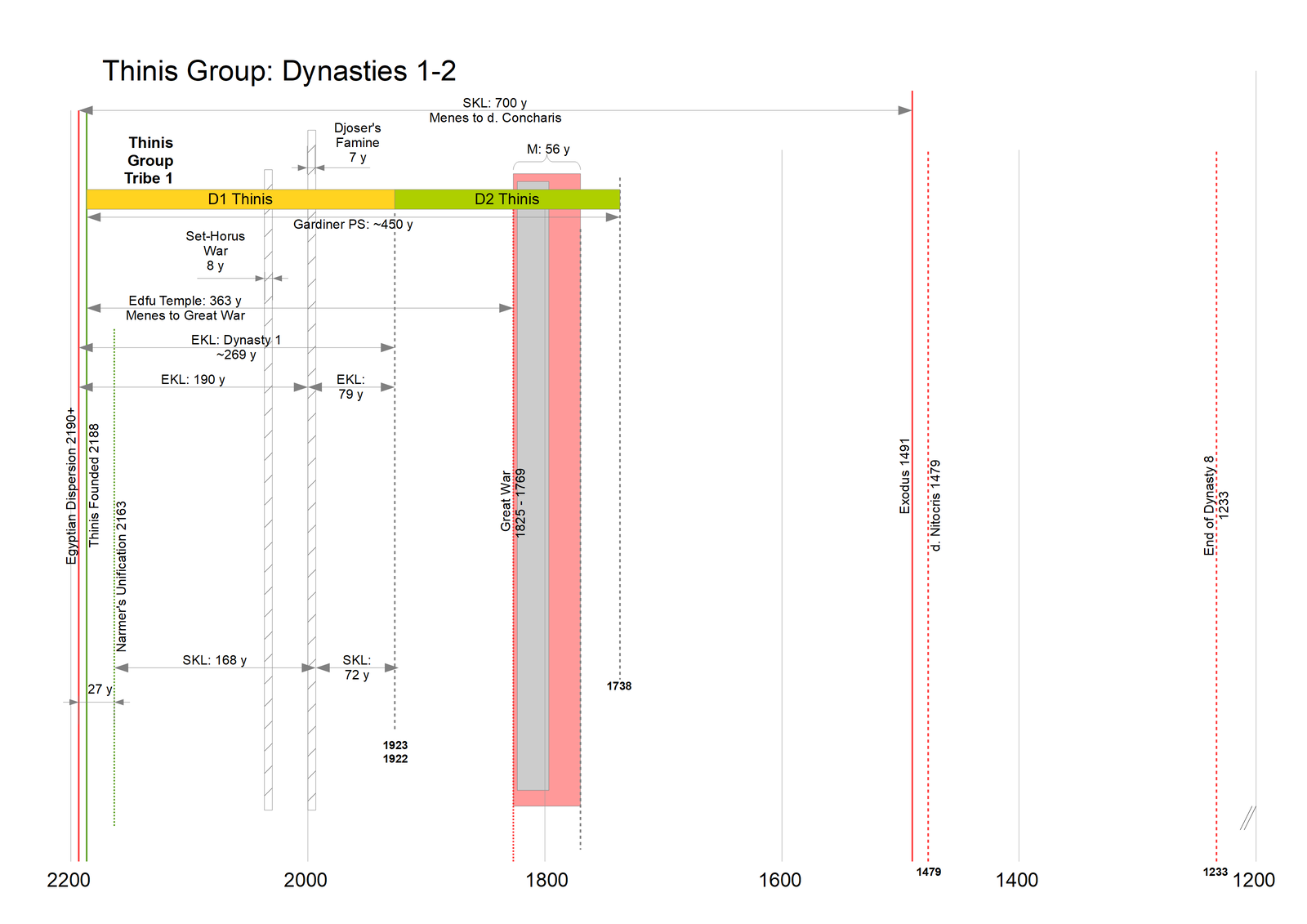
Fig. 4. Thinis group—Dynasties 1–2.
Gardiner estimated that Dynasties 1 and 2 took up about 450 years on the Palermo Stone (1964, 67). Subtracting Weigall’s estimate for Dynasty 1, we get an approximate duration of 186 years for Dynasty 2. This suggests that the values of 297 to 302 years found in Africanus and Eusebius for Dynasty 2 include about 114 years of coreigns. Using the estimate of 186 years, Dynasty 2 would have begun around 1924 and ended within five years of 1738 BC.
Memphis Group: Dynasties 3–8
After completing the Thinis Group we suggest that Manetho went back in time to the founding of the Third Dynasty in Memphis, which was contemporary with Uenephes (Djet) and Merneith of Dynasty 1 in Thinis, as will be shown.
Dynasties 3 to 8 present a continuous chronological sequence in the city of Memphis, except for a short period during the Great War when Dynasty 5 ruled from Elephantine as a rival faction to “The Residence” of Dynasty 4 in Memphis (fig. 5).
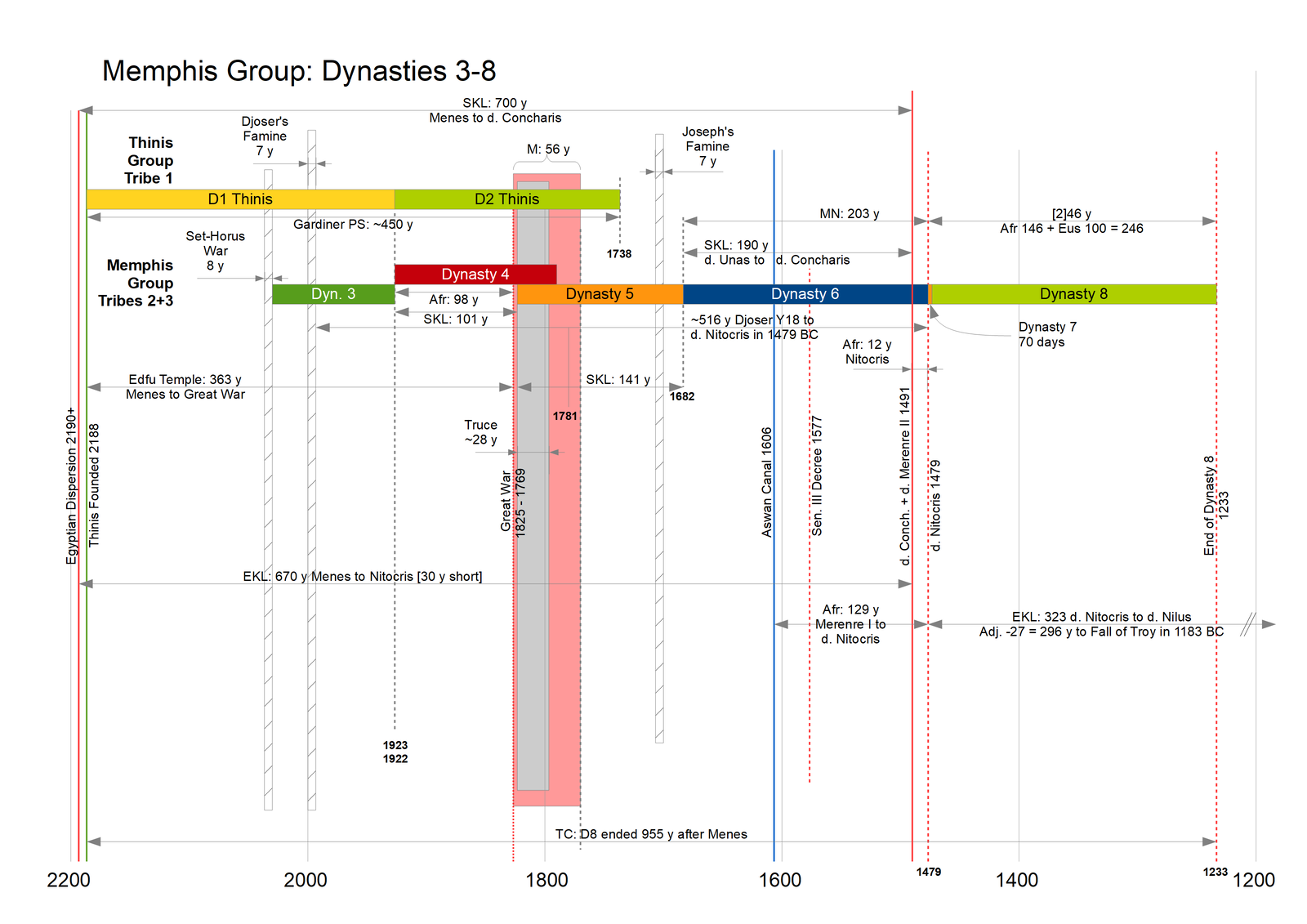
Fig. 5. Memphis group–Dynasties 3–8.
Key Synchronisms for Dynasties 3–8
In order to accurately place the dynasties of the Memphis Group we need to establish some key synchronisms.
A. Djoser’s Famine culminated with the death of Uenephes: 2001–1994 BC
Courville argued that Kenkenes, or Ka Sekhen, of Dynasty 1 was the same person as Khasekhemwy who founded Dynasty 3 in Memphis at the culmination of an eight year rebellion by the followers of Set (Courville 1971, vol. 1, 177). It appears to us that Khasekhemwy and his son Djoser were vassals of Djet (Uenephes) and Merneith of Dynasty 1 reigning from Thinis. Articles with the name of Seth-Peribsen were found in the tomb of Merneith (Petrie 1900, plate IV.7; Wilkinson 1999, 90) as well as the tomb K1 of an official who served under Djoser (Garstang and Sethe 1903, plate X.8; Simpson 2003, 386–391), which may place them as contemporaries. However, there are known cases of items from later dynasties that were placed in the tombs of Dynasty 1 rulers when repairs were made in the Middle Kingdom (Dodson 2016, 17).
Counting down from the Unification of Egypt in the twentieth year of Menes in 2164/2163 BC (Griffith and White 2023a, Anchor Point #22) using the chronologically accurate SKL to the death of Uenephes or Djet we get:
2164/2163 BC War of Unification and Founding of Memphis; minus,
35 year reign of Menes from Memphis (SKL); minus,
63 year reign of Kuorodes (Narmer); minus,
34 year reign of Aristarchus (Djer); minus,
36 year reign of “Spanios” (Djet); gives:
1996 BC ± 2 year error for death of Djet / Uenephes / Merneith
The same famine appears to be mentioned in the Jewish tradition of Terah at the time of Abraham’s birth, which the Book of Jubilees places 530 years and the Seder Olam 500 years before the Exodus. The Famine Stela at Sahel Island records the Ptolemaic Era tradition of a seven year famine ending in the eighteenth year of Djoser (Simpson 2003, 386–391). We tentatively identify the eighteenth year of Djoser as the final year of Uenephes and Merneith of Dynasty 1, pinpointing that year as 1994 BC.
A rough confirmation of this date from the other direction can be estimated by adding the dynastic durations from the death of Nitocris in 1479 BC back to the reign of Djoser in Dynasty 3.
1479 BC death of Nitocris (CFAH-3, AP #16); plus,
203 year duration of Dynasty 6 (Manetho 1964, 53–57); plus
141 year duration of Dynasty 5 from SKL kings #14–#17 (Manetho 1964, 237); plus,
101 year duration of Dynasty 4 from SKL kings #7–#9 (Manetho 1964, 235); plus,
60 years from d. Djoser to d. Sneferu in Turin Canon (Lundstrom 2020); plus,
29 year reign of Djoser (Manetho 1964, 41); minus,
18 years to end of famine; gives:
1995 BC ± 2.5 year error end of Djoser’s Famine
Merneith is also linked to the Step Pyramid by her own tomb.
The design of the tomb (S3038) at Saqqara . . . is very remarkable for within the superstructure of a familiar mastaba format there was found hidden what is in effect a buried miniature stepped pyramid. This was entirely unexpected when it was discovered, though it is known now not to be unique; Queen [M]erneith’s tomb has the same feature though, in her case, what is clearly a more primitive form. (Rice 2004, 175)
Given that Djoser and Merneith are linked by the items bearing the name of Seth-Peribsen, both are claimed to have built the Step Pyramid at Saqqara, a model of which was found in Merneith’s tomb, and the seven-year famine ended about the same time for both, we consider this a triangulated synchronism, new Anchor Point #49, Djoser’s Famine 2001—1994 BC (fig. 6).
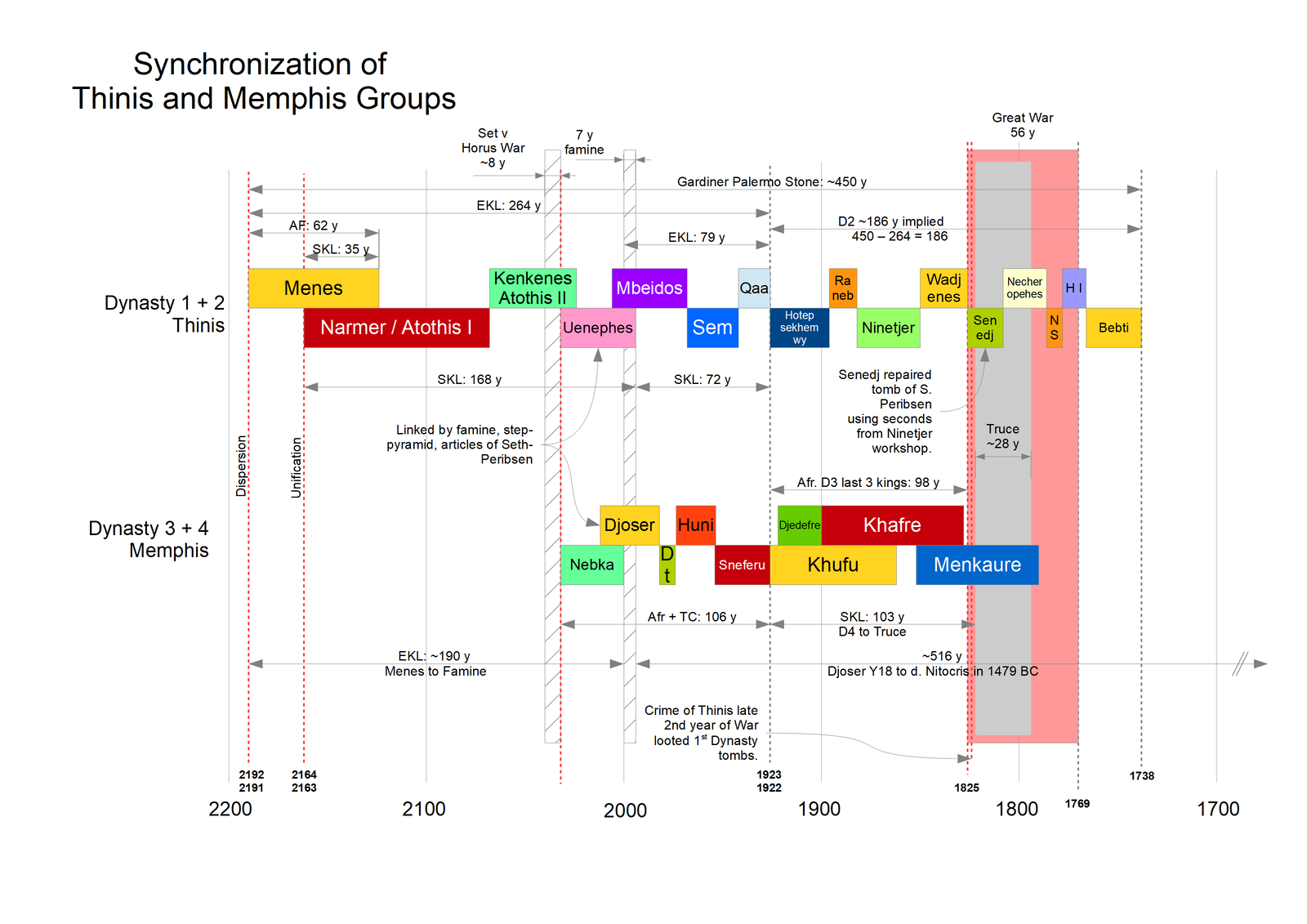
Fig. 6. Synchronisms between Thinis and Memphis groups.
Djoser’s reign is recorded as 29 years in Africanus, but 19 years in the Turin Canon. Likewise, the preceding king, Necherophes or Nebka, is given 19 years in the Turin Canon but 28 years by Africanus. Interpreting these differences as a 9.5 year coregency, where Africanus counted the coregency for both kings rounding up, but the Turin Canon omitted it for both kings and rounded down, this places the death of Nebka/Necherophes shortly before 2001 BC, and the start of his reign in 2029 BC, thus giving us a date for the start of Dynasty 3.
Africanus gives a total of 214 years for Dynasty 3, which includes Dynasty 4 and the ten year coregency between Nebka and Djoser. Subtracting the 98 years of the D4 kings included in Africanus D3, and the 10 years of coreign, gives 106 years for the true chronological duration of Dynasty 3, from 2029 to 1923/1922 BC. Accepting this anchor point it becomes apparent that the 79 years of “Momchieri the Memphite” in the EKL, and the 72 years of “two unnamed kings” in the SKL, both counted back from the year 1923/1922 BC to the start or end of the seven year famine. The Egyptian chroniclers appear to have used 1923/1922 BC for the end of Dynasty 3, forming new Anchor Point #50, Dynasty 3 2029–1922 BC (fig. 5).
This confirmation also supports Courville’s hypothesis that Ka Sekhen, or Ka Nekhen, was Kenkenes (whom we identify as Djer) of Dynasty 1, who moved to Memphis and changed his title, starting Dynasty 3 as Khasekhemwy (Courville 1971, 166–168). We will add to Courville’s hypothesis the supposition that Ka’s name was abbreviated as Nebka meaning “Lord Ka” in the Turin Canon (Lundström 2020) and as Necherophes the founder of Manetho’s Dynasty 3 (Manetho 1964, 41). The idea that Ka Sekhen acted as a vassal of Djet or Merneith is seen by the recently discovered Sinai inscription where his earlier title, Djer, is backed by the serekh of his predecessor, Neithhotep (Tallet and Laisney 2012, 387–388), suggesting that he ruled at the behest of Egypt’s woman-king. In Djer’s tomb were found items with the serekhs of Neithhotep and of Merneith (Porter and Moss 1937).
B. The Great War links Dynasties 2, 4, 5, 9, 10, and 11: 1825–1769 BC
Anchor Point #20, The Great War, starting in 1825 BC (Griffith and White 2023a), was the point where the chroniclers marked the transition from Dynasty 4 to Dynasty 5 (fig. 7). The Turin Canon gives Menkaure 28 years, while Africanus gives him 26 years as the last king of Dynasty 3, but Africanus also gives Menkaure 63 years (total reign) in Dynasty 4. Recognizing both the 26 and 28 year reigns as culminating in 1825, with a variation of two years in the start of his reign, possibly due to a coreign with Khafre, and subtracting the longer one (28 years) from his total reign of 63 years suggests that Menkaure lived 35 years into the Great War, thus dying about 1790 BC. When we look at Dynasties 9, 10, and 11 we will see they are synchronized to the Great War by an inscription in a Dendera tomb saying that the war over Thinis had lasted 56 years (Hayes 1971, 475), and a stele from year 39 of Menuthotep II celebrating reunification at the end of the war (Hayes 1971, 479).
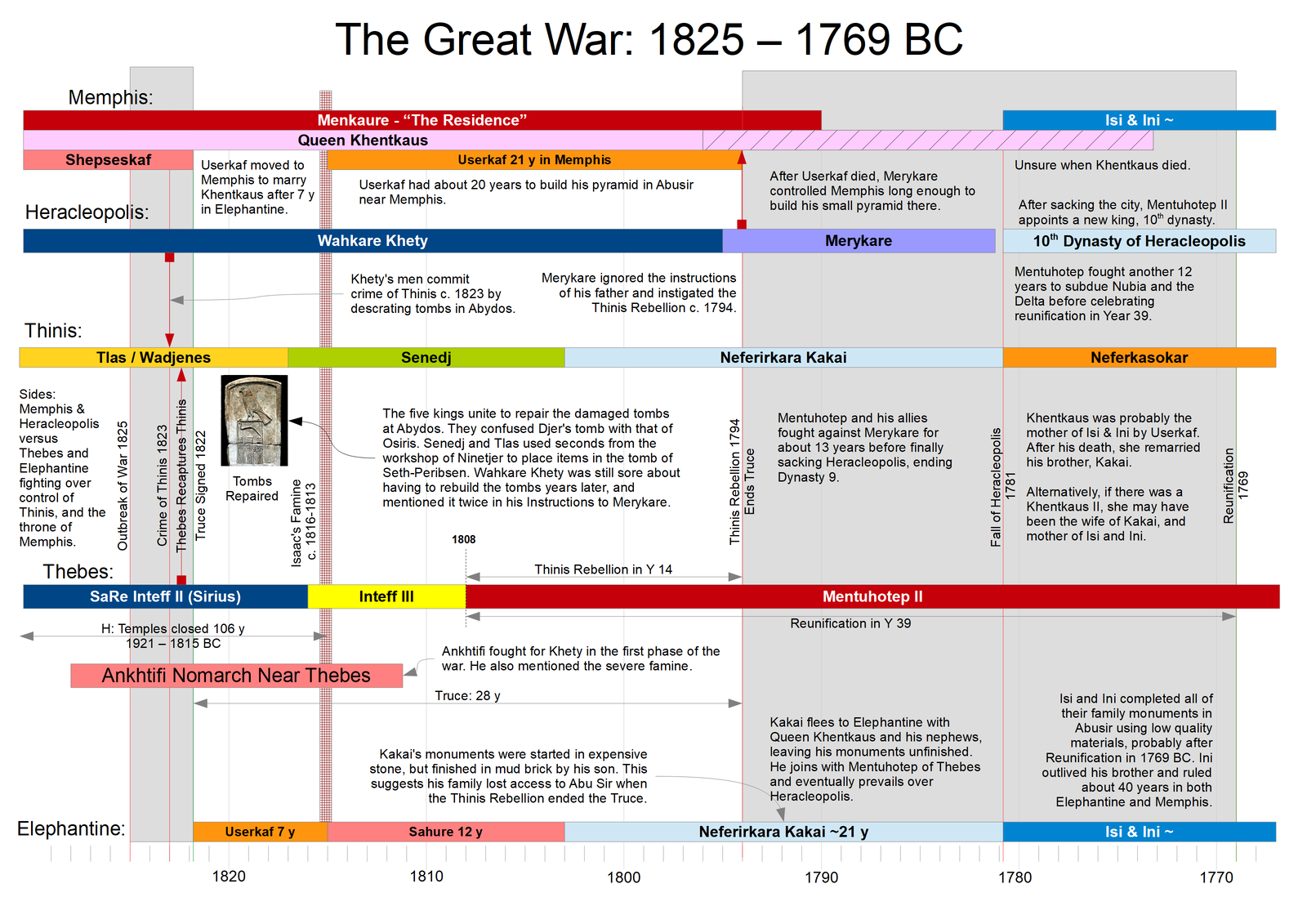
Fig. 7. Detail view of the Great War.
A more detailed look at the Great War suggests that two years after the outbreak of the war the forces of one of the local chiefs under King Wahkare Khety of Heracleopolis, fighting on behalf of “the Residence” in Memphis, went off mission and pillaged the First Dynasty tombs of Djer and Seth-Peribsen at Abydos (Hayes 1971, 475). This was referred to as the Crime of Thinis, which outraged Egyptian society. In response, King Inteff II of Dynasty 11 of Thebes retook Thinis and then negotiated a Truce (Hayes 1971, 467) which began in the third year of the Great War, 1822 BC.
The Truce enabled two important things to occur. First, based on the Middle Kingdom repairs found in them, the kings of all five city dynasties appear to us to have collaborated to repair the damaged tombs (Bestock 2008, 42–59; Dodson 2016, 17), leading to articles from Dynasty 2 being placed in the tomb of Seth-Peribsen (Wilkinson 1999, 85), and a priest of Dynasty 4 recorded in his tomb that he had served the mortuary cults of both Seth-Peribsen and Senedj (Edwards 1971, 20). Khety of Dynasty 9 mentioned the repairs to what his men had destroyed in his Instructions to Merykare (Simpson 2003, 163).
Second, Userkaf probably used the 28 year truce to ingratiate himself with Menkaure and is thought by some to have married Khentkaus I, the supposed daughter of Menkaure and widow of Shepseskaf (Rice 1999, 96). Some Egyptologists have argued that by marrying, Userkaf and Khentkaus united the two rival branches of the royal family (Verner 1994, 119). The Truce and the marriage, which appears to have occurred in the seventh year of the Truce, enabled Userkaf to build his pyramid outside of Memphis, despite the fact that Egypt was not yet reunified. However, this alienated Heracleopolis which had fought for The Residence against Userkaf in the first phase of the war, and for their loyalty they now saw their former opponent raised to the throne.
The 28 year reign of Userkaf recorded by Manetho appears to date from the start of the Truce, and his death coincides with the Thinis Rebellion, which may have taken his life. The Truce lasted 28 years until the fourteenth year of Mentuhotep II, when Merykare of Heracleopolis stirred up a rebellion in Thinis which restarted the war (Hayes 1971, 467, 479). Heracleopolis fell to Thebes 43 years prior to the reign of Amenemhat I (Manetho 1964, 63), which was the twenty-seventh year of Mentuhotep II. The Great War continued another 12 years after the Fall of Heracleopolis as Mentuhotep subdued Cush in the South and the Eastern Delta in the North, finally celebrating Reunification in his thirty-ninth year with a commemorative stele (Hayes 1971, 479).
C. The Aswan Canal
An official of Merenre I of Dynasty 6 recorded that he and his men cut the Aswan Canal in what Hayes estimates was the first year of that king (Hayes 1971, 506). Senusret III also took credit for cutting the Aswan Canal in his eighth year (Hayes 1971, 507), which Hayes assumed was several centuries later. Counting back from the death of Nitocris we can estimate the date that Merenre I cut the Aswan Canal. This date will prove to be an important synchronism with Dynasty 12.
1479 BC death of Nitocris; plus,
12 year reign of Nitocris; plus,
1 year reign of Merenre II; plus,
94 year reign of Pepi II; plus,
20 year reign of Merenre I; gives:
1606 BC ±2 years error for Year 1 of Merenre I, Aswan Canal
D. The Death of Merenre II is Synchronized with the Death of Concharis of D13
Merenre II was the penultimate ruler of Dynasty 6 according to Manetho, who called him “Menthesuphis” (1964, 55). His widow, Nitocris is given a reign of 12 years by Africanus. Using Anchor Point #16 for her death, Merenre II died 12 years earlier in 1491 BC.
The Sothis King List gives 700 years from the Dispersion (Anchor Point #2) to the death of King #25, Concharis, whom Courville identified as Khaankhra Sobekhotep of Dynasty 13. The discovery of a dual-titled statue suggests that Khaankhra also used the title Khahotepra (Davies 1981, 22–23) at some point in his career, which is found as King #25 of Dynasty 13 in the Turin Canon (Lundstrom 2020) and given a reign of 4 years, 8 months, 29 days. The SKL rounds that up to 5 years for Concharis.
2191 BC Dispersion (CFAH-2, AP #2); minus,
700 years to d. Concharis; gives:
1491 BC ±6 months for death of Concharis
1479 BC death of Nitocris (CFAH-3, AP #20); plus,
12-year reign of Nitocris (Manetho 1964, 55); gives:
1491 BC ±6 months for death of Merenre II
1491 BC is the date of the Exodus in the Ussher-Jones chronology (Jones 2019, 24). During the combined events of the ten plagues and the drowning of the army in the Red Sea, somewhere between one-sixth and one-third of all Egyptian men must have died. The deaths of Concharis and Merenre II form new Anchor Point #51 in 1491 BC.
E. Dynasty 8 ended in 1233 BC, 955 years after Menes, as per the Turin Canon
In a previous paper, we noted that Dynasty 8 ended 955 years after Menes, spanning from 2188 BC to 1233 BC (Griffith and White 2023a, Anchor Point #14). This duration in the Turin Canon appears to be a true chronological duration rather than a sum of Dynasties 1–8, parts of which reigned in parallel. The first portion of the Sothis King List, Kings #1–#32 also ends in the year 1233 BC, suggesting it was chronologically significant for some reason. That was about the year that Tukulti Ninurta I conquered Babylon (Griffith and White 2023a, Anchor Point #15), which was ruled by the Semitic Amorites and Kassite tribes who were closely related to the Amalekite Hyksos who ruled Egypt at that time.
Egyptologists identify 17 kings in Dynasty 8 from the Abydos Canon (Beckerath 1999, 66–71), though we recognize two of them, Netjerkare Siptah and Neferkare Pepi Seneb as the final kings of Dynasty 6.
For Dynasty 8, Africanus gives 146 years, while Eusebius gives 100 years. Hypothesizing that these were two subdivisions of an actual period of 246 years in the original copy of Manetho, Dynasty 8 is seen to end 246 years after Nitocris died in 1479 BC. Dividing the 246 years by 15 kings gives an average reign of 16.4 years, which is on the low side, but still reasonable.
There is a total of 181 years found in column 5.14 of the Turin Canon, which is assumed by Ryholt to represent the sum of Dynasties 6 to 8 (Ryholt 2000, 94 ff, 91). However, that period is too short to contain Dynasty 6, which can be shown from Africanus, the EKL, and SKL to have lasted 203 years. It appears to us the 181 years must refer to some subset of the 246 years from the death of Nitocris to the end of Dynasty 8.
Assembling these durations and anchor points produces the estimated dates for Dynasties 3–8 found in fig. 5 and table 4, where Dynasty 3 began with Nebka in Memphis in 2029 BC, and Dynasty 8 ended circa 1233 BC.
Heracleopolis Group: Dynasties 9–10
After Dynasty 8, Manetho jumps back to the beginning of Egyptian history with Dynasty 9 in Heracleopolis (fig. 8). Manetho gives 409 years for Dynasty 9, while Eusebius records 100 years for the same. Both durations can be seen to be chronologically true but are speaking of different periods.
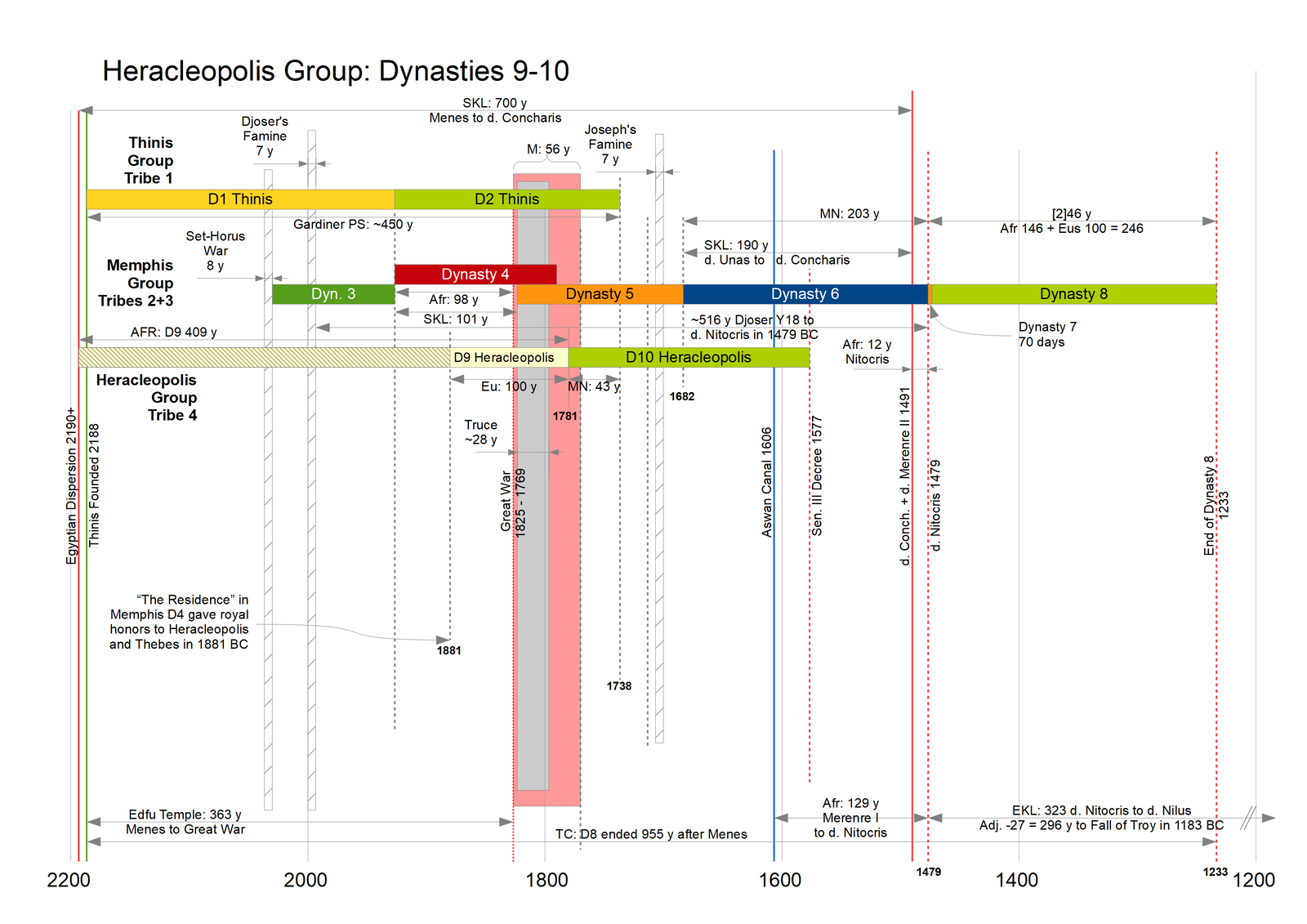
Fig. 8. Heracleopolis group—Dynasties 9–10.
In our earlier papers we identified the year 2192/2191 BC as the date of the Dispersion (Griffith and White 2022b; 2023a). Several of the Egyptian records seem to use a start date about six months later in 2090 BC.
Counting 409 years from the Egyptian date of the Dispersion in 2190 BC gives 1781 BC for the end of Dynasty 9. If we mark the end of Dynasty 9 as the Fall of Heracleopolis to Thebes, as the evidence will suggest, then Dynasty 10 ended either 185 (Manetho 1964, 63) or 204 years (Schoene 1875, vol. 2, 214) later, giving the years 1596 and 1577 BC. In our calculations for the Thebes group, we will confirm these dates by counting back from the death of Concharis, and also provide a hypothesis for the two end dates for Dynasty 10.
Mainstream Egyptologists place Wahkare Khety and Merykare as the last two known kings of Dynasty 10 (Hayes 1971, 996), though some make Wahkare Khety the founder of Dynasty 9 (Beckerath 1999, 74). However, we place Khety and Merykare at the end of Dynasty 9 for reasons that will become clear below. The death of Merykare is recognized to have been a few months before the fall of Heracleopolis to Mentuhotep II (Hayes 1971, 467), which we argue ended Dynasty 9, not 10.
Thebes/Itjtawy Group: Dynasties 11–13
We suggest that with Dynasty 11 in Thebes Manetho went back to the beginning of Egyptian history (fig. 9). According to Diodorus, some of the priests of Egypt said that Thebes was founded by Egypt’s first god-king, Osiris, while others said it was founded eight generations later (Diodorus 1935, Book I.15.1–2). The Eratosthenes King List counts the kings over Thebes and begins with Dynasty 1 followed by Dynasty 3 before listing the kings of Dynasty 11. Therefore the Theban priests appear to have counted their history back to the founding of Thinis by Menes in order to reach the dawn of Egyptian history.
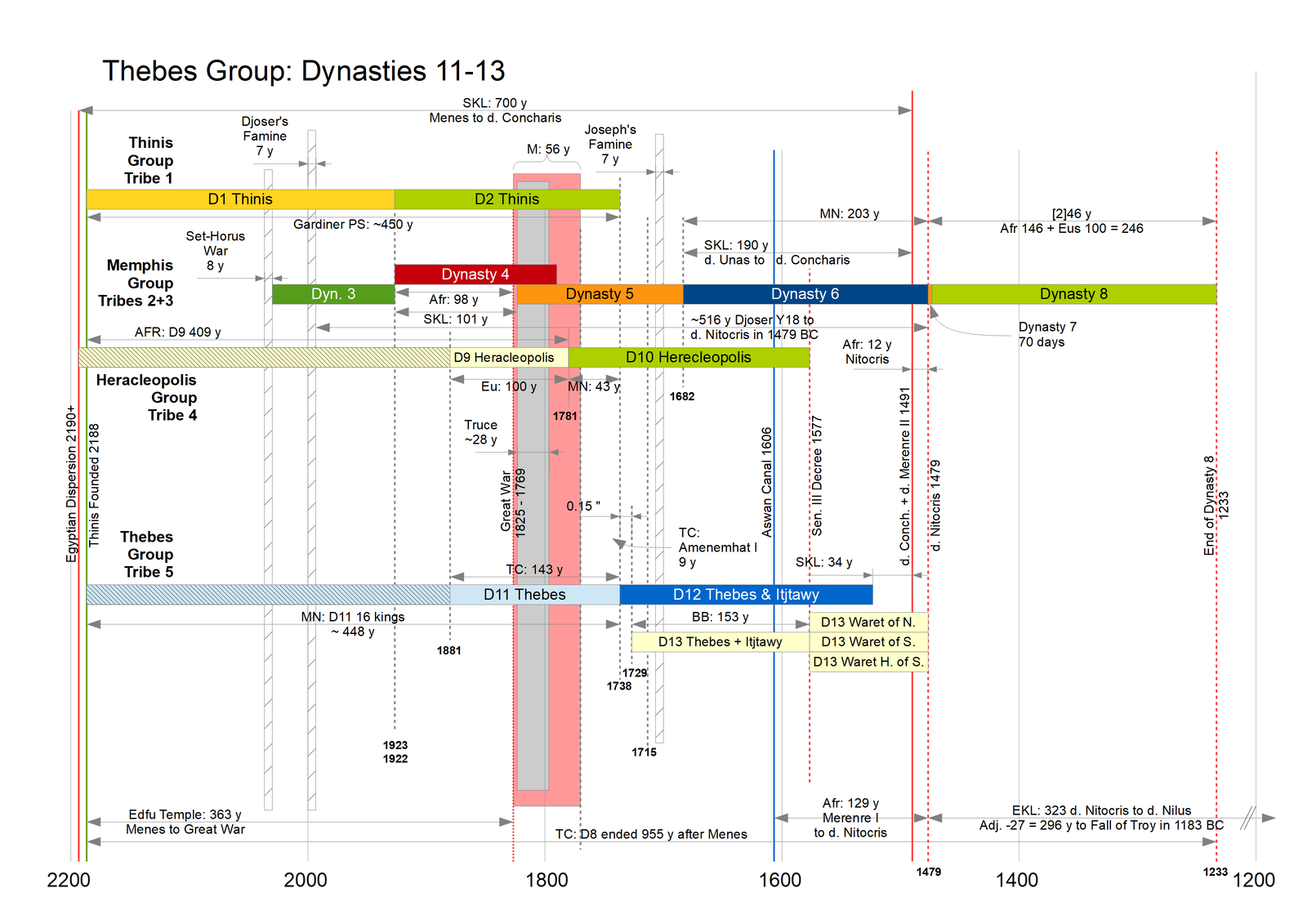
Fig. 9. Thebes group—Dynasties 11–13.
Dynasty 11 of Thebes—From the Dispersion to Dynasty 12
The full duration back to the start of 11 was not preserved by Manetho’s redactors. Instead, we are given 16 kings who reigned 43 years by Africanus and Eusebius (Manetho 1964, 63), 60 years by Barbarus (Schoene 1875, vol. 2, 214), and six kings who reigned 143 years in the TC (Lundström 2020). If we multiply 16 kings by the 28 year average reign for that period in the SKL, we arrive at an estimate of 448 years for the full length of Dynasty 11. Somewhat confirming this rough estimate, the EKL lists 404 years of kings prior to Biyres, whom we identify as Amenemhat I of Dynasty 12. However, the EKL omits three or four decades of Dynasty 11 in order to make up for listing both Amenemhat III (#19) as “Pammes” and Pepi II (#20) as “Apappus,” though their reigns overlapped by several decades.
While the 43 and 143 year durations may appear to be the result of dropping the “100” rho symbol from the Greek by a copyist, we see another solution. As can be calculated from the Turin Canon, the 43 years counted from the defeat of Heracleopolis by Mentuhotep II down to the accession of Amenemhat I of Dynasty 12. Adding the 100 years of Dynasty 9 preserved by Eusebius to the 43 years for Dynasty 11 gives the same duration of 143 years, suggesting an event that initiated the royal kingships of both Heracleopolis and Thebes in the same year. The 143 years in the Turin Canon counted from the year that the Residence in Memphis gave royal honors to the governors of both Heracleopolis and Thebes, allowing them to use the cartouches of kings.
Thus Manetho recorded durations for both Dynasties 9 and 11 back to the dawn of Egyptian history. However, it appears neither city was ruled by a true native king until 1881 BC. The monarchies in both cities were probably established by “The Residence” in Memphis, possibly in relation to the worship of “Re.” Within a few decades that would prove to have been a bad idea, as it resulted in civil war.
Dynasty 12
In order to pinpoint the dates of Dynasty 11, we will count forward and back from the Dispersion and from known dates in Dynasties 12 and 13. Starting with the death of Concharis in 1491 BC the SKL gives 34 years from the death of Ramesse Iubasse to the death of Concharis. Artapanus recorded that Palmanothes gave his daughter Merris in marriage to King Chenephres of Upper Egypt and that Merris was the adopted mother of Moses (Eusebius 2002, XXVII). Recognizing Palmanothes as Aa Bau Amenemhat III, Merris as Merit Ra Sobekneferu, and Chenephres as Khaneferre Sobekhotep, we have a synchronism tying Sobekneferu, the last ruler of Dynasty 12, to Khaneferre Sobekhotep of Dynasty 13. In the SKL, we recognize Ramesses Iubasse to be the Golden Horus name, “User Bau” of the same king, Khaneferre Sobekhotep, transliterated into “Iubasse.” Given that married couples often die within a short time of each other, we can use the death of Ramesses Iubasse as an approximation for the death of Sobekneferu, and thus the end of Dynasty 12, in 1525 BC, plus or minus a couple of years. Counting from the Dispersion:
2190 BC Egyptian date for Dispersion; minus,
409 years of Dynasty 9; gives:
1781 BC ±1 years, Fall of Heracleopolis, end of Dynasty 9; minus,
43 years dominance of Dynasty 11; gives:
1738 BC ±1.5 years, End of Dynasty 11, start of Dynasty 12; minus,
213 years of Dynasty 12 (Turin Canon); gives:
1525 BC ±2 years, end of Dynasty 12; minus,
34 years of Kings #24 and #25 of SKL; gives:
1491 BC ±2.5 years, Death of Concharis; plus,
700 years of SKL back to Menes; gives:
2191 BC ±3 years, Egyptian Dispersion Date
As the durations agree within their error ranges, both forward and back, we have a triangulation forming new Anchor Point #52, the End of Dynasty 12 in 1526/1525 BC.
We can confirm this estimate for the end of Dynasty 12 by comparing the three external durations we found in Griffith and White (2023a), Anchor Point #18 for 1577 BC, the year Senusret III returned from his nine year Asian campaign and established an astronomical college on the Euphrates (Diodorus 1935, Book I.56.2; Book I.31.9). To do that we will estimate the duration from the death of Senusret III to the death of Sobekneferu and see if the numbers work.
Senusret III, whose highest attested year is 39 (Baker 2008, 400), is believed to have had a 20-year coreign with his son Amenemhat III because of a dual-dated papyrus (Baker 2008, 27). We will argue for a shorter coregency below, but for the purpose of this estimate, we will use the widely accepted 20 years. The highest attested year for Amenemhat III is 46–48 (Baker 2008, 29), which also shows evidence for a short coreign with Amenemhat IV of 2 to 4 years. The Turin Canon, which doesn’t normally count coreigns, gives 9 years 4 months to Amenemhat IV, and 3 years 11 months to Sobekneferu. Assuming the 9+ years for Amenemhat IV does not include the coreign, we make the following calculation:
1525 BC ±2 years approximate death of Sobekneferu; plus,
4 years reign of Sobekneferu rounded up; plus,
9 years of Amenemhat IV, rounded down; plus,
48 years ±2 years total reign of Amenemhat III; minus,
20 years coreign of Senusret III with his son; gives:
1566 BC ±9.5 years error approximate death of Senusret III
Senusret III campaigned in Nubia from years 8 to 19 (Baker 2008, 400), sometime after which he campaigned in Asia for 9 years (Diodorus 1935, Book I.55.10).
39 year reign of Senusret III; minus, 19 years to end of Nubian Campaign; minus, 9 year Asian Campaign; gives: 11 years before his death as earliest end for Asian campaign; plus, 1566 BC approximate death of Senusret III; gives: 1577 BC as the earliest date he could have returned from Asia
Thus for this estimate, the earliest year he could have returned from his Asian campaign to reorganize Egypt would have been 1577 BC, and the latest 1567 BC. Our externally triangulated date for the founding of the Astronomical College, 1577 BC, falls within that range, showing that our method is reasonably accurate. We will fine-tune our estimate for the dates that Senusret III reigned in the Egyptian Synchronisms section, below.
The Turin Canon records the duration of Dynasty 12 as 213 years, 1 month, and 17 days. Counting back 213 years before 1525 BC gives 1738 BC for the accession of Amenemhat I, new Anchor Point #53. Counting back 43 years to the Fall of Heracleopolis gives 1781 BC, which matches our countdown from the Egyptian Dispersion to the end of Dynasty 9. Thus we have a triangulation for the Fall of Heracleopolis and the end of Dynasty 9 in the year 1781 BC, new Anchor Point #54. Counting back another 100 years to 1881 BC gives us the year that royal honors were given to the rulers of Heracleopolis and Thebes, new Anchor Point #55. The Turin Canon counts Dynasty 11 from that year, as does the 100 year duration of Dynasty 9 in Eusebius.
The Turin Canon also gives reigns for Mentuhotep II (51 years), Mentuhotep III (12 years), and a lacuna of 7 years for Mentuhotep IV. Adding these to the year 1738 when Amenemhat I usurped the throne of Thebes, the reign of Mentuhotep II began in 1808 BC, new Anchor Point #56.
Two events of the Great War are dated to the reign of Mentuhotep II. The Thinis Rebellion occurred in year 14, and the celebration of Reunification occurred in year 39 (Hayes 1971, 467, 479). Using 1808 BC for his reign places the Thinis Rebellion in 1794 BC, and Reunification in 1769 BC.
A tomb biography in Dendera stated that the war over Thinis lasted 56 years (Hayes 1971, 475). Adding 56 to the year of Reunification gives 1825 BC, which matches the date for the start of the Great War that we had calculated from the 363 year Edfu Temple duration (Fairman 1935). A second way to confirm this is to add the 28 year reign of Userkaf (Manetho 1964, 51) to the year of the Thinis Rebellion, which gives 1822 BC, the same year that the SKL begins Dynasty 5, and corresponding to the third year of the Great War when the Truce was made. Adding three years of the war before the Truce to 1822 gives 1825 again for the start of the Great War. Thus we have a triple triangulation that ties together Dynasties 2, 4, 5, 9, 10, and 11, confirming that Anchor Point #20 for the Great War was correct and giving us an end date for the Great War, which modifies Anchor Point #20, the Great War from 1825 to 1769 BC.
Looking again at Dynasty 10, using the longer 204 year duration of Barbarus from the Fall of Heracleopolis comes to 1577 BC, which matches our triangulated date for the year that Senusret III returned from Asia and reorganized Egypt. This suggests that Senusret III ended Dynasty 10 upon his return from Asia, probably replacing it with the Dynasty 13 “Waret of the South.”
Dynasty 13: 1729–1577–1479 BC
The Turin Canon introduces Dynasty 13 with an odd phrase:
Kings who [are] after the children of Dual King Sehotepibra, alive, sound, and healthy. (Lundström 2020, Turin Canon, 7.4)
No other dynasty in the Turin Canon is introduced in this manner. “Sehotep Ibre” was the throne name of Amenemhat I, founder of Dynasty 12. At first glance, it appears to mean the kings of the dynasty that came after the Twelfth Dynasty. But wouldn’t that be the dynasty that came after Sobekneferu, the last ruler of Dynasty 12? Why list these kings as those who followed after the children of Amenemhat I, the founder of Dynasty 12?
The SKL places kings #23, #24, and #25 after Amenemhat III, though all three are recognizable from the middle of Dynasty 13. The SKL also places King #20, Usimares, recognizable as Userkare Khendjer, between Senusret II and Senusret III. It appears that Dynasty 13 had a significant overlap with Dynasties 6 and 12 (figs. 10 and 11).
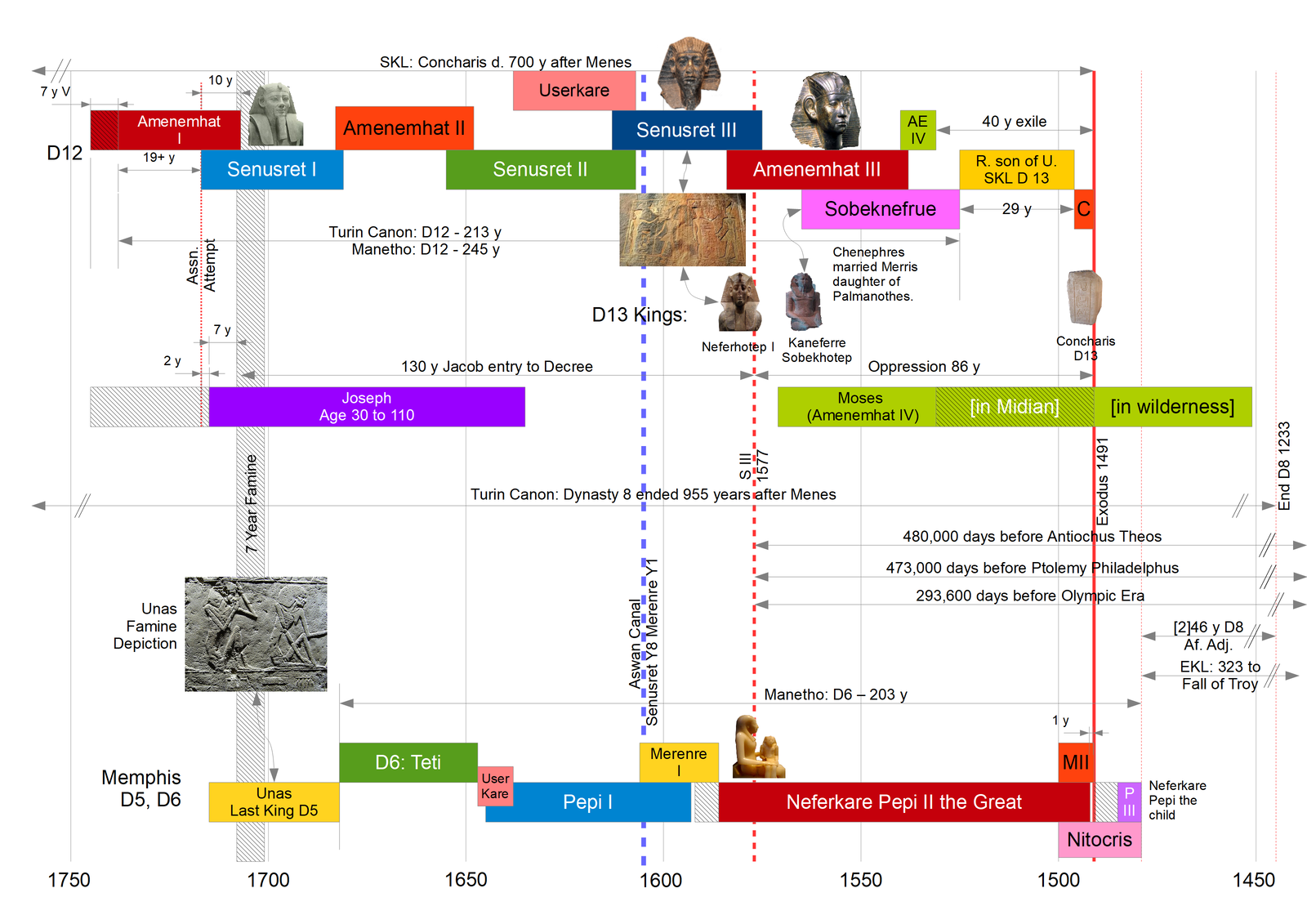
Fig. 10. Synchronisms between Memphis and Thebes groups.
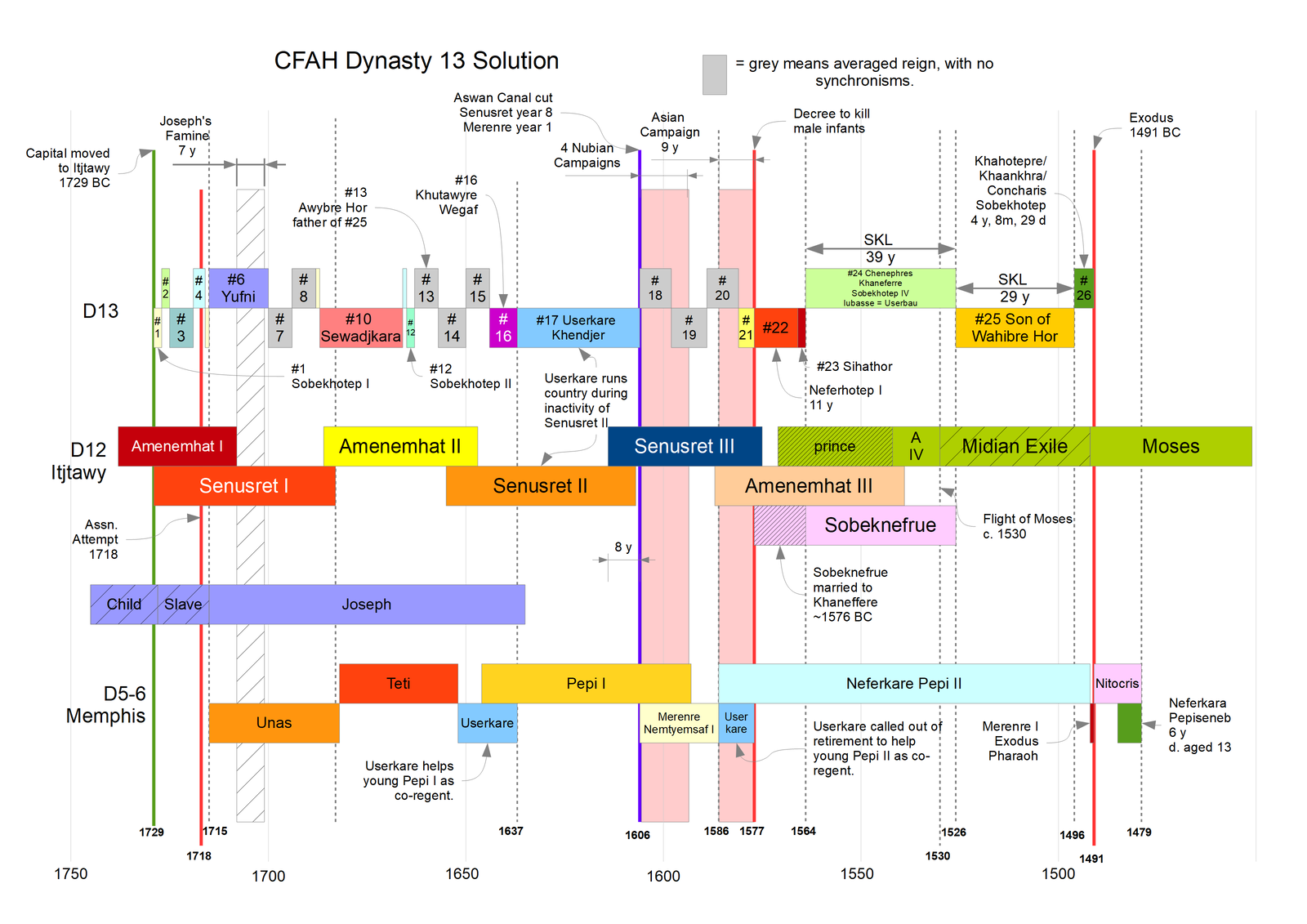
Fig. 11. Dynasty 13 simple solution.
In the Egyptian language of the Twelfth Dynasty period, to “follow after” a king meant to serve in his administration. According to Grajetski the autobiography of Ankhu the “Keeper of the Fields” stated that “he served as a temple scribe for Khakaure (Senusret III), and that he followed the ‘king’s son’ Amenemhat III when he was still young.” (Grajetski 2006, 66) The introductory phrase in the Turin Canon, “kings who [follow] after” could very well have meant “kings who [served] the children of [Amenemhat I].”
Amenemhat I is believed to have been the vizier of Mentuhotep IV who usurped the throne and later created a new capital, Itjtawy somewhere in the north (Baker 2008, 20–21). The Prophecy of Neferti was a propaganda tale that has a prophecy given to Nebka that Egypt would fragment into pieces, but a king “Ameny” from Elephantine would reunite Egypt (Simpson 2003, 214–220). While Mentuhotep II had reunited Egypt in his thirty-ninth year, the city dynasties had begun to go their own ways again after his death. The vision of Amenemhat I was apparently to create a federal government of Egypt where the Great King ruled over the city dynasties. The problem was that his viziers were not kings and were outranked by the kings of the city dynasties, who had their own viziers. The match between Dynasties 12 and 13 gives the appearance that Amenemhat created the Dynasty 13 “King” as a cabinet position to serve as something like a vice-president, with sufficient rank that the kings of Memphis, Thebes, Heracleopolis, and Avaris, would be compelled to obey them. Both the kings of Dynasties 12 and 13 had their own viziers (Grajetzki 2009, pl. 3 [bp]; Papyrus Boulaq 18), so the Dynasty 13 position was not the vizier for Dynasty 12.
Dynasty 13 had nearly 60 kings who, even using Manetho’s 453 year duration for the dynasty, would have ruled an average of less than eight years each. Egyptologists compress Dynasty 13 down to 154 years (Ryholt 1997, 197), shortening the average reign to less than three years. It seems unlikely that a dynasty whose kings ruled an average of less than three years each could have been stable. However, Callender (2003, 159) cites Stephen Quirke as having suggested that the short reigns of Dynasty 13 are best explained by a system where men of the noble houses rotated into the position for short terms. If Dynasty 13 was created as a cabinet position of Dynasty 12, then rotating nobles through terms in that office would have been stable because the longer reigning kings of Dynasty 12 provided oversight and continuity.
Osgood (2020, 268) proposed that Dynasty 13 began in parallel to Dynasty 12 but was later forked into three branches in different parts of Egypt at the same time. Our hypothesis is similar (fig. 12). Barbarus, whose dynastic numbers differed from Manetho’s, recorded 153 years for Dynasty 12, by which he appears to have meant Manetho’s Dynasty 13. 153 years is also quite close to Ryholt’s estimate for the length of Dynasty 13 (Ryholt 1997, 197).
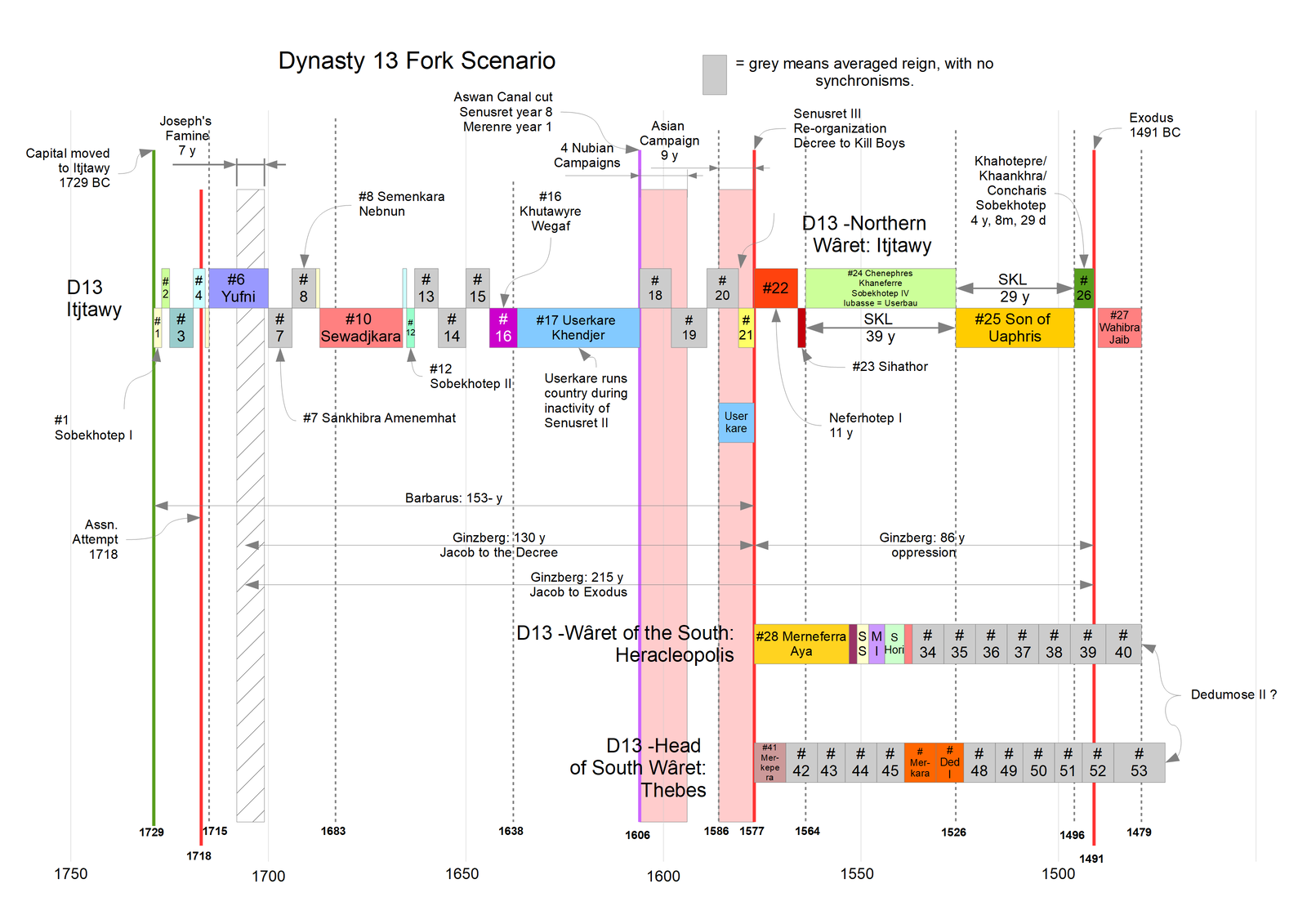
Fig. 12. Dynasty 13 forked solution.
Manetho (1964, 73) gives 453 years for the total number of years for Dynasty 13. If we subtract the 153 years from that total, the remainder is 300 years. Senusret III reorganized Egypt into three administrative divisions called “warets:” The Waret of the North, The Waret of the South, and Waret of the Head of the South, each containing 12 nomes (Callender 2002, 164). These were probably located respectively in Itjtawy, Heracleopolis, and Thebes. If he did this when he reorganized Egypt in the year 1577 as we propose, then it was 98 years from his reorganization until the death of Nitocris in 1479 BC. Three branches reigning 98 years comes to 294 years, six years short of 300. Perhaps Salitis of the Hyksos killed off Nitocris and two of the branches in 1479 BC but allowed one of the branches held by Dedimose aka “Tutimaeus” (Manetho 1964, 79) to reign six more years until they could complete their takeover and reorganization of Egypt under Amalekite administration.
Counting the 153 years prior to the 1577 reorganization, Dynasty 13 would theoretically begin in 1730/1729 BC. Amenemhat I was given a reign of nine years in the Turin Canon, though his highest attested date was 30 years (Baker 2008, 22). Manetho places Amenemhat I between Dynasty 11 and 12 and gives him a reign of 16 years. He is believed to have been the vizier of Mentuhotep IV of Dynasty 11, who reigned seven years (Turin Canon). Counting seven years before the 1738 BC start of Dynasty 12, gives 1745 BC for the start of the reign of Mentuhotep IV and his vizier Amenemhat. Sixteen years from 1745 also comes to 1729 BC, thus forming a triple triangulation for 1729 BC as the year Amenemhat I moved the capital to Itjtawy and founded Dynasty 13 to serve in his cabinet. This triangulation forms new Anchor Point #57, the Founding of Itjtawy and Dynasty 13 in 1729 BC.
1525 BC death of Rameses-Iubasse & Sobekneferu; plus,
213 years of Dynasty 12 (Turin Canon); gives:
1738 BC accession of Amenemhat I; minus;
9 year TC reign of Amenemhat I; gives:
1729 BC founding of Dynasty 13, relocation of capital to Itjtawy; minus,
153 years of the main line of Dynasty 13; gives:
1576 BC ±1.5 years for Senusret III reorganization of Egypt
The reigns of the first four kings of Dynasty 13 are preserved in the Turin Canon (Lundström 2020, Turin Canon, 7.4–8.29), and total about 13 years, though an additional king with a short reign may be missing (Lundström 2020, Turin Canon, 7.6). The fifth king is Iufni (7.9), whom Courville proposed was a possible misreading of Yusef (1977), that is, Joseph. 13+ years after 1729 comes to the year 1716/1715. This falls within one year of the 1715 date for Joseph’s promotion to “a father to Pharaoh” (Genesis 45:8) in the Ussher-Jones Chronology (Ussher 2003, §132).
The reason that Barbarus records the 153 year duration may be that by splitting Dynasty 13 into the three “warets” in 1577, Senusret III effectively demoted the Dynasty 13 Kings, reducing their authority to little more than arch-nomarchs with 12 nomes each. The main run of Dynasty 13 with the full power of the Egyptian state would thus have lasted only 153 years.
Ankhu and Neferhotep connected to Senusret III and Amenemhat III
The perplexing problem of the life of Ankhu provides strong evidence that Dynasty 13 was contemporary with Dynasty 12. Quoting Grajetzki (2006, 55, 66 emphasis added):
The ‘overseer of the fields’. Ankhu, who started his career under Senusret III and seems to have lived into the Thirteenth Dynasty, will be discussed later . . .
The name of the first ruler of the Thirteenth Dynasty is, then, still disputed, but it seems likely that it was a certain Khutawyre Wegaf. . . . Another group of sources perhaps related to the family of [Wegaf] are monuments of the ‘royal sealer’ and ‘overseer of fields’, Ankhu. Ankhu states in a tomb inscription that he served as temple scribe for Khakaure (Senusret III) and that he followed the ‘king’s son’, Amenemhat III, while he was still young. This must have happened during the long coregency of the two kings. The inscription dates Ankhu securely to the end of the Twelfth Dynasty. In the same inscription Ankhu is called ‘born of the king’s sister Merestekhi’. On other monuments relating to Ankhu the woman does not have this title. She seems to have been appointed at one point in her life to ‘king’s sister’, obviously when her brother, who was one of the first kings of the Thirteenth Dynasty—perhaps Wegaf himself, became king.
Based on the conventional chronology (fig. 13), Grajetzki’s dilemma is that it seems impossible that the mother of a man, Ankhu, who was an adult in reign of Senusret III could have been the sister of the King Wegaf in Dynasty 13 who reigned, at the very earliest, 89 years after the birth of his nephew. This is also the driving consideration of Ryholt’s and Grajetzki’s attempts to place Wegaf as the first king of Dynasty 13. If Wegaf could be placed as King #1 of Dynasty 13, the chronology could conceivably work, though Wegaf would still have been born 40 years after his sister, Akhu’s mother. To leave Wegaf in position #16 where the Turin Canon places him adds more than 80 years to the approximately 69 years from Anku’s birth to the end of Dynasty 12. In other words, Akhu’s mother became “king’s sister” of King Wegaf 167 years after she bore her son. That stretch defies every chronology.
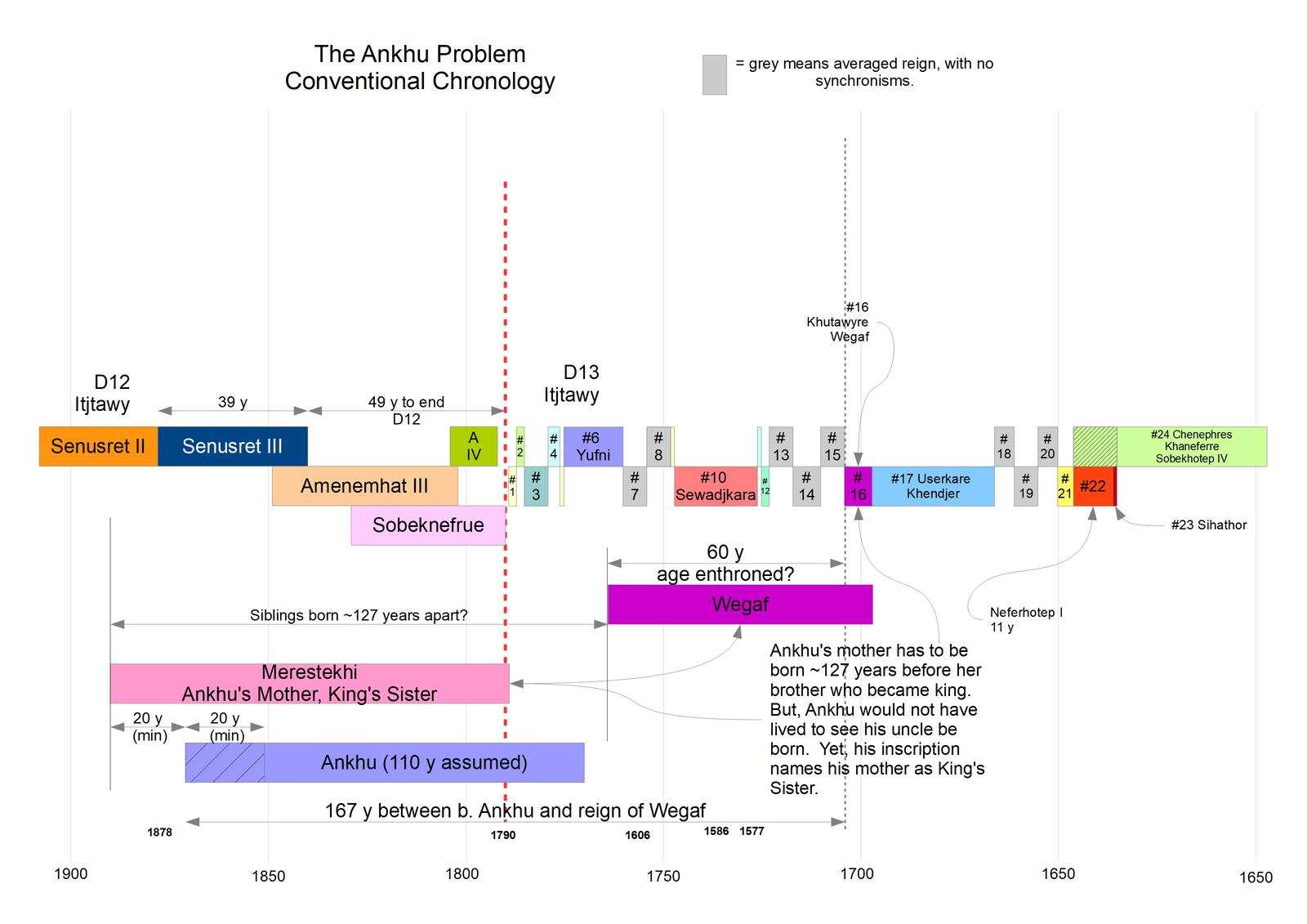
Fig. 13. The Ankhu problem in conventional chronology.
However, by placing Dynasties 12 and 13 as contemporaries, Wegaf served as the Dynasty 13 king in the cabinet of Dynasty 12 somewhere between kings #1 and #16 prior to the reign of Senusret III. While Ryholt suggests that Wegaf should be considered the first king of that dynasty, he also admitted that it appears that the prenomons of #1 and #16 were switched (Ryholt 1997, 316ff). Kitchen conclusively demonstrated that Wegaf must have been King #16, not King #1 (Kitchen 1967, 45, note 2). For Ankhu to be “young” in the reign of Senusret III, he was probably under 30 years of age, which places his birth no earlier than 1644 BC. His mother was probably the sister of one of the Dynasty 13 kings, #13 to #16. As it happens, the only other possible location for Wegaf in the Turin Canon is #16. Our alignment of Dynasties 12 and 13 neatly solves the Ankhu problem, confirming that Dynasties 12 and 13 were contemporary (fig. 14).
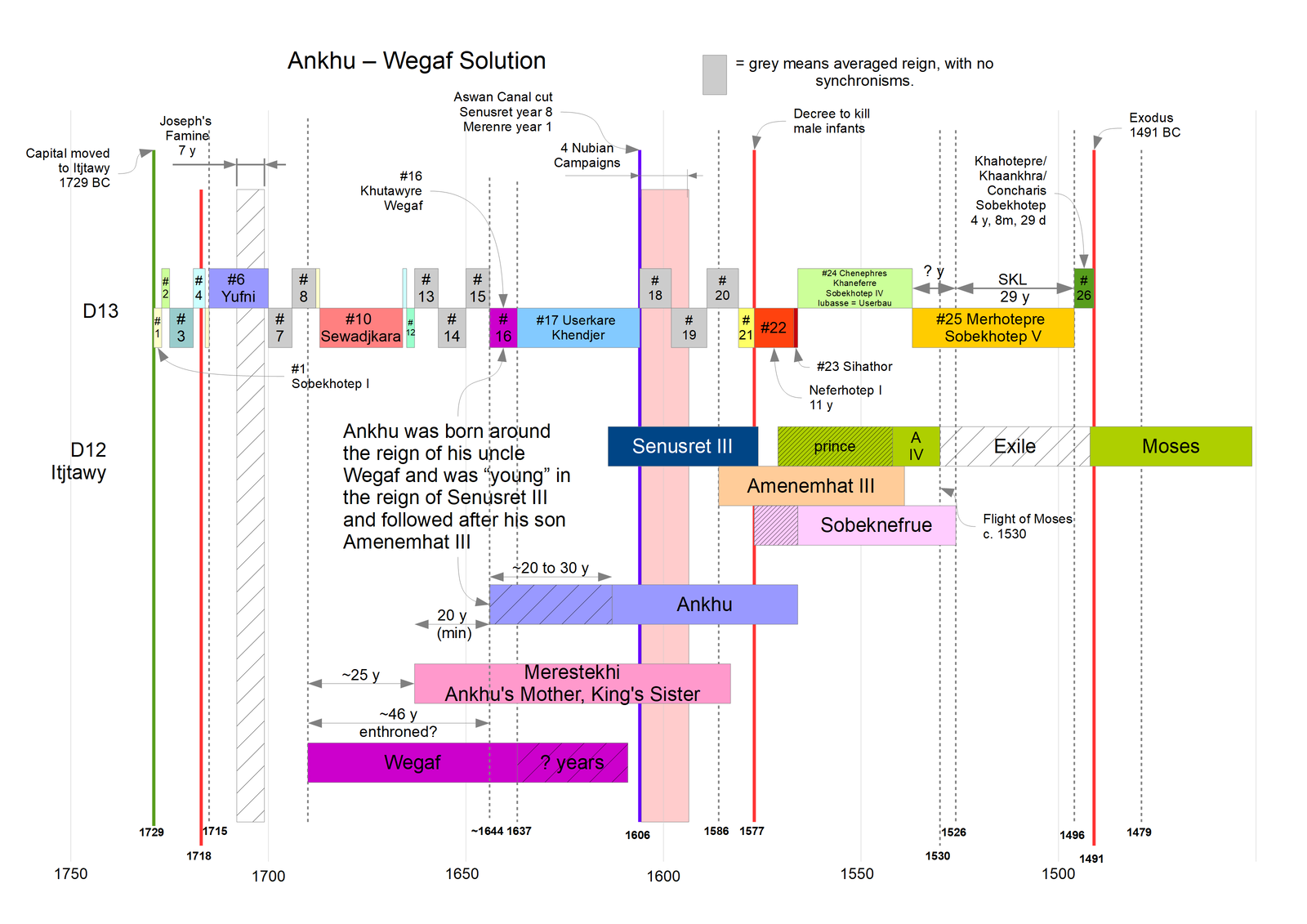
Fig. 14. The Ankhu solution in CFAH.
Avaris Group: Dynasties 14 and 15
Next Manetho lists kings of Dynasty 14 in Xois, by which he is currently believed to have meant Avaris (Ryholt 1997). Xois was spelled Sais, while the Saite or Sethroite Nome was the location of Avaris (Manetho 1964, 81, note 3). A copyist may easily have confused one for the other. Given that Dynasties 14 and 15 were both seated consecutively in Avaris, they form a group in Manetho’s dynastic order (fig. 15).
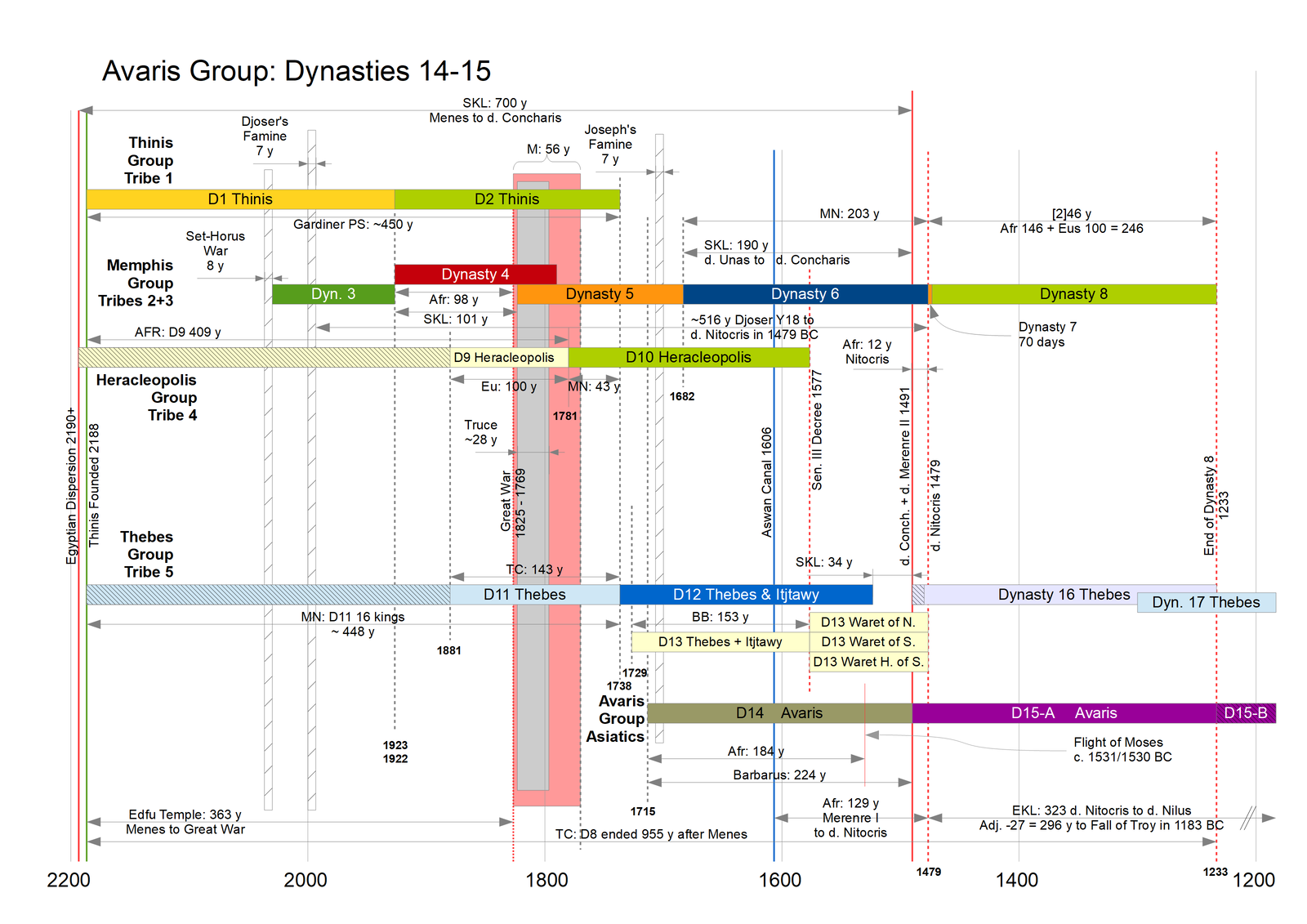
Fig. 15. Avaris group—Dynasties 14–15.
Dynasty 14–c. 1715–1491 BC
The Turin Canon lists 57 kings of Dynasty 14 (Lundström 2020, Turin Canon, 9.1–10.21) most of whose seals have been excavated and cataloged. The first 30 names are in good condition and it begins with Nehesy, a name that means the Cushite. In addition to those, the seals of another 12 kings suspected to be Fourteenth Dynasty have also been found, though their placement is debated. The additional Dynasty 14 rulers with uncertain placement include Yaqub Har and Yakbim, both Semitic names.
Africanus and Eusebius give 184 and Barbarus 224 years for Dynasty 14 (Manetho 1964, 75; Schoene 1875, vol. 2, 214). We see a tight fit for the 224 years from Barbarus. Two hundred and twenty-four years before the Exodus in 1491 BC was 1715 BC, the year that Joseph AKA “Yufni” was promoted to the right hand of the king. It is logical that upon receiving the prophecy of the coming famine, Senusret I may have taken steps to reorganize Egypt, placing a petty king over the land of Goshen to rule the Asiatics there and make sure they were putting away food during the years of plenty. When Jacob came to Egypt nine years later, Pharaoh Senusret I may have made him the petty king of the Delta with his seat in Avaris (Genesis 47:1–11).
One of the early kings associated with Dynasty 14 was “Yaqub Har” whose throne name was “Mer-User-Re” (Baker 2008, 503). In Hebrew Yaqub Har could mean Jacob of the Mountain or Jacob the Great. Jacob’s second name was Isra-el, meaning “God contends.” The throne name “Mer-User-Re” while having a similar sound, User-[theophoric] versus Isra-[theophoric], has a different meaning in Middle Egyptian: “Loves the Soul of Re” or “Loves the Soul of the Creator God.” While that might be a name that could fit Jacob, the only firm evidence that Yaqub Har might have been Jacob was that they had the same given name, they appear to have lived around the same time, and they both held authority over the same location, Avaris the seat of Goshen, later called the Sethroite Nome.
In Hebrew, the word Jacobite, meaning a person of Jacob’s tribe, would be written Ya’aqobi, and the plural as Ya’aqobim. Another early king of Dynasty 14 was named “Ia-ak-bi-im” or Yakbim (Ben Tor 2010, 99ff), which looks quite close to the Hebrew for “Jacobites.” This could possibly be a reference to Joseph’s brothers ruling the province of Goshen from Avaris after the death of Jacob.
It is possible that the Turin Canon begins its list of Dynasty 14 kings with the 1577 BC Decree of Senusret III. The listed kings whose reigns are preserved had an average reign of about a year and a half, with some only reigning a few months. It seems likely that Senusret III and Amenemhat III rotated trusted men through this position in a similar way to Dynasty 13. In the 86 years from the Decree to the Exodus, the 57 listed kings would have had an average reign of 18 months, which closely agrees with the recorded reigns in the Turin Canon.
By appointing the petty kings of Dynasty 14, the Pharaoh would have kept control over the Israelites, especially after they were enslaved by the decree of Senusret III in 1577. The kings of Dynasty 14 during the years of the Oppression would have been Quislings. Thus Dynasty 14 could reasonably have continued until the year of the Exodus, at which point Avaris was evacuated by the departing Israelites.
Interestingly, the 184 year duration from Africanus is exactly 40 years less than the 224 duration from Barbarus. What happened 40 years before the Exodus that might have affected Pharaoh’s administration of Avaris? Moses killed an Egyptian official and fled into exile. It is possible that the “Hebrew Quisling” administration of Avaris was ended by Pepi II in 1530 and replaced with officials from other parts of Egypt or Nubia until the Exodus in 1491 BC.
Dynasty 15—Invasion of the Amalekites
The Fifteenth Dynasty consisted of Shepherd Kings. There were six foreign kings from Phoenicia, who seized Memphis : in the Sethroite nome they founded a town, from which as a base they subdued Egypt. (Manetho 1964, 91)
The Hyksos, whom Manetho called the “Shepherd Kings” are believed to have based their operations in Avaris, which was located in the “Sethroite Nome.” Josephus quotes another passage of Manetho in more detail:
In the Saite [Sethroite] nome [Salitis] found a city very favourably situated on the east of the Bubastite branch of the Nile, and called Auaris after an ancient religious tradition. This place he rebuilt and fortified with massive walls, planting there a garrison of as many as 240,000 heavy-armed men to guard his frontier. (Manetho 1964, 81–83)
The Ipuwer Papyrus is a Nineteenth Dynasty papyrus whose origin is believed to date no earlier than the Twelfth Dynasty (Quirke 2014, 167). Several historians have pointed out that it appears to describe the plagues upon Egypt that occurred during the Exodus (Velikovsky 2009, 52–58; Stewart 2003, 252–270). The primary argument against this interpretation is that the text describes the invasion of Asiatics rather than their departure (Enmarch 2011, 174). However, the Amalekites encountered by the Israelites after crossing the Red Sea were said by Jewish tradition to have conquered Egypt and taken the lists of Israelite slaves from the Egyptian records (Ginzberg 2001, vol. 3, 27). The Egyptians viewed the Abrahamic tribes as shepherds (Genesis 46:32–34), therefore in the Exodus year from their viewpoint the Israelites were one group of shepherds who departed Egypt, and were replaced by another tribe of shepherds, the Amalekites, who swept in as quoted by Josephus above.
Josephus quoted Manetho as saying that Salitis, the first Hyksos king, found Avaris as an existing city and rebuilt it (Manetho 1964, 81). Thus the primary objection against the Ipuwer Papyrus describing the Exodus is overcome by the fact that the Egyptian data shows the Amalekite Hyksos conquered Egypt shortly after the Israelites had departed.
To the Egyptian mind, the Hyksos were Abrahamic tribes. Thus, the Edomites and Amalekites were enemy Hyskos. But the Israelites were also viewed as being Hyksos, at least by the later Egyptians of the Ptolemaic Era who wrote these histories. This accounts for the evidence that the Hyksos had peacefully integrated in the Delta for about two centuries (Bietak 2006, 285; Mourad 2015, 130) prior to the start of Dynasty 15. The period of peaceful integration would have been the sojourn of the Israelites in Egypt for the 215 years prior to the Exodus.
The Pentateuch claims that Moses composed it during the Wilderness Wandering of Israel (Exodus 17:14; Deuteronomy 31:24), which would have ended 40 years after the Exodus, in 1451 BC. During that period the Israelites were encamped adjacent to the territory of Edom (Numbers 20). Two of the final three kings of the Edomites listed in Genesis 36:37–39 appear to match the first two of the Amalekite Hyksos kings of Dynasty 15 (Manetho 1964, 91). (Table 7) Amalek was a subtribe of Edom (Genesis 36:12). If Dynasty 15 conquered Egypt in 1491/1490, then Salitis and Bnon would have been known to Moses during the 40 years in the wilderness, especially considering that the Hyksos still claimed Edom as their homeland. The Hyksos kings in Egypt continued to use the Egyptian title, heqau khasut, “Ruler of Foreign Lands, ” (Bourriau 2002, 174–175) implying they also continued to rule their home territory, which was the foreign land referred to in the title.
Table 7. Hyksos kings named in Genesis.
| Hyksos Kings of Genesis 36 | |||
|---|---|---|---|
| Dynasty 15 Name | Genesis 36 Name | Source | Comment |
| Salitis | Saul of Rehoboth | Genesis 36:37 | Conquered Egypt |
| Bnon | Baal Hanaan | Genesis 36:38 | |
The Amalekite Dynasty 15 continued through the entire Second Intermediate Period (or Hyksos Intermediate Period) which we view as the biblical era of the Judges. Thus fixing the end date for that Dynasty is beyond the scope of this paper and will be handled in the next paper of the CFAH series.
Summary of the Interlocking Durations Argument
In review, the durations from the chroniclers for Dynasties 2, 9–12, and 4–5 dovetail precisely with the Great War, and also agree within three years for the date of the Dispersion. It also appears that Dynasty 2 was replaced about the same time that Amenemhat I established Dynasty 12, and about 160 years later Dynasty 10 may have been replaced by the Dynasty 13 “Waret of the South” when Senusret III reorganized the government of Egypt. Fig. 3 charts the interlocking durations cited above. In the diction of accountants, “the numbers foot.” The multiple interlocking synchronisms also create redundancy which allows event dates to be derived by several different paths. Merely plucking out one duration by disqualifying it is insufficient to disprove the entire matrix. Fig. 16 shows the Egyptian dynasties alongside the biblical patriarchs.
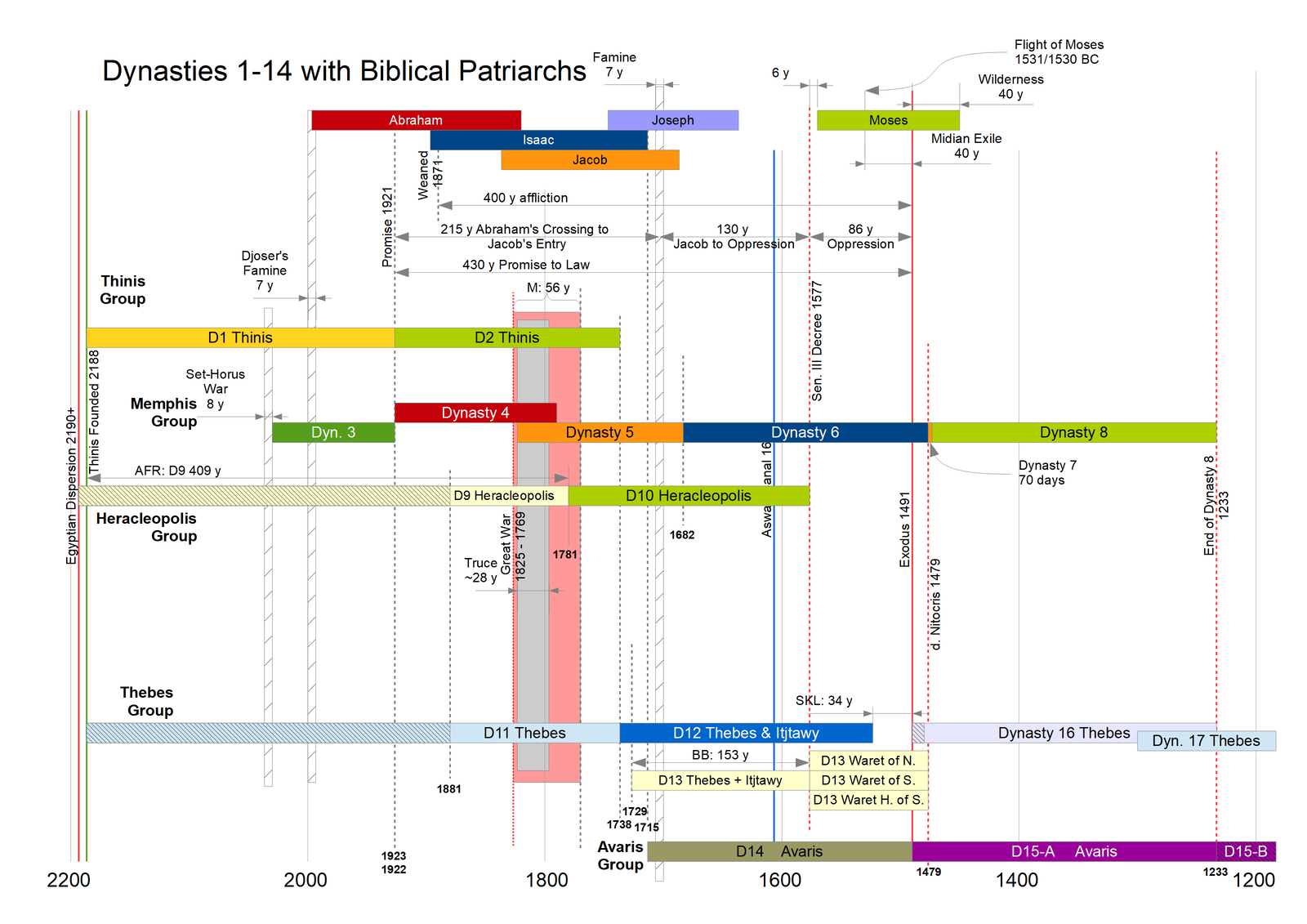
Fig. 16. Dynasties 1–14 with the patriarchs.
Argument 3. Synchronisms Between Egyptian Dynasties
If, as we and others have proposed, the Old and Middle Kingdoms were contemporary rather than sequential, then many synchronisms should be found between the dynasties so categorized. Fourteen such synchronisms follow.
The Dispersion—Anchor Point #2
Dynasties 1 and 9 are shown to count their origin back to either the Dispersion circa 2191 BC or the founding of Thinis 3 years later in 2188 BC. The “16 kings” of Dynasty 11, the earlier of whom were just governors, multiplied by the 28-year average reign from the SKL, go back 448 years before 1738 to about 2189 BC, thus falling within a few years of the Thinis founding date. In addition to those three cities, Courville argued that Memphis was founded only 28 years after the Dispersion after the War of Unification by Menes (Courville 1971, 181–182).
Famine of Djoser and Uenephes
As argued above, the first seven year famine synchronizes the famines of Dynasties 1 and 3 with the famine of Terah from Jewish tradition (Charles 1913, 11.13), during which Abraham was born. In the previous paper, CFAH #5 (Griffith and White 2023c), we found durations that triangulated the reign of Ninyas or Gilgamesh from 2006 to 1968 BC, as well as showing that he had a 12 year coreign with his mother, Ishtar/Semiramis I, who died in 1994 BC (Anchor Point #47). The Epic of Gilgamesh says that Ishtar sent a seven-year famine; and Gilgamesh’s famine can be seen to have ended in 1994 BC; therefore, it appears to be the same seven-year famine as that of Djoser. Djoser’s famine is seen to be a major synchronism that unites the chronologies of Sumer, Thinis, Memphis, and Abraham.
The Great War: 1825–1769 BC
The Great War synchronizes Dynasties 2, 4, 5, 9, 10, and 11 (fig. 17). Khety three times mentions “the Residence” [of Dynasty 4 in Memphis] as a higher authority in his Instructions to [his son] Merykare (Simpson 2003, 158, 159, 162).
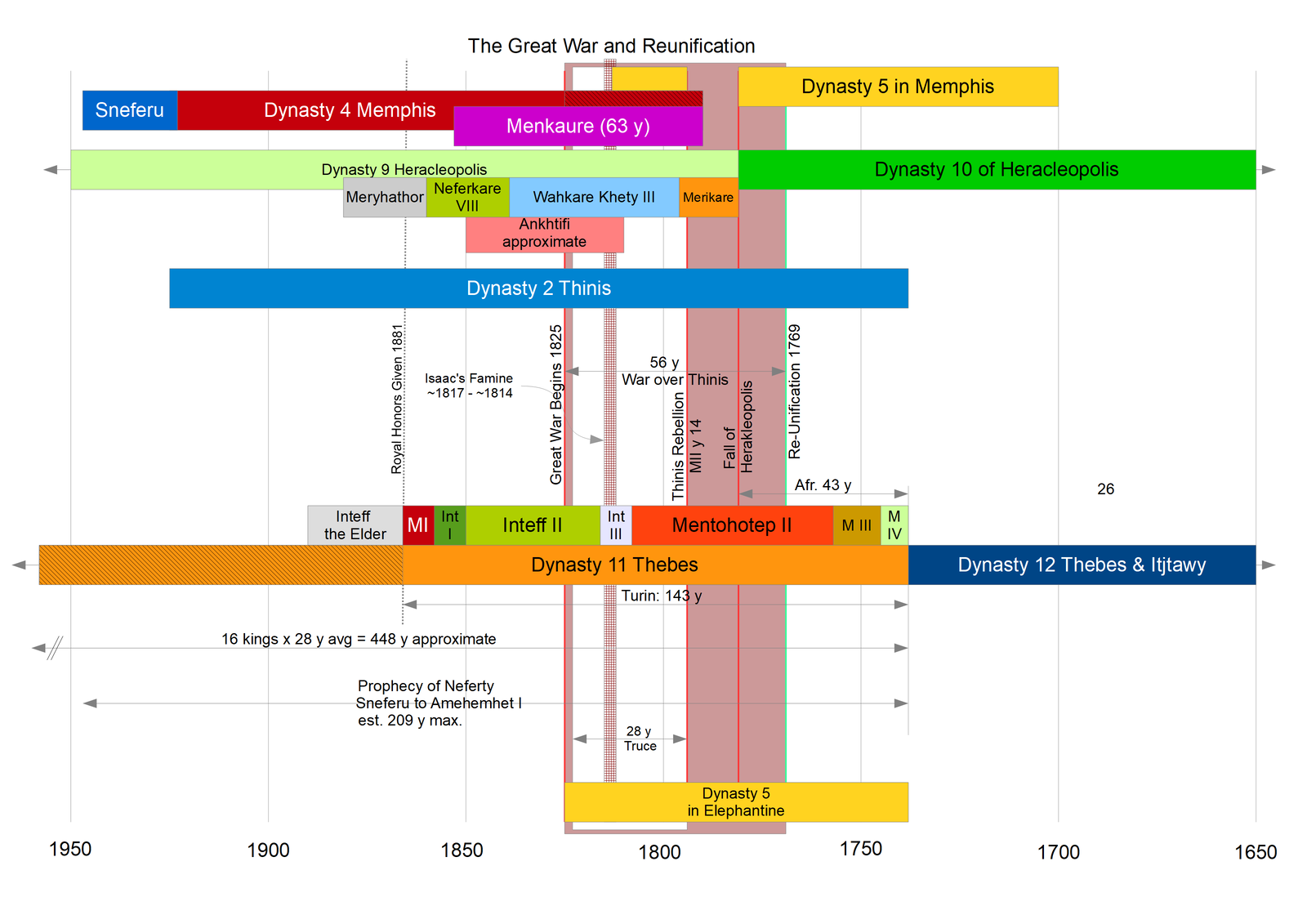
Fig. 17. Bigger picture of the Great War.
Fall of Heracleopolis
While a dated monument for the Fall of Heracleopolis has not been found, it had to have occurred between the Thinis Rebellion and Reunification, which occurred in the fourteenth and thirty-ninth years of Mentuhotep II. We can triangulate the fall of Heracleopolis from five durations. Dynasty 9 lasted 409 years from the Dispersion, which Egyptian sources appear to have counted as 2190 BC.
2190 BC Dispersion; minus,
409 years of Dynasty 9; gives:
1781 BC ±6 months, Fall of Heracleopolis
Using the data in the Turin Canon, the twenty-seventh year of Mentuhotep, 1781 BC, was 43 years before the end of Dynasty 11. That year falls in the range between years 14 and 39, and therefore was most likely the year Heracleopolis was sacked. This date also triangulates with Eusebius’s 100 year duration for Dynasty 9.
Neferirkare Kakai Found in Both Dynasty 2 and Dynasty 5 Simultaneously
The third king of Dynasty 5 was named Neferirkare Kakai. He is found in both Dynasty 2 and Dynasty 5 under the Greek transliteration of his name, Nephercheres (Manetho 1964, 37, 51). In the CFAH model, both “Nephercheres” reigned at the same time, because they were one person holding office in two cities: Thinis and Elephantine. We hypothesize that his older brother, Userkaf, after marrying Khentkaus and moving to Memphis, installed his triplet brothers, Sahure as king of Elephantine, and Neferirkare in Thinis. When Sahure unexpectedly died, Userkaf installed Neferirkare in Elephantine as well. Thus Neferirkare is listed as Nephercheres in both Dynasties 2 and 5.
Unas Famine matches Senusret I Famine
Unas, the last king of Dynasty 5 depicted starving Asiatics on his pyramid causeway (Baker 2008, 483). Given the 203 year duration of Dynasty 6 prior to the death of Nitocris in 1479 BC, the 33 year reign of Unas would have been from 1715 to 1682 BC, entirely overlapping with Joseph’s Famine, which was 1708 to 1701 BC in the Jones chronology (Jones 2019, 56A). A multiyear famine was recorded in the reign of Senusret I (Stewart 2003, 130–131). The Nile Famine Tablet of an official named Mentuhotep, U.C. 14333, mentions an extreme low flood of the Nile in year 25 of an unnamed king. Rudd (2019) cites Simpson (2001) to the effect that several scholars place it in the reign of Senusret I, while Goedicke (1962, 25) who translated the tablet, assigned it to Dynasty 11.
The sources seem to use two different start dates for the reign of Senusret I, with the Turin Canon starting his reign after 9 years of the reign of Amenemhat I, which would be 1729 BC, the same year the capital was moved to Itjtawy, suggesting Senusret I may have served as a king of Upper Egypt starting the year that his father had moved the capital to the North. He would not have been elevated to coregent as the Great King of Dynasty 12 until after the assassination attempt in the twentieth year of Amenemhat, 11 years later (Stewart 2003, 77–78). The record low Nile 25 years after 1729 BC comes to 1704 BC, the midpoint of Joseph’s Famine in the Ussher-Jones Chronology, thus forming another triangulation and Anchor Point #58—Joseph’s Famine from 1708 to 1701 BC.
Userkare goes from D6 to D12/13 and back to D6
Another important king of Dynasty 13 was Userkare Khendjer, who is listed in both the SKL and EKL as reigning 31 years between Senusret II and Senusret III (Manetho 1964, 219, 237) (fig. 18). Another Userkare is known from the Abydos King List as king #35 listed between Teti and Pepi I (Lundström 2020, abydos-canon). When placing the dynasties as the durations and synchronisms here suggest, it becomes apparent that Userkare served as a regent for Pepi I in Dynasty 6 after the murder of Teti (Grimal 1992, 81) until the he was promoted by Senusret II of Dynasty 12 to the Dynasty 13 cabinet position as Userkare Khendjer. Manetho gives Pepi a reign of 53 years, while the Turin Canon gives him a reign of only 44 years. Interpreting the difference as a nine year coregency under Userkare when Pepi I was a minor, we can calculate the date the coregency ended.
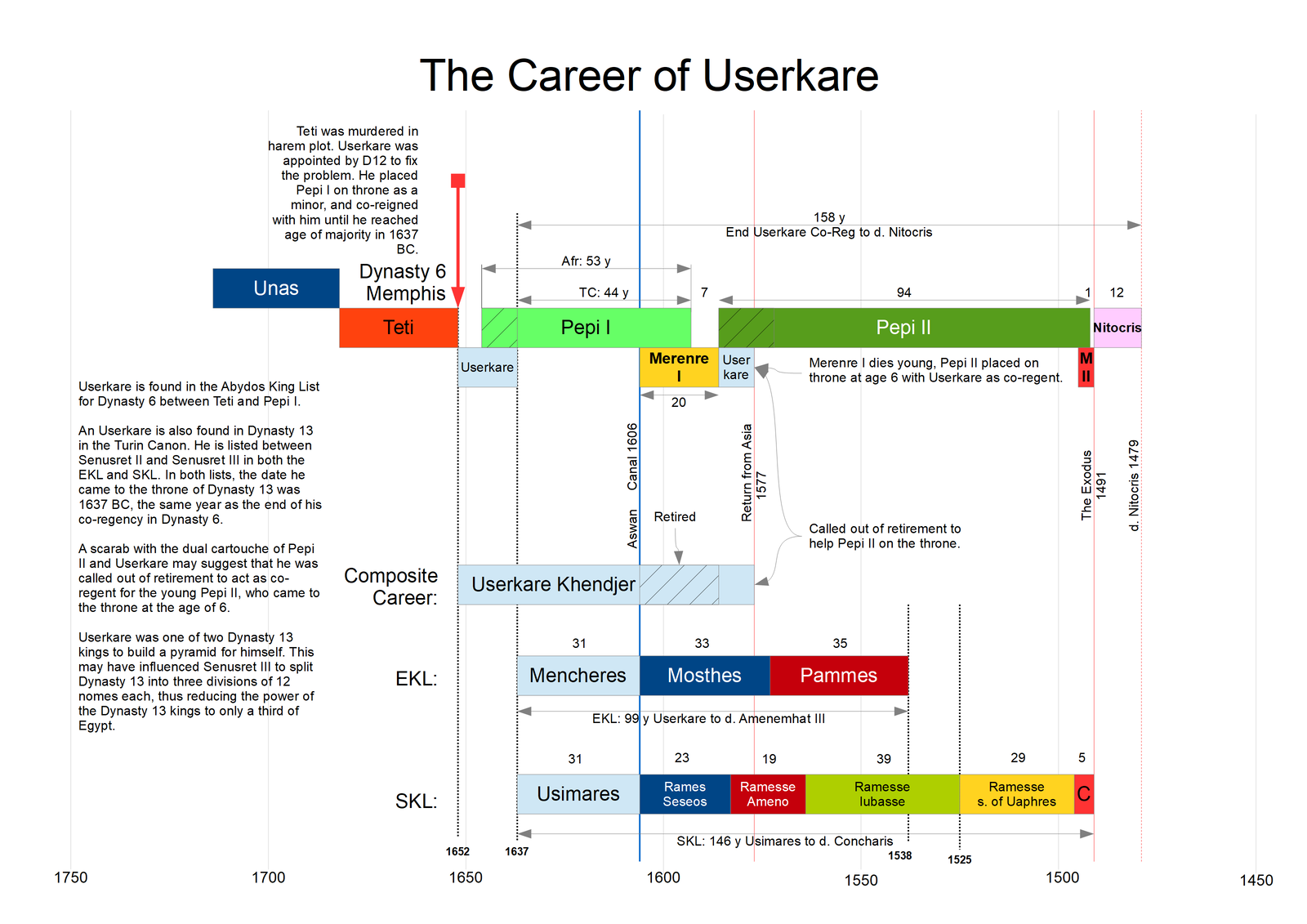
Fig. 18. The career of Userkare.
Counting back from the death of Nitocris in 1479 BC:
1479 BC death of Nitocris; plus,
12 years Nitocris; plus,
1 year Merenre II; plus,
94 years Pepi II; plus,
7 year sole reign of Merenre I; plus,
44 year reign of Pepi I; gives:
1637 BC ±2 years, start of Pepi I sole reign, end of Userkare coregency
Counting back from the death of Chenephres (Ramesses Iubasse) in the SKL from 1525 BC:
1525 BC death of Rameses Iubasse (Khaneferre Sobekhotep); plus,
39 year reign Rameses Iubasse; plus,
19 year reign Ramesse-Ameno (Amenemhat III); plus,
23 year reign Rames-Seseos (Senusret III); gives:
1606 BC ±1.5 year error, approximate end of Usimare’s reign (Userkare); plus,
31 year reign of Usimares; gives:
1637 BC ±2 year error, approx. start of Userkare’s reign in D13
A reasonable interpretation is that Userkare appears in Dynasty 6 between Teti and Pepi I as the coregent for Pepi as a minor, until the year 1638/1637 when Pepi I reached the age of 20. Userkare was then promoted to the Dynasty 13 position, where he served Senusret II for 31 years, including the coregency with Senusret III, ending just before the first Nubian campaign in 1606. Userkare even built a pyramid for himself, one of only two Dynasty 13 kings known to have done so. Userkare’s pride may have influenced the young Senusret III to plan to reduce the power of the Dynasty 13 position, which he did in the year 1577 BC when he broke the dynasty into the three Warets, thus reducing Dynasty 13 kingship to control of only one-third of Egypt.
A scarab was found with the double cartouche of Dynasty 13 king Userkare side by side with the cartouche for Neferkare Pepi II (Hayes 1953, 342–343). Pepi II came to the throne as a child, not unlike his grandfather, Pepi I. This scarab suggests that Userkare may have been called out of retirement to help young Pepi II on the throne just as he had helped his grandfather. In all three of his positions he appears to have served as a coregent for a young king, suggesting that Dynasty 12 used him for that purpose. Given that the biblical patriarchs were still living to more than 130 years of age during the sojourn (Exodus 6:18, 20), a 75 year career for Userkaf from 1652 to 1577 was feasible.
The Aswan Canal of Senusret III and Merenre I
In order to more efficiently transport men, weapons, and supplies upstream of Aswan into Nubia, both Merenre I and Senusret III recorded cutting a canal at the First Cataract in Aswan. Hayes comments (1971, 506–507, emphasis added):
In dealing with this [the Nubian] threat the king’s first concern was to link Lower Nubia and Upper Egypt by means of a navigable waterway through the Aswan rapids. Early in his reign, therefore, he caused a channel, called ‘Good-are-the-ways-of-Khakaure’, to be opened in the Cataract, probably in the vicinity of Esh-Shallāl. Wide enough and deep enough to accommodate the largest Egyptian warship or merchant vessel, this channel, less than two hundred and sixty feet in length, was probably a re-excavated section or an extension of the old system of canals made under King Merenre I of the Sixth Dynasty. In Year 8 the new canal was dredged in preparation for the king’s first Nubian campaign, and in this year Sesostris III sailed through it on his way upstream ‘to overthrow the wretched Kush’.
From the reign of Merenre were found long tomb inscriptions by the Chancellor Harkhuf and the king’s close companion, Weni the Elder, both of whom reported multiple military campaigns and trade expeditions to Nubia (Simpson 2003, 402–411). Weni also reported having been sent to excavate five canals in the southland. He says that he accomplished this task in a single year (Simpson 2003, 407), which Hayes considered to be the first campaign (1971, 193), and which probably occurred in Merenre’s first year.
Senusret III began his Nubian campaigns in year 8 by opening the Aswan canal, bypassing the cataract at Aswan so he could ship supplies upriver (Hayes 1971, 506). His last Nubian campaign was in year 19 (Hayes 1971, 507).
Before we can come to a strong conclusion about the Aswan Canal, we need to pinpoint the start of the regnal years of Senusret III. Due to the fact that Senusret III had a long coregency with his son Amenemhat III, fixing the start and end of his reign precisely is not as simple as we might like. However, SKL, the Turin Canon, and the EKL give durations back from known dates to the start of the sole-reign of Senusret III. In the SKL, we can count back from the death of Ramesses-Iubasse (Khaneferre Sobekhotep) in 1525 BC the preceding three kings to find the start of the sole reign of Senusret III as follows:
1525 BC; death of Sobekneferu and Khaneferre Sobekhotep; plus,
39 year reign of R. Iubasse (K. Sobekhotep) in SKL; plus,
19 year reign of R. Ameno (Amenemhat III) in SKL; plus,
23 year reign of R. Seseos (Senusret III) in SKL; gives:
1606 BC ±1.5 year start of Senusret III sole-reign
Using the Turin Canon, we can arrive within a year of the same answer.
1525 BC death of Sobekneferu; plus,
3 year 11 month reign of Sobekneferu (TC); plus,
9 year 4 month reign of Amenemhat IV (TC); plus,
48 year and ? month reign of Amenemhat III (monuments); plus,
19 year and ? month sole-reign of Senusret III (Wegner 1996, 251); gives:
1605 BC ±1 year start of Senusret III sole-reign
The EKL also concurs:
1525 BC death of Sobekneferu; plus,
3 year 11 month reign of Sobekneferu (TC); plus,
9 year 4 month reign of Amenemhat IV (TC); plus,
35 year sole-reign of Amenemhat IV (EKL); plus,
33 year reign of Moshes (Senusret III) gives:
1606 BC ±1 year start of Senusret III sole-reign
Thus we now have a triangulated date of 1606 BC for the start of the sole-reign of Senusret III.
Four details remain to be accounted for in the reign of Senusret III. We must account for the 39 year regnal length from monuments (Baker 2008, 400), determine what event his eighth year was counted from, determine the year of his death, and determine the length of his coregency with his son, Amenemhat III.
Both Diodorus and the EKL give Senusret III 33 years of reign. Using 1606 BC for the start of his sole-reign places his death in 1573 BC. If we add the 39 years and some months of his total reign to that year, we arrive in the ballpark of 1613/1612 BC for the start of his coreign under Userkare and his father.
Note that 1606 BC was the first year of Merenre I, when his men dug the Aswan Canal. Senusret III claimed to open the Aswan canal in his eighth year. The eighth year began after seven full years. Adding seven years to 1606 BC gives 1613 BC for the start of the coreign of Senusret III, suggesting that the year dates for his Nubian campaigns were counted from the start of his coreign under Userkare and his father Senusret II in 1613 BC.
A dual-dated papyrus equates year 20 of Senusret III with year 1 of Amenemhat III (Baker 2008, 400; Wegner 1996, 251), indicating that Senusret III had a 19 year sole-reign. To find the length of the coregency with his son, we simply subtract his seven year coregency with Userkare and the 19 year sole-reign from the 39+ years recorded on the monuments, yielding about 13 years for the coreign with Amenemhat III, probably a few months less. All of these values have an uncertainty of about six months, so his full reign might have been as long as 39 years and 11 months. Table 8 lists the resulting events and dates in the reign of Senusret III by regnal year.
Table 8. Events of the reign of Senusret III.
| Events in the Reign of Senusret III | ||
|---|---|---|
| Event | Year BC | Comment |
| Start of Coreign | 1613 | Under Senusret II and Userkare |
| Start of Sole-Reign | 1606 | Year 8 was year 1 of Sole-reign |
| Aswan Canal Opened | 1606 | Year 8 Senusret, Year 1 Merenre |
| Nubian Campaigns | 1606–1595 | Years 8–19 campaigns into Cush |
| Start of Coreign with Son | 1586 | Possibly in reaction to death of Merenre I |
| Asian Campaigns | 1586–1577 | 9 years in Asia as per Diodorus |
| Return from Asia, Founded Astronomical College, Reorganization of Egypt, Decree of Oppression | 1577 | Anchor Point #18 |
| Death | 1573 | 33 years sole-reign, 39+ years total, 13+ year co-rex with Amenemhat III |
Returning now to the Aswan Canal, using 1613 as the first year of Senusret III, we find the same result as the date of the canal in the reign of Merenre I.
1613 BC accession of Senusret III; minus
7 full years; gives:
1606 BC ±6 months for the start of year 8
This is seen to triangulate with the date that the men of Merenre I opened the Aswan Canal. Rather than being centuries apart, this synchronism shows that the men of Merenre I opened the Aswan Canal while in service to Senusret III, and both took credit for it.
We might conclude that Merenre I dug the canal in his first year under the command of the high king Senusret III in the latter’s eighth year. Thus Senusret III, Merenre I, and Merenre’s governor, Weni the Elder, all claimed credit for the canal, though it was Weni’s men who actually dug it. However, the canal was named “Good are the Ways of Kakhaure.” “Kakhaure” being the throne name of Senusret III informs us that he was the highest authority and took credit for the work. This is a strong double-sided synchronism, because we find the same specific event in the same year dated by the chronology of both kings. The Aswan Canal synchronism demonstrates that our method for aligning the dynasties is surprisingly accurate, even to the authors, who only discovered this synchronism over a decade after thus aligning the Sixth and Twelfth Dynasties.
We can also fix the reign of Amenemhat III using the same method.
1525 BC end of Dynasty 12; plus,
4 years sole-reign of Sobekneferu; plus,
9 years sole-reign of Amenemhat IV; plus,
48 years total reign of Amenemhat III; gives:
1586 BC ±1.5 years, Start of Amenemhat III coreign
It is significant that the coreign of Amenemhat III began in year 20 of his father’s sole-reign, or year 28 from his coreign. According to Diodorus Siculus, Senusret III sent the astronomical college after his return from a nine year campaign in Asia, which we have triangulated to 1577 BC from three external sources (Griffith and White 2023a). The start of the Asian campaign nine years earlier was in 1586 BC, the same year that the coreign of Amenemhat III began. In this chronology, 1586 BC was also the year that Merenre I died, leaving Pepi II to take the throne at the age of six. As Merenre I went on the Nubian campaigns and then died in the first year of the Asian campaign, it seems likely that he died on the Asian campaign, whether in battle or due to an accident or illness. This suggests that Senusret III put his own son on the throne as coregent in response to the death of Merenre I in order to assure his own succession as he continued the war in Asia.
Returning to Senusret III, let us confirm that the numbers add up. If he came to the throne as coregent at age 20 in 1613 BC, he prepared for seven years and then set off on his Nubian campaign, which lasted from years 8 to 19, ending in 1595/1594 BC. After another eight years of preparation he placed Amenemhat III on the throne with him in 1586, the first year of his nine year Asian campaign, returning victoriously in 1577 BC. Upon his return he reorganized Egypt into three departments, called “Warets,” of 12 nomes each, for a total of 36 nomes (Callender 2003, 164; Diodorus 1935 I.54.3). In that same year he ended Dynasty 10 of Heracleopolis, probably replacing it with the Dynasty 13 King of the Waret of the South. That was also the year that he issued the decree enslaving the Hebrews and ordered the slaughter of the male infants.
According to the Midrash the Decree of Oppression was 86 years before the Exodus (Ginzberg 2001, vol. 2, §28) and 130 years after Jacob entered Egypt (Ginzberg 2001, vol. 2, §21). Eighty-six years before 1491 was 1577 BC, triangulating with Senusret III returning from Asia where he had encountered the other Abrahamic tribes as enemies (Exodus 1:10), confirming Anchor Point #18. Senusret III lived four more years before allegedly committing suicide because he had gone blind (Diodorus 1935, I.58.3). He would have been about 60 years old at his death.
Thus, we find Anchor Point #59, the Opening of the Aswan Canal, Y1 Merenre I, Y8 Senusret I coreign, Y1 Senusret I sole-reign, 1606 BC (fig. 19).
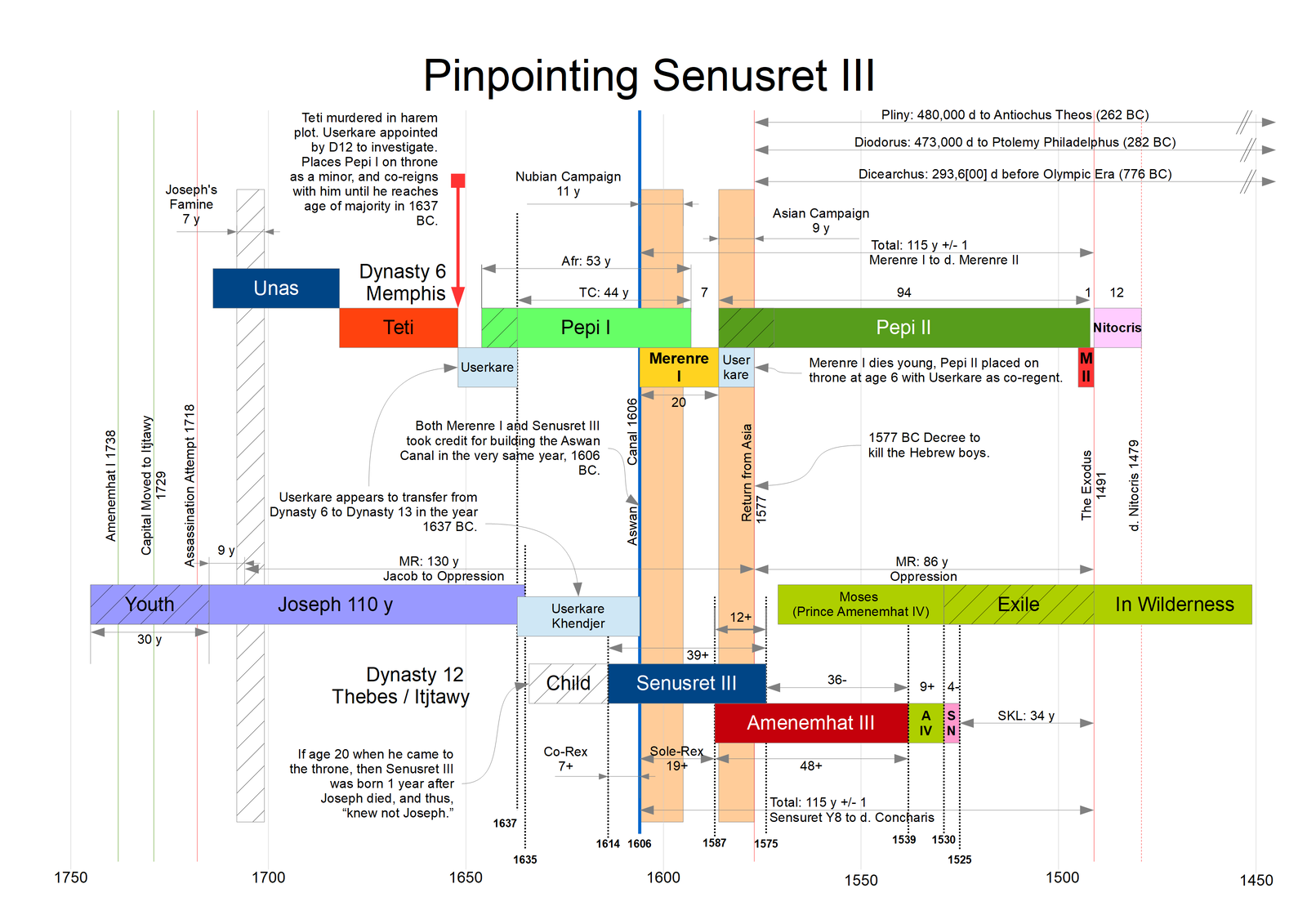
Fig. 19. Pinpointing Senusret III with the Aswan Canal.
Neferhotep I and Senusret III Synchronism
Wegner (2015) remarked on finding three instances where Neferhotep of Dynasty 13 associated himself with Senusret III of Dynasty 12, including being buried at the entrance to the latter’s shaft tomb in Abydos (Wegner and Cahail 2015).
Callender (2003, 169–170, emphasis added) explains the mortuary practices of the royal court in Dynasties 11 and 12:
Royal mortuary complexes of the 11th and 12th dynasties also underwent considerable changes in design as the kings sought for the most appropriate architectural form to reflect their religious beliefs . . . in the regional tombs of the nomarchs . . . The large lavishly decorated rock-cut tombs usually featured pillared facades, and the tombs themselves were elevated above the burials of the members of their ‘courts,’ scattered across the slopes below . . . As the nomarch’s office diminished in importance, however, the character of the provincial necropolis changed: the size and number of tombs increased and there was less overt ‘ranking’ among the positions of graves. In the capital on the other hand, things were rather different: the officials’ tombs were located in the royal necropolises rather than their local family cemeteries, the mastaba-tombs became the preferred style of private tomb, and the provision of a memorial at Abydos became imperative for all.
Thus a burial by the entrance of the King’s tomb or pyramid was normally the position reserved for the highest official of the king.
The Turin Canon places Neferhotep I and his brother Sihathor immediately before Khaneferre Sobekhotep; however, only the 11 year and 1 year reigns of the former are preserved. Recognizing Ramesses Iubasse of the SKL as a reference to Khaneferre, whose reign was 39 years, we can estimate the reign of Neferhotep as follows:
1491 BC Death of Concharis; plus,
5 year reign of Concharis; plus,
29 year reign of Ramese son of Uaphres; plus,
39 year reign of Ramesse Iubasse (Khaneferre); plus,
1 year reign of Sihathor; plus,
11 year reign of Neferhotep; gives:
1576 BC ±2.5 years for the start of Neferhotep’s reign
Note that the reign of Neferhotep began about the same year as the decree to slaughter the infants. Having pinpointed the reign of Senusret III from 1613 to 1573 BC using Anchor Point #59, it would appear that Neferhotep served as his Dynasty 13 cabinet “king” for the last four years of the reign of Senusret III and continued in that position seven more years into the reign of Amenemhat III. This means that Neferhotep was the king administering the decree to slaughter the infants for the entire period that it lasted from 1577 until the adoption of Moses by the princess in 1571 BC, when the Midrash says the slaughter ended (Ginzberg 2001, vol. 2, 155).
Our framework places Neferhotep and Senusret III at the same time. Additionally, two double cartouche inscriptions (fig. 20) and the positions of their tombs establish three physical archaeological links between these two kings. Both kings are associated with the Decree to slaughter the Hebrew infants (David 1996, 191). We conclude this is because Neferhotep served in the administrations of Senusret III and Amenemhat III during the six years that the Decree to slaughter the infants was in force.
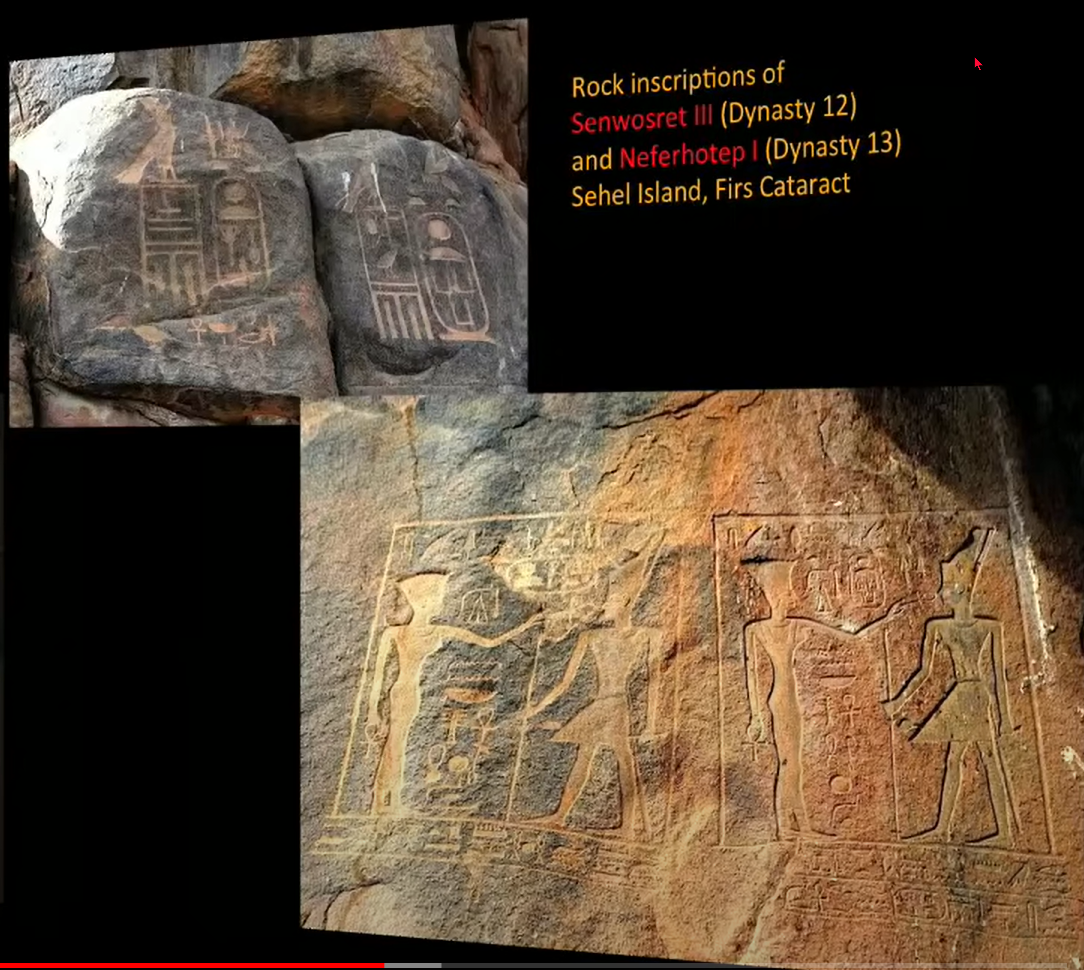
Fig. 20. Senusret III and Neferhotep I Cartouches together.
The Brooklyn Papyrus Synchronizes Amenemhat III, Neferhotep I, and the Oppression
Papyrus Brooklyn 35.1446 is a two-sided papyrus now in the Brooklyn Museum which contains several internal documents pertaining to prisoners and slaves, written in two different hands, one on the front and one on the back (Hayes 1955). On the front side is a list of escaped prisoners from a state penal institution dating from the reign of Amenemhat III and notes on whether they had been captured.
Written in a different hand on the obverse is a list of 95 slaves belonging to a woman named Senebtisi, the widow of Resseneb son of Ankhu. A copy of a letter to the Vizier Ankhu (a different man than the overseer of fields whose uncle was Wegaf) who served under Userkare Khendjer, is included (Hayes 1955).
The front and back sides of this papyrus are assumed in the conventional chronology to have been written over a century apart. However, our alignment of Dynasty 13 with Dynasty 12 has Ankhu working under Userkare in the administration of Senusret II. His son, Resseneb was vizier under Neferhotep I, who was therefore in the administration of Senusret III during his coreign with his son Amenemhat III. Therefore Resseneb’s widow, who received the slaves of his estate, would have been adjudicating her case in the reign of either Neferhotep I or his successor Khaneferre Sobekhotep who, as we’ve argued, was the right hand man and son-in-law of Amenemhat III.
And it is also far more plausible that the Brooklyn Papyrus was used in the reign of only one king, rather than being reused a century later. Can you imagine an official at the State Department of George H. W. Bush in 1990 using the backside of a parchment document from the administration of Grover Cleveland a century earlier to keep records on? That seems highly unlikely.
Both the front and back sides of the Papyrus Brooklyn 35.1446 can be seen to have been written during the administration of Amenemhat III, rather than one century apart. The fact that the front and back were written in two different hands suggests a change in the scribe, or possibly that two different officials were using the same papyrus to record cases. Thus, the Brooklyn papyrus firmly links Neferhotep I to the reign of Amenemhat III.
The Khaneferre Sobekhotep and Sobekneferu Synchronism
Two sources link Khaneferre Sobekhotep and Sobekneferu. First Artapanus of Alexandria preserved the Egyptian-Jewish tradition that Palmanothes gave his daughter Merris in marriage to Chenephres, a king of Upper Egypt, and that they adopted Moses (Eusebius 2002, Pr.Ev.9.27). Chenephres is recognizable as Khaneferre Sobekhotep, whose Golden Horus name was User Bau. The SKL records the reign of Ramess-Iubasse immediately after “Ramess-Ameno,” whom we recognize as Amenemhat III. Iubasse appears to be a Greek transliteration of User Bau. Thus the SKL appears to record the same situation described by Artapanus, where Chenephres was serving as a regent during the reign of Amenemhat and his daughter Sobekneferu, a synchronism confirmed by the Brooklyn Papyrus as noted above.
Exodus and Hyksos Invasion Start an Intermediate Period
In the conventional chronology, the First Intermediate Period is placed after Dynasty 6, while the Second Intermediate Period is placed after Dynasty 12. In this solution both intermediate periods began immediately after the Exodus, and Dynasties 8, 16, and 17 are seen to be vassals of the Hyksos overlords of Dynasty 15. Dynasty 9, usually assigned to the First Intermediate Period, is seen to belong to a completely different period, starting with the founding of the first Egyptian cities shortly after the Dispersion.
Why Do Kings of Parallel Dynasties Not Mention Each Other?
An obvious question that our proposed revision raises is why do we not find cases of the kings of parallel dynasties mentioning each other? The reason that we usually do not is that the general rule seems to have been, “Monuments are expensive. He who pays for the monument gets all the glory.” However, despite that being the general rule in the Ancient Near East for most of antiquity, there are several exceptions where kings of parallel dynasties did mention each other, four of them by name.
- Inteff III said he was the “confidante of the king” (Hayes 1971, 475), referring to either Dynasty 4, 5, or 9, probably either Menkaure of Dynasty 4, or Userkaf of Dynasty 5.
- Wahkare Khety thrice mentioned earning the respect versus the displeasure of “The Residence” (Simpson 2003, 158, 159, 162), probably referring to Menkaure of Dynasty 4.
- Renseneb [son of] Amenemhat. Renseneb is believed to have been king #12 or #13 of Dynasty 13. A single bead was found with the name written Renseneb Amenemhat, which Ryholt interpreted at Renseneb [son of] Amenemhat (Ryholt 1997, 339). The question is, which Amenemhat was he the son of? Our placement has kings 12 and 13 of Dynasty 13 ruling late in the reign of Amenemhat II of Dynasty 12, making Amenemhat II the likely father of Renseneb.
- The dual inscriptions of Senusret III and Neferhotep I. As noted above, we find three instances of Neferhotep of Dynasty 13 either writing his name or putting his tomb next to Senusret III of Dynasty 12, suggesting that Neferhotep served as the highest official of the latter.
- A scarab with the dual cartouches of Neferkare Pepi II and Userkare (Hayes 1953, 342–343) connects 6 and 13.
- Petrie (1897, 216) notes that “there was found also an adoration to [Khaneferre Sobekhotep] from a mermeshau named Amenemhat (M.K. viii. p).” The title, “mermeshau” meant “Overseer of troops” or “General” (Baker 2008, 134).
We have already noted evidence supporting Courville’s identification of Amenemhat IV as the possible Egyptian name and title of Moses as the crown prince under Amenemhat III and Sobekneferu. Artapanus related at length the story that Chenephres, identified as Khaneferre Sobekhotep, was the husband of Sobekneferu, the adopted mother of Moses, and was pharaoh while Moses was crown prince, and that he had sent Moses as general of the troops to fight a war against Ethiopia (Eusebius 2002, Book IX, Chapter XXIV).
Here Petrie has noted what appears to be an “adoration” to Khaneferre by his adopted son, Moses, whom he had appointed as general to fight the Ethiopians, exactly as reported by Artapanus. Both the title, mermeshau or “General”, and the name, Amenemhat, fit the identification of Amenemhat IV as Moses.
Thus we have six examples of kings in different dynasties of Egypt mentioning their contemporaries, four of which are by name.
Argument 4. Biblical Synchronisms
The synchronisms to biblical characters listed below include scriptural sources as well as details preserved in ancient Jewish sources such as Artapanus, Josephus, the Book of Jubilees, and the Midrash.
1. The Dispersion
In Ussher’s chronology of the MT, the Dispersion (Genesis 11; Genesis 10:25–32) occurred two generations after the birth of Peleg, which was 101 years after the Flood. Given that firstborn generations in that period were about 30 years (Genesis 11), we would expect the Dispersion occurred about 161 years after the Flood. The Dispersion in 2191 BC falls 157 years from the 2348 BC Flood, affirming Ussher and Jones’s interpretation of the MT. The founding of Thinis in 2188 BC by Menes falls only three years after the Dispersion.
2. Terah’s Famine and Abraham’s Birth
According to the Book of Jubilees, Abram was born to Terah in the midst of a great famine (Charles 1913, 11.13, 50.4). In Ussher’s chronology Abraham was born in 1996 BC (Ussher 2003, §64). Abraham’s birth is seen to have been in the fifth year of Djoser’s seven-year famine.
3. Abraham and Khufu: 1921 BC
The account of Pharaoh Khufu of the Fourth Dynasty given by the priests of Egypt to Herodotus, while garbled, preserves the notion that a shepherd named Philition, meaning “friend,” came to Egypt in the reign of Khufu and was credited by later Egyptians for the Great Pyramid (Herodotus 2013, Book 2.128). According to Herodotus, Khufu was hated for having offended the gods, for closing the Egyptian temples for 106 years, and for a rather fantastic story of sexual immorality by prostituting his daughter to raise funds for the Great Pyramid.
If down through the ages the “daughter” in this story had been confused for “sister,” it seems plausible that this was a garbled account of the sexual immorality of Khufu by taking Abraham’s wife, Sarah, which aroused the wrath of God against him. Jones places Abraham’s visit to Egypt in 1921 BC (Jones 2019, 24), which we find to have been the second or third year of Khufu’s sole-reign, when the Great Pyramid was being planned. Josephus records that Abraham transferred knowledge of mathematics and astronomy to the Egyptian wise men (Josephus 1901, Ant. Book I.VIII). As Abraham was a shepherd who was called “the friend of God” (James 2:23) perhaps he was the person referred to as the shepherd, Philition, the friend. While Abraham obviously did not build the Great Pyramid, he may have provided consultation on the mathematical and astronomical calculations in the planning stage (Anderson 2007; Ashton and Down 2006, chapter 28).
Herodotus records that Khufu and his successors closed the temples for 106 years (Herodotus 2013, 151) until Menkaure reopened them. Counting from Abraham’s visit in 1921 BC, the 106 years comes to 1815 BC. In this framework that was the second year of Inteff III, which was about the time of Isaac’s famine (1816 BC), and it also appears to be the year that Userkaf moved from Elephantine to Memphis to marry Khentkaus in the seventh year of the Truce, while Menkaure was still on the throne of “The Residence.”
Perhaps Khufu closed the temples to Horus and Hathor while allowing the temples to Re to remain open. Reopening the temples by Menkaure may have been part of the peace deal negotiated with Userkaf’s marriage to Khentkaus. Evidence of the reopening of the temples is seen in the short reign of Inteff III (Hayes 1971, 478), whose sole-reign we place as beginning in 1816 BC:
At Elephantine [Inteff III] carried out restorations in the temple of Hekayeb, which he describes as being in a ruinous state, and contributed a sandstone doorway to the temple of the local goddess, Satis.
If the temples of Osiris, Isis, and Hekayeb had been closed for 106 years, one might expect them to be in a ruinous state, as described.
4. Djedefre, Abraham, and Re
Khufu’s second son, Djedefre appears to have been the first Pharaoh to embrace the worship of Re, as opposed to Horus and Hathor. The CFAH chronology places Djedefre second in line for the throne, as his brother Kawab was still living when Abraham came to Egypt in 1921 BC. However, when Djedefre came to the throne shortly after Abraham’s departure, he endorsed the religion of Re. We also see the first kings in Dynasties 2, 9, and 11 using names with the theophoric, “Re,” shortly after Abraham’s visit. Khufu was said by Herodotus to have closed the Egyptian temples for 106 years. It appears that he closed the temples to Horus and Isis, while endorsing the worship of Re. Thus, Abraham may have been the catalyst that caused the Egyptians of Dynasties 2, 4, 9, and 11 to suddenly begin worshiping Re, an Egyptian name for the Creator and God of Light.
5. Isaac’s Famine: ~1816 BC
When Isaac faced a famine, he planned to go to Egypt like his father had done, but God told him not to (Genesis 26:1–2). This passage is between the birthright incident when Esau was old enough to hunt, and Esau’s marriage at age 40. Given Isaac’s sons were born when he was 60 years old this places Isaac’s famine between his eightieth and one hundredth years. Being born in 1896 BC, that places Isaac’s famine between 1816 and 1796 BC, and probably in the earlier part of that range, as his wife was still young and beautiful enough to attract unwanted male attention.
Our placement of Dynasty 11 combined with the Turin Canon data places the reign of Inteff III from 1816 to 1808 BC. A nomarch named Ankhtifi is known from the Middle Kingdom, but his reign is not synchronized to a particular king. However, two claims in his autobiography enable us to narrow the dates of his reign. He said that he fought against the rebels in a civil war in the region just above Thebes, and he reported a severe famine. Given that the Great War began 56 years before the thirty-ninth year of Mentuhotep II, the Turin Canon reigns enable us to calculate that the war broke out in year 40 of the reign of Inteff II, and the Truce began three years later, covering the entire reign of Inteff III, until war broke out again in the fourteenth year of Mentuhotep II.
Ankhtifi, having fought the rebels, must have served as a nomarch from the middle of the reign of Inteff II of Dynasty 11 and into the reign of Inteff III, in whose reign a famine was recorded (Bierbrier 2022, 112). The first year of Inteff III was the year 1816, which was about the time of Isaac’s Famine.
Ankhtifi reported that, “The whole of Upper Egypt died of hunger and each individual had reached such a state of hunger that he ate his own children” (Grimal 1992, 142). Thus, God told Isaac not to go to Egypt because the famine was even more severe there.
6. Assassination Attempt: Baker and Butler on Trial 1718 BC
A dual-dated monument equates the thirtieth year of Amenemhat I with the tenth year of his son Senusret I (Murnane 1977, 2, CG 20516), who was raised to coregent with his father after a partially successful assassination attempt on Amenemhat I by his bodyguard or household staff (Stewart 2003, 72–83). Stewart places the assassination attempt in year 20 of Amenemhat I (Stewart 2003, 77–78), which also synchronizes the accession of Senusret I as the coregent of Dynasty 12.
1738 BC Amenemhat I founds Twelfth Dynasty; minus,
20 years to Assassination Attempt; gives:
1718 BC ±6 months, Assassination Attempt
Joseph was cast into prison by his master, Potiphar, who was the head of the king’s bodyguard (Genesis 37:36). The assassination attempt on Amenemhat I was made by members of his own guard. In the instructions he wrote to his son, Amenemhat reveals details of the plot (Simpson 2003, 168–169):
I was generous to the pauper, I sustained the orphan,
I caused him who had nothing to become at length like a man of means. But it was one who ate my bread who conspired (against me),
One to whom I had given my support devised dread deeds thereby, Those clad in my fine linen behaved toward me like worthless louts, And those anointed with my myrrh made my way slippery before me. . . It was after supper, when darkness had fallen, And I had decided to take an hour of relaxation;
I was lying on my bed, for I was tired,
And I started to drift off to sleep.
Weapons (intended for) my protection were raised against me, While I acted like a snake of the desert.
I woke up to the fighting, pulled myself together, And found that it was a skirmish of the palace guard.
If I could have quickly taken weapons in my hand, I would have made the cowards retreat in turmoil.
But no one is strong at night, and none can fight by himself; No successful result can come about without an ally.
While the assassins were from the king’s own bodyguard, at least one member of the bodyguard fought the attackers, awakening the king, but the others overpowered him and wounded the king and escaped, leaving him for dead. This suggests that Potiphar, the captain of the guard, may have been one of the conspirators.
Joseph met the baker and butler in the prison, two years and some months before he was promoted by Pharaoh (Genesis 41:1). Assuming that the investigation first focused on the assassins themselves, extending the investigation to the household staff may have taken several months. The baker and butler would have been suspects because they were in positions to serve food and drink to the king, whose sudden drowsiness shortly after supper and dreamlike state during the assault may have been caused by a sedative in his food or drink.
Adding two years and a few months to Jone’s biblical date for Joseph’s promotion in 1715 BC (Jones 2019, 56a) comes to the year 1718 for the time Joseph met the baker and butler in prison. There is about a year of wiggle room on this date because some durations to Joseph’s famine have it starting nine years after his promotion, while others have 10 years, suggesting nine years and some months. Additionally, the two years between the exoneration of the butler and Joseph interpreting Pharaoh’s dream may also have been rounded to the year, thus creating uncertainty of about a year for the date of Joseph’s promotion. This triangulation makes new Anchor Point #60, the Assassination Attempt on Amenemhat I in 1718 BC.
7. Joseph was Promoted in the Year of Isaac’s Death 1716/1715 BC
The Midrash maintains that Joseph came to the throne of Egypt the same year that Isaac died (Ginzberg 2001, 58). Using the Ussher-Jones date for Isaac’s birth in 1896 BC (Jones 2019, 58), and his lifespan of 180 years (Genesis 35:28) his death would have been in 1716 BC, which is within a year of the date of Joseph’s promotion as determined above. This triangulates with the date of Joseph’s promotion two and a half years after the failed assassination attempt on Amenemhat I, thus forming new Anchor Point #61, Joseph’s Promotion in 1716/1715 BC.
8. Joseph’s Famine 1708–1701, Senusret I Year 25 Low Nile, Unas Famine
As noted in the Argument 4, the famines recorded in the reigns of Unas of Dynasty 5 and Senusret I of Dynasty 12 match Joseph’s famine which Jones dates from 1708 to 1701 (Jones 2019, 278).
9. Joseph’s Second Irrigation Project in the Reign of Senusret II
A medieval Arab tradition from Hasam the son of Isaac states that when Joseph was 100 years old a new Pharaoh came to the throne. The court advisors were jealous of Joseph and persuaded the new Pharaoh to make a trial of Joseph’s abilities by challenging him to irrigate a place in the desert to create a province for the king’s daughter. According to this tradition, Joseph asked for the Fayuum, called Alphiom, and cut a channel from the Nile to that basin to irrigate it, and built 360 farming villages there (Al-ʻAfīf 1672, 181–186).
The irrigation of the Fayum Basin is believed to have first occurred in the reign of Senusret II, although the project continued two more generations into the reign of Amenemhat III (Grimal 1994, 166). By our reckoning, Joseph would have turned 100 years of age in 1645 BC, toward the end of the coregency of Amenemhat II and his son, Senusret II. Thus the medieval Arab tradition and archaeology are seen to agree that Joseph irrigated the Fayum in the reign of Senusret II. It also appears that Joseph died about a year or two before the birth of Senusret III, the king who “knew not Joseph” (fig. 19).
This tradition places the irrigation of the Fayum when Joseph was 100 years old, which occurred 63 years after Joseph’s Famine, contradicting Petrovich’s identification of Senusret III as Joseph’s Pharaoh.
We find a claim by Senusret I that he built a lake whose name preserved his own name (Breasted 1912, 71).
My beauty shall be remembered in [Re’s] house,
My name is Pyramidion and my name is the lake.
Diodorus (1935 Book I.53.1) describes Sesostris as living seven generations after Moeris, after whom the lake in the Fayum is named. This contradicts the current scholarly consensus that the Moeris legend was based on Amenemhat III, who was the son of Senusret III, aka Sesostris.
We take this to mean that Joseph first connected the Nile to the Fayum basin during the years of plenty prior to the famine in the reign of Senusret I, creating Lake Moeris, but leaving about one-third of the basin above the water level, lying fallow.
About 70 years later, in the second project, Joseph had the men dig irrigation canals branching off the main feeder canal, along with building 360 farm villages, thus bringing all of the fallow land under cultivation. Amenemhat III continued the work begun by Joseph and reclaimed about one-third of the shallow eastern side of the lake as farmland. Thus the Arab tradition about Joseph’s project in his one-hundredth year appears to conflate the digging of the Bar Yusef canal, which occurred 70 years earlier, with the later irrigation project (fig. 21).
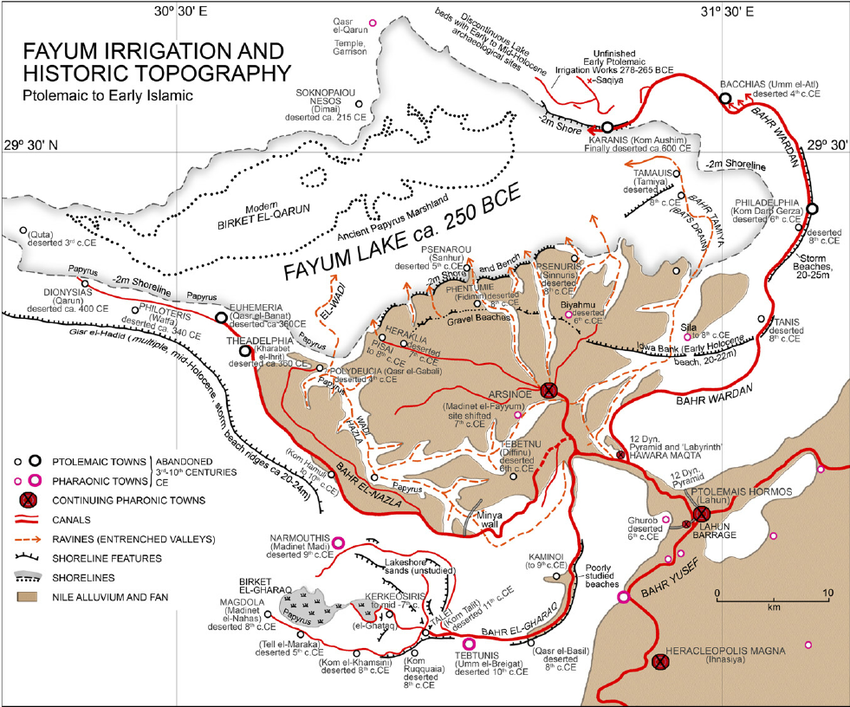
Fig. 21. Environmental context for Egypt’s Fayum Oasis. Based on mltiple sources, satellite imagery, and field observations. https://www.researchgate.net/figure/Fig-S1-Environmental-context-for-Egypt-s-Fayum-Oasis-Irrigation-was-coupled-with-the_fig2_283271394.
10. Decree of Oppression, Senusret III 1577 BC
As noted in Argument 3, the Midrash places the Decree of Oppression 86 years prior to the Exodus. Using Ussher’s date for the Exodus, the decree was given in 1577 BC. Scripture states the reason the Pharaoh who knew not Joseph gave that decree was that he feared the Israelites would take the side of his enemies in war (Exodus 1:8–10). Senusret III returned from his Asian campaign in 1577 BC where he had encountered the vast multitudes of the other Abrahamic tribes of Ishmael, Edom, Amalek, and the children of Abraham’s third wife, Keturah. Having seen the Abrahamic tribes to be fierce opponents in war, naturally he feared the Israelites might switch sides. Exodus also says that Pharaoh put the Israelites to work building treasure cities, Pithom and Rameses. Diodorus says that upon his return from the Asian war with much booty, Sesoosis (Senusret III) undertook massive building projects using slave labor:
On these labours he used no Egyptians, but constructed them all by the hands of his captives alone; and for this reason he placed an inscription on every temple that no native had toiled upon it.” (Diodorus 1935, Book I.56.2)
11. Neferhotep I associated with Slave Infant Burials found at Lahun
Excavations at the workers’ camp in El-Lahun uncovered a large number of infants buried in boxes under the huts of the workers in a strata associated with the cartouche of Neferhotep I (David 1996, 191). We noted above that Neferhotep I served in the administration of Senusret III from about 1577 to 1566 BC in the reign of Amenemhat III, during which time Moses was born. The Brooklyn Papyrus, dated to the reigns of Amenemhat III and Neferhotep I contains a list of Asiatic slaves, including a woman named Shiphrah (Hayes 1955). While she was not necessarily the same Shiphrah named in Exodus 1:15, this is concrete evidence of the existence of female Hebrew slaves in the reigns of Amenemhat III and Neferhotep I. As the older brother of Khaneferre Sobekhotep who married Sobekneferu, Neferhotep also would have been the adopted uncle of Moses. Thus Neferhotep may reasonably be concluded to have been the D13 official serving under Senusret III and Amenemhat III who enforced the decree to kill the infants at Lahun.
12. Barren Queen with Moses
While Scripture does not tell us the backstory of the daughter of Pharaoh who found Moses, both Josephus (Ant. Book II.IX) and Artapanus (Eusebius 2002, Book IX, chapter XXIV) recorded that the princess was barren. The final ruler of the Twelfth Dynasty of Egypt was Queen Sobekneferu. When she died without an heir the Twelfth Dynasty died with her. Using the chroniclers to place the Twelfth Dynasty, we found that Sobekneferu died no later than 1525 BC, and probably about a year earlier. Her death came about four years after the date that Scripture places the exile of Moses. In order to be the princess who found Moses, she would have to have been old enough to be married and know she was barren when Moses was born in 1571 BC, which would make her at least 25 years old, placing her own birth no later than 1596 BC. If so, then she would have died at the age of 71. Given the longer lifespans during the Sojourn, she may have been born as many as 50 years earlier.
13. Moses as Amenemhat IV
Moses solved a peculiar problem for the family of Pharaoh Amenemhat III. Amenemhat had gone blind (Diodorus 1935, Book I.59.2) probably from river blindness, Onchocerciasis. His only surviving child, Sobekneferu, was barren. The family had no heir to continue their dynasty. When the princess took the baby out of the Nile, she named him Moses. However, Egyptian society had rules. The Egyptian custom at that time was to name the first grandchild after the grandfather, even if the grandchild was a baby girl (Grajetzki 2010). We see four examples of this in the Sixth Dynasty, which our framework places at the same time. Pepi II was named for his grandfather, Pepi I. Merenre II was named for his grandfather, Merenre I. Even a third generation, Neferkare Pepi Seneb, appears to have been named for his grandfather, Pepi II. The wife of Merenre II, Queen Nitocris, appears to have been named Netjerkare Siptah after her grandfather as well.
Thus, when Sobekneferu presented the child, Moses, to her father as his only grandchild, he would have expected her to name the child after him, Amenemhat. While the princess and her Hebrew nursemaids called the child Moses, Egyptian society knew him as Amenemhat. Furthermore, being blind, Amenemhat could not see that his child was a Hebrew. He only knew him by touch and by voice. Whether Sobekneferu told her father the baby was Hebrew, we do not know. Thus, the child Moses became very dear to his adoptive grandfather, the same grandfather who had enforced the decree to kill the Hebrew boys.
Given that Moses was a Hebrew, and visibly so, choosing him to be the crown prince of Egypt would be a difficult sell to the Egyptian elite. Yet Amenemhat III appears to have chosen to do that. Part of his propaganda campaign to justify the legitimacy of Moses as Amenemhat IV is seen in a temple that they built together.
Recalling that the Princess Sobekneferu drew Moses from the Nile River, she may have seen this as an answer to her prayers to the goddess Renenutet, who was associated with fertility. By building a temple to this goddess which honored Amenemhat IV, even naming his mother on the wall, Amenemhat III was appealing to the Egyptian religion as the means to justify the choice of Moses as his successor. “Amenemhat didn’t choose this Hebrew to be king, the goddess Renenutet did!” Grajetzki (2006, 61):
The mother of the new king was the ‘king’s mother’, Hetepti, who is depicted on the wall decorated under the king in the Renenutet temple at Medinet Maadi (Fayum). She is so far only known from this temple. Her husband was most likely Amenemhat III, although this is nowhere stated. The partly destroyed inscriptions next to her do not call her ‘king’s wife’.
Recalling from Courville that the characters in monumental hieroglyphics are not always pronounced in the order they are carved (1971, vol. 1.155), it would be worthwhile to look more closely at the name of this woman called the mother of Amenemhat IV: Hetepti.
According to Scripture, the mother of Moses was Jochebed, written in Hebrew as יוֹכֶ֤בֶד, or yō·w·ḵe·ḇeḏ. The name Hetepti looks like the second part of her name, Kebed, with the B and D reversed. In Hebrew the “k” is often gutteralized like an “h;” and the Hebrew “b” often shifts to “p” or “v” when transliterated into other languages. Hetepti could very well be pronounced Khepeti, that is, Jow-khepeti, which is to say, Jochebed.
The fact that Hetepti is called “king’s mother” of Amenemhat IV but is nowhere called “king’s wife” of Amenemhat III, as was the custom for queens, suggests that Hetepti was the wife of Amram the Levite, the father of Moses.
Artapanus also records that Moses fought the Ethiopians as General of the Army for 10 years and obtained a great peace (Eusebius 2002, XXVII). Since Amenemhat IV ruled for the same length of time as Moses, and starting the same year, Amenemhat IV and Moses appear to have been one and the same person (Courville 1971, 221).
No tomb or funerary monument for Amenemhat IV has yet been found (Baker 2008, 31). Stewart (2003, 282) suggests that means he was the Pharaoh of the Exodus. But the lack of a tomb also fits the possibility that Amenemhat IV, as Moses, fled the country before reigning long enough to start a funerary complex for himself. Moses left when he was 40 years old which would have been 1531/1530 BC. That date coincides with the final year of Amenemhat IV as we’ve found in the solution for Dynasty 12 above.
14. Moses’ War Against Ethiopia as per Artapanus
As noted above, Artapanus records that Moses’ stepfather Chenephres sent him to lead the Egyptian army against the Ethiopians in the South, and that the war lasted 10 years. The Midrash says that war took nine years (Ginzberg 2001, vol. 2, 164).
Petrie (1895, vol. 1, 216) notes that in Sudan “there was found also an adoration to [Khaneferre Sobekhotep] from a mermeshau named Amenemhat (M.K. viii. p).” The title, “mermeshau” meant “Overseer of troops” or “General” (Baker 2008, 134).
According to Artapanus, Sobekneferu was married to Chenephres, which is to say, Khaneferre Sobekhotep. Thus the monument that Petrie found appears to have been commissioned by Moses (Amenemhat IV) to honor his stepfather while he was on the Ethiopian campaign.
15. Malul and Adikam Recognized as Pepi II and Merenre II
The Midrash preserves the Jewish tradition that the father of the Pharaoh of the Exodus, named Malul, reigned 94 years (Ginzberg 2001, vol. 2, 172). His son, Adikam, had a three-year coreign with his father, followed by a one-year sole-reign prior to dying in the Sea of Reeds (Ginzberg 2001, vol. 2, 172). While the names Malul and Adikam are evidently Jewish nicknames, there is only one father-son pair in all of Egyptian history where the father reigned 94 years and his successor’s sole-reign was only one year. That pair was Pepi II and his son Merenre II. Our evidence-based revision places the death of Merenre II in 1491 BC, Ussher’s MT date for the Exodus.
16. Queen Nitocris followed Merenre II
Manetho and Herodotus both say the ruler who followed Merenre II of Dynasty 6 was a woman named Nitocris (Herodotus 2013, II.100; Manetho 1964, 55–57), who was the widow of Merenre II. Recent scholars have rejected the idea that the last ruler of Dynasty 6 was a woman because the name found in that position in the Turin Canon, Netjerkare Siptah, is typically male (Ryholt 2000, 91). However, it was fairly common for girls to be given men’s names in that period in Egypt, particularly if they were upper class and were named after a paternal or maternal grandfather (Grajetzki 2010). Given the death of the firstborn males, followed by the death of the army in the Red Sea, it would not be surprising if Egypt was ruled by a woman immediately after the Exodus.
17. Tutimaeus as Dedumose
Josephus cites a long passage from Manetho relating how the Hyksos invasion occurred in the reign of a king named Tutimaeus or Timaeus (Manetho 1964, 79–81). This has been interpreted to refer to Dedumose II (Grimal 1992, 185), who is believed by some to have been the ultimate king of Dynasty 13 (fig. 22). On that basis, Rohl identified Dedumose as the Pharaoh of the Exodus (1995, 275–282). A stela of Dedumose was found in Gebelein near Elephantine (Davies 1982), which places him in Upper Egypt. Our suggested solution to Dynasty 13 places Dedumose as either King #40 or King #53 of the Turin Canon in the position of either Waret of the South or Waret of the Head of the South between 1490 and the death of Nitocris in 1479 BC. Thus he would have been one of the last remaining rulers in Egypt, possibly fighting a rearguard action to protect Queen Nitocris and her young son Pepi III as the Hyksos conquered their way up the Nile to Elephantine.
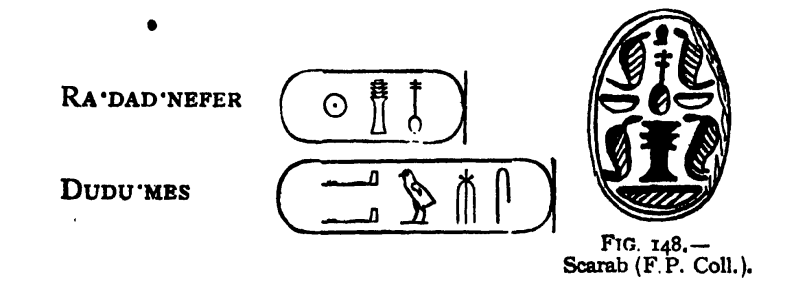
Fig. 22. Scarab of Dedumose. William Matthew Flinders Petrie 1897, A History of Egypt from the earliest times to the XVIth . . ., 245. Public Domain.
18. Hyksos Amalekites, Salitis and Bnon, Saul of Rehoboth and Baal Hanaan
The first two kings of Dynasty 15 in Manetho have very similar names to two of the last three kings of Edom recorded by Moses in Genesis 36 and would have reigned between 1490 and 1451 BC while Moses was with the Israelites in the wilderness. Saul of Rehoboth could be Salitis, and Baal Hanaan could be Bnon, both of whom ruled while Moses was with the Israelites in the wilderness.
This concludes the biblical synchronisms argument.
Argument 5. The Implications of the Synchronisms
An ancient Hindu parable describes a group of blind men attempting to describe an elephant by touch. One man touches the trunk and says it must be like a serpent. Another touches the tail and said it must be like a rope, another touches the leg, saying it is like a tree, et cetera. Only by combining their observations were the blind men able to develop a complete picture of the elephant.
In Egypt the people of each dynasty left monuments to themselves recording their own perspectives, thus giving us shards of the larger story. In several cases, we find that the parallel placement of the Old and Middle Kingdom dynasties gives a fuller picture of what was happening. The best examples of this are the Great War, Joseph’s Famine, and the Asian Campaign of Senusret III early in the reign of Pepi II.
For the Great War, the Edfu Temple mentions the date as 363 years into the reign of Re, meaning the Egyptian State, but describes the war as a religious civil war of the gods Horus and Re together against the followers of Set. Yet, the tombs and inscriptions from Heracleopolis, Thinis, and Thebes depict the war as a power struggle between Heracleopolis and Thebes over Thinis, and also give the length of the war, the Truce, and other details that were omitted from the Edfu account. Wars can have different significance to the different factions involved in them.
In the case of Joseph’s Famine, there are detailed reports of the famine from Dynasty 12. We can recognize Joseph as “Yufni” the Dynasty 13 official administering the country. And we can see that Unas of Dynasty 5 was reigning in Memphis and depicted the hordes of starving Asiatic refugees showing up on Egypt’s doorstep to buy grain on his pyramid causeway.
Another example of this is seen in the Asian War of Senusret III. Diodorus (1935, I.55.10) tells us that “Sesoosis” spent nine years conquering Asia. From the extant records of Senusret III, we have evidence of only one campaign to Asia. However, when we include the contemporary Sixth Dynasty information, the tomb of Weni, an official of Pepi I who served into the reign of Pepi II, tells us that he was sent by his master against the “Aamu” “sand dwellers” in Palestine five times (Simpson 2003, 405), giving us a more complete picture of the Asian War.
By recognizing the parallel placement of the Egyptian dynasties in the Old and Middle Kingdom period, we are able to obtain a more complete view of Egyptian history.
Summary of the Arguments
Our proposed solution to Egyptian history is based on the durations preserved by the classical chroniclers. When Manetho is interpreted to have listed parallel dynasties by city group in the order in which they came to power and contained within the bookends of the Dispersion and the Exodus, the durations form an interlocking matrix of synchronisms that are in at least three cases precise to the year. The matrix forms a large set of synchronisms consistent with the internal Egyptian chronology, and with characters and events in Ussher’s chronology of the Masoretic Text of the Old Testament.
We are aware of various objections raised to Courville’s parallel placement of the Thinis and Memphis dynasties, including those of Crisler (2006) and Porter (2022), as well as Rohl’s and Petrovich’s proposed chronologies of Dynasty 12 (Petrovich 2021; Rohl 2021). We have also omitted so-called “Dynasty Zero,” the Prepottery Neolithic, and Badarian cultures for the sake of brevity. While we have reasonable answers to those issues, we do not have space to deal with them here and will have to do so in response letters and later papers.
Conclusions
Four Dynasties Point to the Dispersion as their Date of Origin
The chronological evidence suggests that Manetho’s dynasties in Thinis, Memphis, Heracleopolis, and Thebes counted their origins to the Dispersion or within 28 years after that event. While Heracleopolis and Thebes would have been ruled by governors until 1881 BC when they were given royal honors and ruled as kings, they had records going back to the founding of their cities or temples.
The Classical Sources Are Harmonized
The SKL, EKL, and Artapanus appear to have independently preserved 13 names and titles of Egyptian kings that were otherwise unknown from the Roman Era until the late nineteenth century Anno Domini, attesting to the accuracy and reliability of their original sources.
Our revision harmonizes Manetho’s dynastic lists with the chronological lists of the Turin Canon, the EKL, and the SKL, all of which had previously appeared to contradict one another. The probability of finding a false interpretation that synchronizes all four sources seems infinitesimally small.
The triangulations we found internally support and strengthen the framework developed in the first five papers. The external durations to anchor points that we determined in papers CFAH #2 and #3 (Griffith and White 2022b; 2023a) have proved to be precise, harmonious, and consistent with the internal chronology of Egypt preserved in both the classical and archaeological sources.
Now that we have multiple interlocking durations from a wide range of sources for this time period, merely disqualifying a single duration or synchronism does not break the framework. We are able to derive these dates by multiple paths. The CFAH model now has a high degree of redundancy for the periods covered thus far.
Internal Egyptian Synchronisms Confirm the Placement
The internal Egyptian synchronisms that arise from this arrangement are remarkably precise, particularly the Famine of Djoser, the Great War, the career of Userkare, the opening of the Aswan Canal, the Nubian and Asian Campaigns of Senusret III with Merenre I, the Decree of Oppression, and the deaths of two kings in the year of the Exodus.
Biblical Synchronisms also Confirm the Placement
This solution harmonizes seemingly disparate sources about the Sojourn and the Exodus including the trial of the baker and butler, Joseph’s famine, Isaac’s famine, the Decree of the Oppression, the slaughter of the infant boys under Neferhotep, the 86-year length of the Oppression, Moses adopted by the barren princess, the existence of prince Moses as Amenemhat IV along with his disappearance, the deaths of both Merenre II and Concharis in the year of the Exodus, the Egyptian record of the ten plagues in the Ipuwer Papyrus, and the rule of Timaeus (Dedumose) when the Amalekite Hyksos invaded Egypt after the Exodus.
Low Probability of Coincidence
The revised chronology of Egypt that results from the durations and triangulations argued in this paper can be viewed as laying three 700-year sections of ancient history in parallel as seen in fig. 23, 700 years of the Old Kingdom from Menes to the death of Merenre II, laid next to 700 years of the Middle Kingdom from the founders of Dynasties 9 and 11, until the death of Concharis, about 700 years later, and also laid parallel to the 697 years of Ussher’s biblical chronology from the founding of Egypt by Menes in 2188 BC to the Exodus in 1491 BC (Ussher 2003, §52, §192).
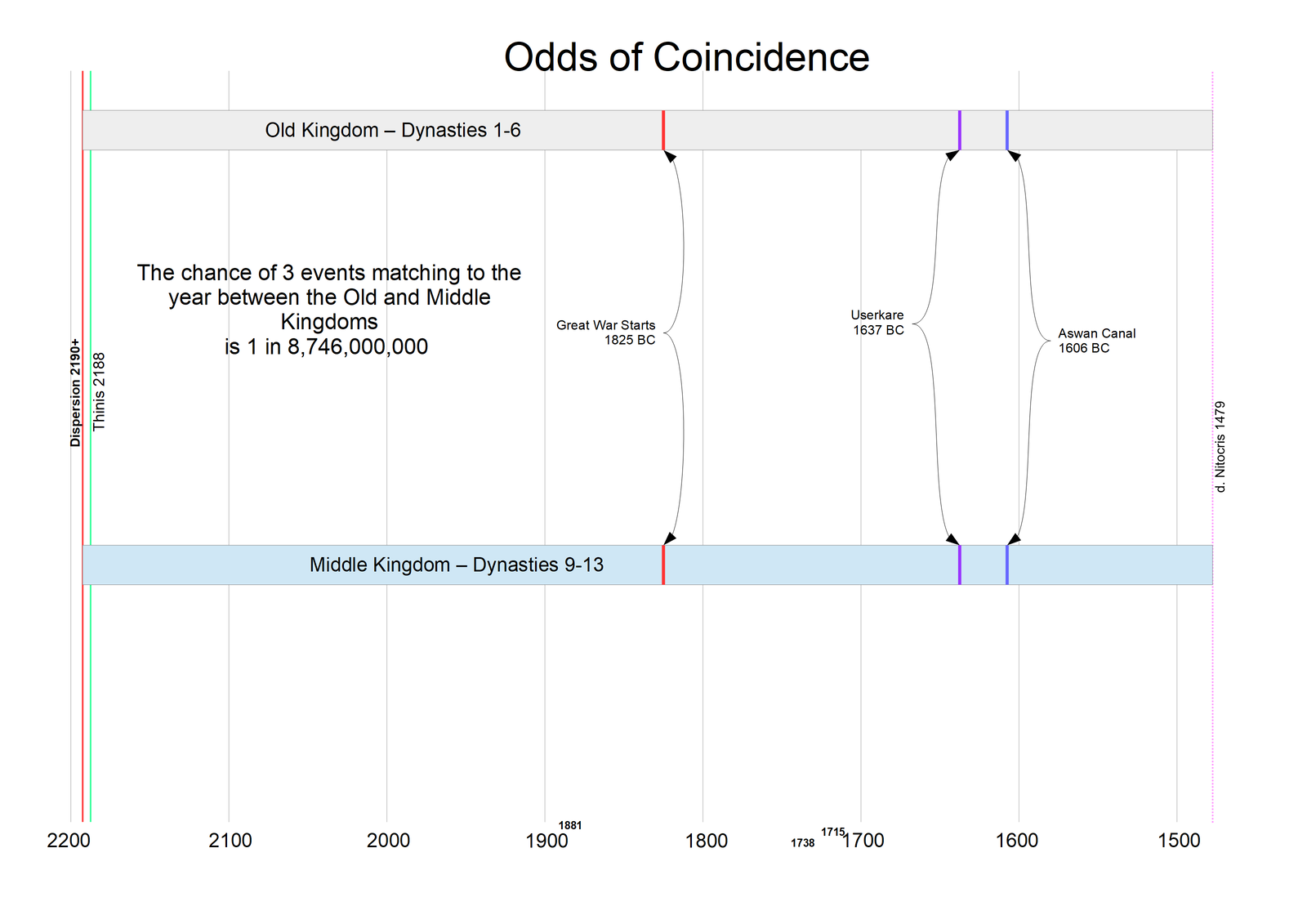
Fig. 23. Odds of three precise synchronisms between Old and Middle Kingdoms.
In the Old and Middle Kingdom chronologies we found three peculiar synchronisms that are precise to the year (fig. 23):
- 1825 BC: The start of the Great War, a civil war, called the War over Thinis in the Middle Kingdom sources
- 1637 BC: the end of the reign of Userkare in Dynasty 6 and the start of the reign of Userkare in Dynasty 13
- 1606 BC: The opening of the Aswan Canal in the first year of Merenre I and the eighth year of Senusret III.
The probability for finding an exact match of a single-year-event from the Old Kingdom within the parallel 700 years of the Middle Kingdom is 1 in 700. The Aswan Canal synchronism is so specific there is no other alternative. Userkare is also so specific that to find the only Userkare of the Middle Kingdom began his reign in Dynasty 13 the year after the only known Userkare of the Old Kingdom completed his coregency for Pepi I in Dynasty 6 is unique. However, the start of the Great War could have coincided with any of the three civil wars known from the Old Kingdom, therefore the chances of the start of the War of Thinis matching the start of a civil war in the Old Kingdom was 3 out of 700. The combined odds of finding three such matches to the year is 3 in 700^3, or 8.7 × 10-9. Fig. 24 shows the odds for six precise biblical synchronisms and Egyptian history so arranged.
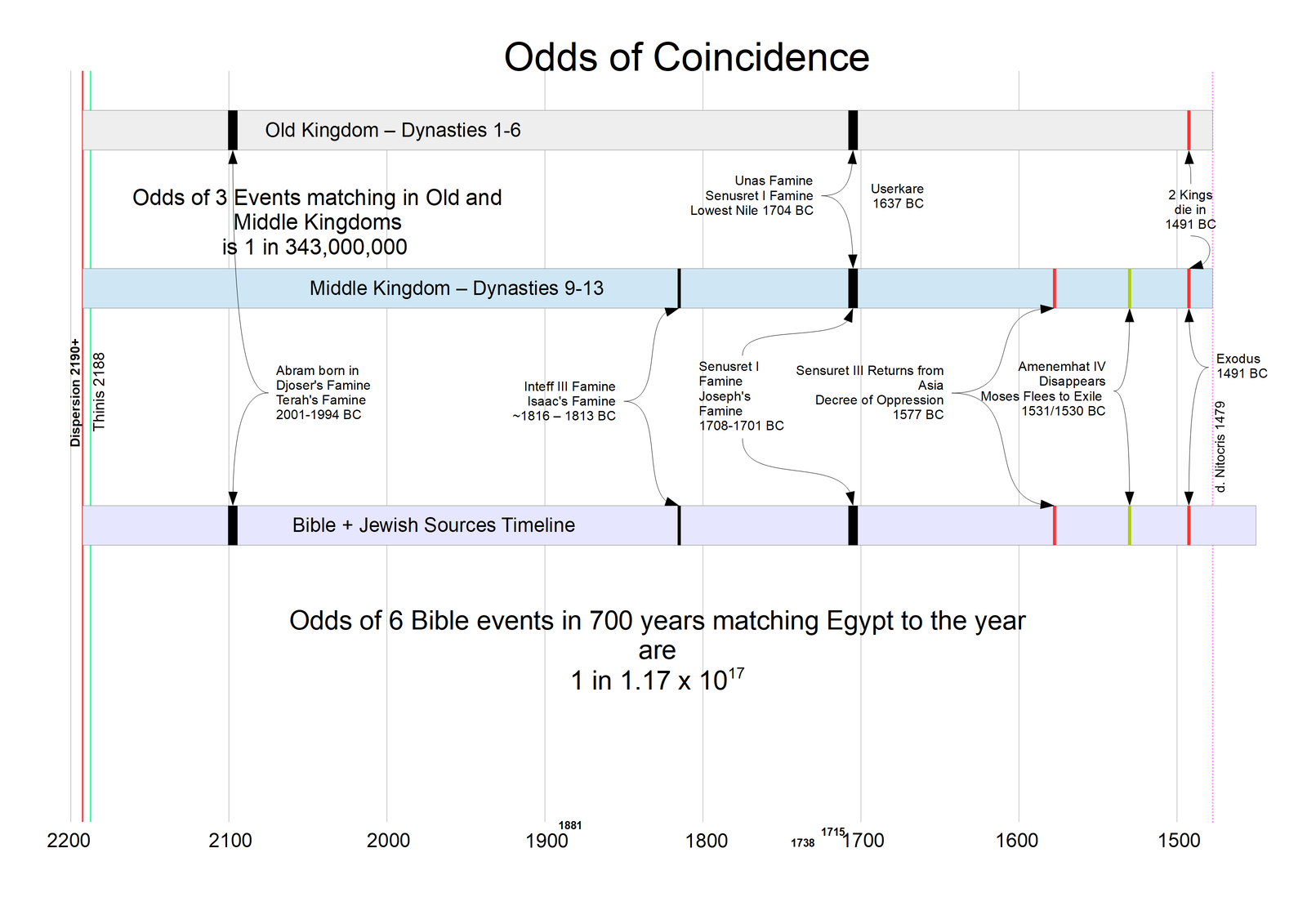
Fig. 24. Odds of six precise synchronisms between Bible and Old and Middle Kingdoms.
Seeing the Entire Elephant
We invoked the parable of the blind men and the elephant as an example of researchers touching different parts of the Egyptian puzzle and finding different things. The authors are merely two of the blind men whose model integrates the observations of the other blind men who have researched these questions before us into a more complete picture.
Mitchell (2008, 255–258) identified Mizraim as founding the first city in Egypt in 2188 BC, Khufu as Abraham’s Pharaoh, Joseph as coming to Egypt in the Twelfth Dynasty, and Sobekneferu as the most likely candidate to be the princess who adopted Moses, all of which we confirm. Engelbrite (2015, 106–107) places Abraham’s visit to Egypt in the Fourth Dynasty, as do we.
We confirm Stewart’s extensive research concluding that Senusret I was Joseph’s Pharaoh (Stewart 2003, 90–107). But we also agree with Long that Joseph’s famine occurred in the reign of Unas of Dynasty 5 (Long 2002, 158–159).
Habermehl (2013, 14–16) holds that the Sixth and Twelfth Dynasties were contemporary. Courville (1971, 221) and Osgood (2020, 266–271) held that Dynasties 12 and 13 were at least partially contemporaneous, and Courville (1977) argued that Joseph is found as Yufni of Dynasty 13. Osgood (2020, 267–268) proposed that Dynasty 13 was forked into three sets of kings ruling regions of Egypt.
Rohl (1995, 251) identified Neferhotep I as the Pharaoh who presided over the slaughter of the infants when Moses was born. Down (2001) and Courville (1971, 221) identified Amenemhat IV as Moses, with whom we concur. Porter (2022, 2) and Long (2002, 77) identified Merenre II as the Pharaoh of the Exodus who died in the Sea of Reeds.
While Courville (1971, 122–125) identified Concharis as the Pharaoh of the Exodus, we conclude that Concharis died in the events of the Exodus, though he was not the Pharaoh, Merenre II, that Moses challenged to let God’s people go.
Velikovsky (2009, 56–58), Rohl (1995, 286–289), and Osgood (2020, 277–288) identified the Hyksos as the Amalekites who invaded Egypt shortly after the Exodus, during the reign of Dedumose II of Dynasty 13. We identify Dedumose as the last male leader standing 12 years after the Exodus, when the Amalekite Hyksos completed their conquest of Egypt in 1479 BC.
Our composite picture of the Egyptian elephant finds that each of the above researchers, and many others who agree with them, were correct about significant points. We are grateful for all of their research and recognize that we stand on the shoulders of giants.
This concludes our proposed revision of the Old and Middle Kingdoms of Egypt to match Scripture and the testimony of the ancient chroniclers. Using the same sources and methods, in the next paper we will drill down to the level of individual kings in the same set of Dynasties 1–14 demonstrating that the chronology of most of the rulers of the first 14 dynasties can be determined with a reasonable level of accuracy.
Acknowledgements
The authors are grateful to Christopher Olsen, whose generous support has expedited this endeavor; and to Seraphim Hamilton whose enthusiasm and encouragement have been invaluable. We also acknowledge our obligation to Dr. Christian Locatell for the courtesy and readiness with which he has replied to questions regarding possible meanings and translations of ancient Hebrew words. Thanks to Brenden McHugh who graciously edited the much longer version of this paper. And we are especially thankful to Judy White whose daily support has made this project possible.
References
Al-ʻAfīf, Murtaḍā ibn. 1672. The Egyptian History, Treating of the Pyramids, the Inundation of the Nile, and Other Prodigies of Egypt, According to the Opinions and Traditions of the Arabians Written Originally in the Arabian Tongue by Murtadi, the Son of Gaphiphus, Rendered into French by Monsieur Vattier . . . and Thence Faithfully Done into English by J. Davies. London, UK: Thomas Basset. https://quod.lib.umich.edu/e/eebo/A51638.0001.001?rgn=main;view=fulltext
Al-Qifti, Ibn. 2010. (c. 1196) Emily Cottrell, trans. Kitāb Ikhbār al-’Ulamā’ bi Akhbār al-Ḥukamā.
https://www.roger-pearse.com/weblog/2010/09/24/al-qifti-on-the-destruction-of-the-library-of-alexandria/.
Anderson, Daniel. 2007. “Egyptian History and the Biblical Record: A Perfect Match?” https://creation.com/egyptian-history-and-the-biblical-record-a-perfect-match.
Ashton, John, and David Down.. 2006. Unwrapping the Pharaohs. Green Forest, Arkansas: Master Books.
Baker, Darrell D. 2008. The Encyclopedia of the Egyptian Pharaohs. Vol 1. Predynastic Through Twentieth Dynasty (3300–1069 BC). London, UK: Stacey International.
Beckerath. Jürgen von. 1999. Handbuch der ägyptischen Königsnamen. Münchner Ägyptologische Studien, 49. Mainz, Germany: Philipp von Zabern.
Ben-Tor, Daphna. 2010. “Sequences and Chronology of Second Intermediate Period Royal-Name Scarabs, Based on Excavated Series from Egypt and the Levant.” In The Second Intermediate Period (Thirteenth–Seventeenth Dynasties): Current Research, Future Prospects. Orientalia Lovaniensa Analecta. Vol. 192. Edited by Marcel Marée, 91–108. Leuven, Belgium: Peeters.
Bestock, Laurel. 2008. “The Early Dynastic Funerary Enclosures of Abydos.” Archéo-Nil 18: 42–59.
Bierbrier, Morris L. 2022. Historical Dictionary of Ancient Egypt. Historical Dictionaries of Ancient Civilizations and Historical Eras. Vol.22. Lanham, Maryland: Scarecrow Press.
Bietak, Manfred. 2006. “The Predecessors of the Hyksos.” In Confronting the Past: Archaeological and Historical Essays on Ancient Israel in Honor of William G. Dever. Edited by Seymour Gitin, Edward J. Wright, and J. P. Dessel, 285–294. Ann Arbor, Michigan: Eisenbrauns.
Bonhomme, Brian, and Cathleen Boivin. 2010. Milestone Documents in World History: Exploring the Primary Sources that Shaped the World. Dallas, Texas: The Schlager Group.
Bourriau, Janine. 2002. “The Second Intermediate Period.” In The Oxford History of Ancient Egypt. Edited by Ian Shaw. Oxford, UK: Oxford University Press.
Breasted, James Henry. 1909. A History of Egypt From the Earliest times to the Persian Conquest. New York, New York: Charles Scribner’s Sons.
Breasted, James Henry. 1912. Development of Religion and Thought in Ancient Egypt. Lectures Delivered on the Morse Foundation at Union Theological Seminary. New York, New York: Charles Scribner’s Sons.
Bremmer, Jan N. 2014. Initiation into the Mysteries of the Ancient World. Berlin, Germany: De Gruyter.
Callender, Gae. 2003. “The Middle Kingdom Renaissance (c. 2055–1650 BC).” In The Oxford History of Ancient Egypt. Edited by Ian Shaw. Oxford, UK: Oxford University Press.
Charles, R. H. 1913. “The Book of Jubilees.” The Apocrypha and Pseudepigrapha of the Old Testament. Oxford, UK: Clarendon Press.
Coogan, Michael David. 2009. A Brief Introduction to the Old Testament: The Hebrew Bible in Its Context. Oxford, UK: Oxford University Press.
Courville, Donovan A. 1971. The Exodus Problem and Its Ramifications. Vols. 1 and 2. Loma Linda, California: Challenge Books.
Courville, Donovan. 1977. “My Search for Joseph.” Signs of the Times, October: 5–9.
Crisler, Vern. 2006. Egyptian Chronology and the Bible: The Pre-Patriarchal Era. https://vernerable.wordpress.com/wp-content/uploads/2008/10/egyptianchronology1.pdf.
Cullimore, Isaac. 1833a. “On The Ancient Chaldean and Egyptian Chronology.” The Morning Watch 6: 161–179. https://www.google.com/books/edition/The_Morning_Watch/j4U3AAAAMAAJ.
Cullimore, Isaac. 1833b. “On the Hermaic Records.” The Morning Watch 6: 389–404. https://www.google.com/books/edition/The_Morning_Watch/j4U3AAAAMAAJ.
Cullimore, Isaac. 1845. Pharaoh and his Princes: Or the Dynasty Changes in the Ancient Egyptian Government, As its Five States Successively Took the Form of a Pentarchy, Tetrarchy, Dyarchy, Monarchy, and Dodekarchy. Original Papers read before the Syro-Egyptian Society of London. London, UK: Madden and Malcolm.
David, A. Rosalie. 1996. The Pyramid Builders of Ancient Egypt: A Modern Investigation of Pharaoh’s Workforce. London, UK: Guild Publishing.
Davies, W. V. 1981. “A Royal Statue Reattributed.” British Museum Occasional Paper 28.
Davies, W. V. 1982. “The Origin of the Blue Crown.” The Journal of Egyptian Archaeology 68, no. 1: 69–76.
Denon, Vivant. 1802. Voyage in Lower and Upper Egypt, During the Campaigns of General Bonaparte. London, United Kingdom: Cox, Son and Baylis.
Diodorus Siculus. 1935. (30 BC). The Library of History of Diodorus Siculus. Vol. 2. Loeb Classical Library. Translated by Charles Oldfather. London, United Kingdom: Heinemann.
Dodson, Aidan. 2016. The Royal Tombs of Ancient Egypt. Barnsley, South Yorkshire: Pen and Sword Books.
Down, David. 2001. “Searching for Moses.” Journal of Creation 15, no. 1 (April): 53–57.
Eaton-Krauss M. 1982. “Middle Kingdom Coregencies and the Turin Canon.” Journal for the Society of the Study of Egyptian Antiquities 12: 17–20.
Edwards, Iorwerth Eiddon Stephen. 1971. “The Early Dynastic Period in Egypt.” In The Cambridge Ancient History. Vol. 2, Part I. Edited by I. E. S. Edwards, C. J. Gadd, N. G. L. Hammond, and E. Sollberger. Cambridge, UK: Cambridge University Press.
Eusebius of Caesarea. 1993. Chronicle. Translated by H. W. Bird. http://www.attalus.org/translate/eusebius.html.
Eusebius of Caesarea. 310. (2002). Preparation for the Gospel. Volume 1. Translated by Edwin Hamilton Gifford. Eugene, Oregon: Wipf and Stock Publishers.
Engelbrite, Eve. 2015. Pharaohs of the Bible: 4004–960 B.C. Inspired Idea.
Enmarch, Roland. 2011. “The Reception of a Middle Egyptian Poem: The Dialogue of Ipuwer and the Lord of All”. In Ramesside Studies in Honour of K. A. Kitchen. Edited by M. Collier, and S. Snape. Bolton, UK: Rutherford.
Fairman, H. W. 1935. “The Myth of Horus at Edfu: I.” The Journal of Egyptian Archaeology 21, no. 1. (September): 26–36.
Freire, Lucas G. 2015. “Suzerains and Vassals: Patterns of Hierarchy in Ancient Near Eastern Diplomacy.” 56th International Studies Association Annual Convention New Orleans, 18–21 February.
Gardiner, Alan. 1964. Egypt of the Pharaohs. Oxford, UK: Oxford University Press.
Garstang, John, and Kurt Sethe. 1903. Maḥâsna and Bêt Khallâf. London, UK: Quaritch. Egyptian Research Account Memoir 7. https://www.google.com/books/edition/Ma%E1%B8%A5%C3%A2sna_and_B%C3%AAt_Khall%C3%A2f/c6tDAAAAYAAJ?hl=en&gbpv=0.
Ginzberg, Louis. 2001. The Legends of the Jews. Vols. 1–4. Oxford, Mississippi: Gutenberg Project Foundation.
Glassner, Jean-Jacques. 2004. Mesopotamian Chronicles. Writings from the Ancient World. Atlanta, Georgia: Society of Biblical Literature.
Goedicke, Hans. 1962. “A Neglected Wisdom Text.” The Journal of Egyptian Archaeology 48 (December): 25–35.
Grajetzki, Wolfram. 2006. The Middle Kingdom of Ancient Egypt. London, UK: Duckworth.
Grajetzki, Wolfram. 2009. Court Officials of the Egyptian Middle Kingdom. London, UK: Bristol Classical Press.
Grajetzki, Wolfram. 2010. “Remarks on Women with Male Names: Stela Glasgow 1923.33.ac in the Kelvingrove Art Gallery and Museum.” Goettinger Miszellen 224: 47–58.
Griffith, Kenneth C., and Darrell K. White. 2022a. “Chronological Framework of Ancient History. 1: Problem, Data, and Methodology.” Answers Research Journal 15, November 6: 377–390. https://answersresearchjournal.org/ancient-egypt/chronological-framework-ancient-history-1/.
Griffith, Kenneth C., and Darrell K. White. 2022b. “Chronological Framework of Ancient History. 2: Founding of the Nations.” Answers Research Journal 15 (December 14): 405–426. https://answersresearchjournal.org/tower-of-babel/chronological-framework-ancient-history-2/.
Griffith, Kenneth C., and Darrell K. White. 2023a. “Chronological Framework of Ancient History. 3: Anchor Points of Ancient History.” Answers Research Journal 16 March 22: 131–154. https://answersresearchjournal.org/ancient-egypt/chronological-framework-ancient-history-3/.
Griffith, Kenneth C., and Darrell K. White. 2023b. “Chronological Framework of Ancient History. 4: Dating Creation and the Deluge.” Answers Research Journal 16 (September 20): 475–489. https://answersresearchjournal.org/noahs-flood/chronological-framework-ancient-history-4/.
Griffith, Kenneth C., and Darrell K. White. 2023c. “Chronological Framework of Ancient History. 5: The Babylonian Dynasties of Berossus.” Answers Research Journal 16 (December 20): 635–670. https://answersresearchjournal.org/archaeology/chronological-framework-ancient-history-5/.
Grimal, Nicolas. 1994. A History of Ancient Egypt. Translated by Ian Shaw. Oxford, UK: Blackwell Publishing.
Habermehl, Anne. 2013. “Revising the Egyptian Chronology: Joseph as Imhotep, and Amenemhat IV as Pharaoh of the Exodus.” Proceedings of the Seventh International Conference on Creationism, Article 38. Pittsburgh, Pennsylvania: Creation Science Fellowship.
Hayes, William C. 1953. The Scepter of Egypt: A Background for the Study of the Egyptian Antiquities in the Metropolitan Museum of Art From the Earliest Times to the End of the Middle Kingdom. Vol. I. New York, New York: Metropolitan Museum of Art.
Hayes, William C. 1955. A Papyrus of the Late Middle Kingdom in the Brooklyn Museum. New York: Brooklyn Museum.
Hayes, William C. 1971. “The Middle Kingdom in Egypt: Internal History from the Rise of the Heracleopolitans to the Death of Ammenemes III.” The Cambridge Ancient History. Vol. 1, Part 2. Edited by I. A. S. Edwards. Cambridge, UK: Cambridge University Press.
Herodotus of Halicarnasus. 2013. The Histories. Translated by George Rawlinson. Moscow, Idaho: Roman Roads Media.
Hoeh, Hermann L. 1967. Compendium of World History. Vol. 1. Pasadena, California: Ambassador College.
Jones, Floyd Nolen. 2019. Chronology of the Old Testament: A Return to Basics. 21st Edition. The Woodlands, Texas: King’s Word Press.
Josephus, Flavius. 1901. The Complete Works of Flavius Josephus the Celbrated Jewish Historian. Translated by William Whiston. Chicago, Illinois: Thompson & Thomas.
Kitchen, K. A. 1967. “Byblos, Egypt, and Mari in the Early Second Millennium B.C.” Orientalia 36, no. 1: 39–54.
Lisle, Jason. 2009. The Ultimate Proof of Creation: Resolving the Origins Debate. Green Forest, Arkansas: Master Books.
Long, James D. 2002. The Riddle of the Exodus: Startling Parallels Between Ancient Jewish Sources and the Egyptian Archaeological Record. Springdale, Arkansas: Lightcatcher Books.
Luft, Ulrich. 2006. “Absolute Chronology in Egypt in the First Quarter of the Second Millennium BC.” Ägypten und Levante 16: 309–316.
Lundström, Peter. 2020. “Pharaoh.se.” https://pharaoh.se.
Manasses, Constantinus. (c. 1150) 2006. Compendium Chronicum. Lesvos, Greece: Streets of Faith—Digital Patrology Cultural Heritage Management Laboratory. University of the Aegean, Department of Cultural Technology and Communication.
Manetho. 1964. Aegyptiaca. Translated by W. G. Waddell. Harvard University Press: Cambridge, Massachusetts.
Meyer, Eduard. 1904. Aegyptische Chronologie. Berlin, Germany: Verlag Der Königlichen Akademie der Wissenschaften. https://dn790004.ca.archive.org/0/items/aegyptischechron00meye/aegyptischechron00meye.pdf.
Mitchell, Elizabeth. 2008. “Doesn’t Egyptian Chronology Prove that the Bible is Unreliable?” In The New Answers Book 2. Edited by Ken Ham, 245–263. Green Forest, Arkansas: Master Books.
Montgomery, Alan. 2021. Ages in Order: A Velikovskian Revision of Ancient History. Toronto, Canada: Best Bard Press.
Mourad, Anna-Latifa. 2015. Rise of the Hyksos: Egypt and the Levant From the Middle Kingdom to the Early Second Intermediate Period. Oxford, UK: Archaeopress.
Murnane, William J. 1977. “Ancient Egyptian Coregencies.” Studies in Ancient Oriental Civilization 40. Chicago, Illinois: The Oriental Institute.
Nissen, Hans J. 1988. The Early History of the Ancient Near East, 9000–2000 B.C. Chicago, Illinois: The University of Chicago Press.
O’Mara, Patrick F. 2003. “Censorinus, the Sothic Cycle, and Calendar Year One in Ancient Egypt: The Epistemological Problem.” Journal of Near Eastern Studies 62, no. 1: 17–26.
Osgood, John. 2020. They Speak with One Voice: A Correlation of the Bible Record with Archaeology. Queensland, Australia: Self published.
Papyrus Boulaq 18. Cairo Museum. https://pnm.uni-mainz.de/2/inscription/1034.
Petrie, William Matthew Flinders. 1897. A History of Egypt From the Earliest Times to the XVIth . . . Vol. 1. 3rd ed. New York, New York: Charles Scribner’s Sons. https://www.google.com/books/edition/A_History_of_Egypt_from_the_Earliest_Tim/KR8NAAAAIAAJ?gbpv=1.
Petrie, W. M. Flinders. 1900. Royal Tombs of the First Dynasty. 1900. Part 1. London, UK: Egypt Exploration Fund. Memoir 18.
Petrovich, Douglas. 2006. “Amenhotep II and the Historicity of the Exodus-Pharaoh.” The Master’s Seminary Journal 17, no. 1 (Spring):81–100.
Petrovich, Douglas. 2021. Origins of the Hebrews: New Evidence of Israelites in Egypt from Joseph to the Exodus. Nashville, Tennessee: New Creation.
Porter, Bertha, and Rosalind L. B. Moss. 1937. Topographical Bibliography of Ancient Egyptian Hieroglyphic Texts, Reliefs, and Paintings. V. Upper Egypt: Sites. Oxford, UK: Oxford University Press.
Porter, Robert M. 2022. “The Place of the Exodus in Egyptian History.” Answers Research Journal 15 (February 16): 1–9. "https://answersresearchjournal.org/ancient-egypt/place-of-exodus-egyptian-history/.
Poole, Reginald Stuart. 1851. Horae Aegyptiacae: Or The Chronology Of Ancient Egypt Discovered From Astronomical And Hieroglyphic Records Upon Its Monuments. London, UK: John Murray.
Quirke, Stephen. 2014. Exploring Religion in Ancient Egypt. London, UK: Wiley.
Reilly, Jim. 2015. “The Patriarchal Age.” In Displaced Dynasties. Vol. 4. The Genealogy of Ashakhet Part 2: From Imhotep to Apophis, 18–43. http://www.displaceddynasties.com/uploads/6/2/6/5/6265423/from_imhotep_to_apophis_chapter_2.pdf.
Rice, Michael. 1999. Who is Who in Ancient Egypt. London, UK: Routledge.
Rice, Michael. 2004. Egypt’s Making. The Origins of Ancient Egypt 5000–2000 BC. London, UK: Taylor and Francis.
Rohl, David. 1995. A Test of Time: The Bible—From Myth to History. London, UK: Century Ltd.
Rohl, David M. 1995. Pharaohs and Kings: A Biblical Quest. New York, New York: Crown Publishing.
Rohl, David. 2021. Legendary Kings: The Real Bible Unearthed. Volume One. Part One. Self published.
Rudd, Steven. 2019. Bible Maps, Chronology, Archaeology Graphics: The Essential Collection. Self-Published.
Ryholt, K. S. B. 1997. The Political Situation in Egypt During the Second Intermediate Period c. 1800–1550 B.C. Copenhagen, Denmark: Museum Tusculanum Press.
Ryholt, Kim. 2000. “The Late Old Kingdom in the Turin King-list and the Identity of Nitocris.” Zeitschrift fur Agyptische Sprache und Altertumskunde 127, 87–100.
Schoene, Alfred. 1875. Eusebius Chronicorum Libri DVO. In 2 volumes. Translated by Andrew Smith. Berlin, Germany: APVD Weidmannos. https://www.attalus.org/translate/eusebius4.html#1.
Shaw, Ian. 2003. The Oxford History of Ancient Egypt. Oxford, UK: Oxford University Press.
Simpson, William Kelly. 2001. “Studies in the Twelfth Egyptian Dynasty III: Year 25 in the Era of the Oryx Nome and the Famine Years in Early Dynasty 12.” Journal of the American Research Center in Egypt 38: 7–8.
Simpson, William Kelly. ed. 2003. The Literature of Ancient Egypt: An Anthology of Stories, Instructions, and Poetry. New Haven, Connecticut: Yale University.
Spalinger, Anthony. 2001. “Chronology and Periodization.” The Oxford Encyclopedia of Ancient Egypt. Vol. 1, 264–268. Oxford, UK: Oxford University Press.
Stewart, Ted T. 2003. Solving the Exodus Mystery. Volume One: Discovery of the True Pharoahs of Joseph, Moses, and the Exodus. Houston, Texas: Biblemart.com.
Tallet, Pierre, and Damien Laisney. 2012. “Iry-Hor et Narmer au Sud-Sinaï (Ouadi ‘Ameyra) Un complément à la Chronologie des Expéditions Minières Égyptiennes.” Bulletin de l’institut Français d’archéologie Orientale 112: 381–398.
Ussher, James. 2003. The Annals of the World. Translated by Larry Pierce. Green Forest, Arkansas: Master Books.
Velikovsky, Immanuel. 1977. Peoples of the Sea. Garden City, New York: Doubleday.
Velikovsky, Immanuel. 1978. Ramses II and His Time. Garden City, New York: Doubleday.
Velikovsky, Immanuel. 2009. (1952). Ages In Chaos I. from the Exodus to King Akhnaton. Garden City, New York: Doubleday.
Verbrugghe, Gerald P., and John M. Wickersham. 2001. Berossos and Manetho Introduced and Translated: Native Traditions in Ancient Mesopotamia and Egypt. Ann Arbor, Michigan: University of Michigan Press.
Verner, Miroslav. 1994. Forgotten Pharaohs, Lost Pyramids: Abusir. Prague, Czech Republic: Academia Škodaexport.
Waite, Roger. 2016. The Bible and Egypt: In Search of a Correct Egyptian Chronology. https://www.rogerswebsite.com/articles/TheBibleandEgypt.pdf.
Wegner, Josef. W. 1996. “The Nature and Chronology of the Senwosret III–Amenemhat III Regnal Succession: Some Considerations Based on New Evidence From the Mortuary Temple of Senwosret III at Abydos.” Journal of Near Eastern Studies 55, no. 4 (October): 249–279.
Wegner, Josef. 2015. “The Pharaohs of Anubis Mountain; Archaeological Investigations of a Royal Necropolis at Abydos.” Oriental Institute Lecture Series. University of Chicago. https://youtu.be/H33c9gAqMMQ.
Wegner, Josef, and Kevin Cahail. 2015. “Royal Funerary Equipment of a King Sobekhotep at South Abydos: Evidence for the Tombs of Sobekhotep IV and Neferhotep I?” Journal of the American Research Center in Egypt 51: 123–164.
Weigall, Arthur. 1925. A History of the Pharaohs: The First Eleven Dynasties. New York, New York: E. P. Dutton and Company.
Wilkinson, Toby A. H. 1999. Early Dynastic Egypt. London, UK: Routledge.
Appendix—Classical Sources of Egyptian King Lists
In this appendix, we will justify our use of the late classical sources, as that has come under strong criticism.
Sources
The sources used here include the Masoretic Text of Scripture, monumental inscriptions and papyri, state-sponsored ancient chroniclers such as Manetho and Berossus, historians from Late Antiquity such as Africanus and Constantinus Manasses, and Hebrew traditions such as Artapanus and the Midrash. Of particular concern are the four king lists preserved by Syncellus, discussed below.
Working Hypothesis on Manetho and the Late King Lists
The Byzantine monk, George Syncellus, writing early in the ninth century, preserved four Egyptian king lists, including Africanus’ epitome of Manetho’s Aegyptiaca, The Eratosthenes King List, The Book of Sothis, and The Old Egyptian Chronicle, which Syncellus also attributed to Manetho. All four documents appear to preserve important chronological information about Egyptian history that this paper presents as fitting together.
Competition Between the Historians of Babylon and Egypt
The context for Manetho’s authorship of Aegyptiaca was that Alexander the Great had conquered both Egypt and Babylon only 56 years earlier, and his empire had broken into competing Greek-speaking empires after his death. The priesthoods of both Babylon and Egypt translated their histories into Greek to preserve them under their new lords, the Seleucid Empire and the Ptolemaic Kingdom.
When Manetho began his project, the official state history of Babylon, called Babylonaica, had recently been published (c. 276 BC) by the Babylonian priest, Bēl-rē’ûšunu, also known as Berossus, in the court of Ptolemy’s rival, Antiochus I Soter of the Seleucid Empire. Manetho was presumably tasked by his superiors with producing an official history that showed Egypt to be as ancient, scientific, and respectable to Greek eyes as that of Babylon. The priesthoods of Egypt and Tyre claimed access to records going far back to the founding of their cities and temples (Diodorus 1935, Book I.12.10, I.13.3, I.15.2, I.15.4, I.21.1–11; Herodotus 2013 Book II.3, II.44). Manetho’s work epitomizes those claims.
Berossus arranged his history of Babylon so that about 36,000 years had passed between the Flood and Alexander’s Conquest of Babylon, which was one full cycle of precession through the Zodiac, using the Babylonian estimate of one degree per century (Griffith and White 2023b). Thirty-six thousand was also the number of days in a century of 360 day years, which the Babylonian civil calendar used (Cullimore 1833a).
Both Manetho and Berossus used similar structures for their official histories. To fill a complete pseudo-zodiacal cycle, both works began with the reigns of gods and demigods before coming to the historical reigns of their real kings (Manetho 1964, 11–24; Verbrugge and Wickesham 2001, 2–43).
The challenge facing Manetho was to present Egyptian history, which had already been conceptually divided into dynasties over 1,000 years before his time on the Palermo Stone and integrate it with the Egyptian great cycle of the zodiac using 25 Sothic Cycles of 1,461 years, for a total of 36,525 years (Manetho 1964, 227–233). The value for the pseudo-zodiacal cycle of 36,525 years was the number of days in the Julian Year multiplied by 100. Thus Manetho used the same device that Berossus had used, however, using a more accurate value for the length of the year, but a less accurate value for the rate of precession.
The Sothic Cycle that Manetho lived in ended in AD 136 (Cullimore 1833b; Luft 2006, 312; O’Mara 2003, 25), about four centuries after he compiled his history. To make his history fill out a complete zodiacal cycle and appear to be older than Babylon, Manetho would need to add the extra 410 years from his own time to the end of the cycle. He achieved this by listing parallel dynasties as if they were in a series, as seen in the Old Egyptian Chronicle (Manetho 1964, 227–233n).
Manetho’s magnum opus listed 30 dynasties by city, which is the clue that should tip us off to the fact that he was listing parallel dynasties. If the administrative capital of Egypt was in Memphis, what would be the point of listing dynasties by city? However, if several of those dynasties were ruling in their own cities under the Great King and Vassal arrangement that was common to the Ancient Near East, then each major city would have its own king list that could be represented as a dynasty, similar to the Sumerian King List (Glassner 2004, 118–125).
Manetho’s System
Our model posits that Manetho used certain rules in the arrangement of the dynasties. First, he grouped the dynasties by city. However, in three cases (Dynasties 5, 12, and 13) he listed the dynasty’s city of origin, though it differed from the group it was assigned to. Dynasty 5 began in Elephantine but is grouped with the Dynasties of Memphis because Memphis was its primary seat of power. Dynasties 12 and 13 began in Thebes but ruled from Itjtawy in the North.
Second, Manetho listed the city group in the order in which those cities came to dominate the others. Thinis is first, followed by Memphis, followed by Heracleopolis, followed by Thebes, followed by Xois, by which he seems to have meant Avaris in the Delta.
Third, Manetho’s dynasties within a city grouping are nearly always chronologically sequential. However, the different city groupings are not in chronological sequence. Thus, Dynasties 1 and 2 in the Thinis group were a single sequence. Then switching to Memphis, he goes back in time, starting Dynasty 3 so that Nebka, Djoser, and Uenephes (Djet) were contemporaries. He continues the Memphis group in sequence from Dynasties 3 to 8. Then he switches to the Heracleopolis group and jumps back to the very beginning, contemporary with Menes, and counts down sequentially to the end of Dynasty 10. Then he switches to the Thebes group, and once more jumps back to the beginning of Egyptian history, contemporary with Menes, and counts down Dynasties 11 and 12. Dynasty 13 followed 12 in Thebes. But Dynasties 12 and 13 overlapped by two centuries for reasons we explored above. After Dynasty 13, Manetho switches to the Delta, listing Dynasty 14 as kings of Xois, though it appears to have been in the city of Avaris. It appears that Dynasty 14 was the local administration of the eastern Delta from the time that Joseph was made vizier until the Exodus, and that it was contemporary with Dynasties 5, 6, 10, 12, and 13.
The dynasties after 14 are beyond the scope of this paper, though we must include the start of Dynasty 15 because it is part of Manetho’s Avaris group. Our following papers will show that Manetho continued using the same method down to the end of his series of dynasties.
Two Historical Traditions
The Greco-Roman mystery religions were quite popular in Manetho’s day (Bremmer 2014, 1–20). These religions made some information public, but that public information was deliberately misleading. Initiates of a mystery religion were indoctrinated into the “real” meaning of the public-facing information and sworn to secrecy (Diodorus 1935 Book I.27.6; Herodotus 2013 Book II.3). Our working hypothesis is that Manetho’s Aegyptiaca followed that template by presenting to the Greeks a single series of dynasties from Menes to Alexander that appeared to cover nearly 4,000 years. However, to the initiated priesthood, the parallel nature of the dynasties was well-understood and carefully preserved. Thus there were two traditions of Egyptian history in the Greco-Roman Period, the public version and the priestly version which preserved the real chronological relationship of the dynasties.
Evidence of this is seen in the 23,000 year duration given by the Egyptian priests to Diodorus from Menes to Alexander (Diodorus 1935, Book XIV.83.1), in the 1,663-year duration of the Egyptian State preserved by Constantinus Manasses (2006, 7), and argued by Ussher to count from the reign of Menes to the conquest of Egypt by Cambyses (Ussher 2003, §52), and in the 2,324 erratic years the Old Egyptian Chronicle places the reign of Menes before the end of the last Sothic cycle in AD 136 (Griffith and White 2022b, 413–415; Manetho 1964, 227–231).
Counting the 23,000 “years” as lunar months places the reign of Menes in 2191 BC, while the duration of Manasses places the reign of Menes in 2188 BC, with which the Old Egyptian Chronicle agrees to the year. The difference between the three sources is only three years, an error of only two-tenths of one percent, or two years in a thousand.
Manasses used the LXX chronology in his chronicle, but the duration he preserved for Egyptian history matches Ussher’s chronology. This suggests that Manasses did not invent this duration himself but obtained it from an older source. That this information was available to him as late as the twelfth century of the Christian Era suggests that the pagan Egyptian priesthood knew the real Egyptian history, which was at some point imported into the Christian priesthood in Alexandria through the conversion of pagan priests to Christianity and thus was preserved into the Byzantine Era.
The package of four documents handed down to us by Syncellus preserved both traditions. Thus all four documents, Aegyptiaca, The Old Egyptian Chronicle, The Book of Sothis, and The Eratosthenes King List should be taken as a group representing the late Egyptian priestly tradition of their history.
How We Handle Conflicting Details in Recensions of Manetho
Africanus, Eusebius, and Barbarus record significantly different, though similar numbers, for the reigns of kings and lengths of dynasties found in Manetho. How can we claim the ancient chroniclers accurately preserved information if they don’t even agree with one another?
Our view is that the original manuscript of Aegyptiaca contained significantly more detail about the years of reign and coreigns of the kings found within than has been preserved by his redactors. Both Africanus and Eusebius had access to manuscripts of Aegyptiaca and preserved different information in some cases from their manuscripts. Africanus consistently lists longer reigns than Eusebius, suggesting that in most cases he preserved the total reign of each king. Eusebius may have preserved only the sole reign of most of the kings. Thus the durations preserved by Africanus typically add up to a longer period than the dynasties reigned because he double-counted the coreigns between fathers and sons on the throne, though Eusebius sometimes did the same. This indicates that the redactors interpreted Manetho’s work and tried to simplify it, which resulted in the loss of some information.
Chronological Lists
Egyptologists generally accept the Turin Canon as a list that is chronologically true and does not include coreigns (Eaton-Krauss 1982, 19; Spalinger 2001, 266). Our interpretation of the Sothis King List (SKL) and the Eratosthenes King List (EKL) is that these were also chronological lists that generally do not include coreigns, though each list has a few exceptions. The SKL and EKL both cover the first millennium after Menes but follow different city dynasties. The EKL is concerned with the rulers of Thebes, while the SKL seems to follow what the author considered to be the high kings of Egypt.
The Sothis King List appears to contain four smaller concatenated lists. We will show that the first of those sublists, kings #1–#32, covers the same period as the Turin Canon’s duration of 955 years from Menes to the end of Dynasty 8, however, it begins with the Dispersion, three years before the founding of Thinis, and therefore its total is 959 years. The SKL has one overlap of 28 years in Dynasty 4, where it lists kings #10–#13 who appear to be the same kings as Africanus’ kings #5–#8 of Dynasty 4. We believe that those four kings were coregents under the previous four kings, all of whom predeceased their fathers. To make up for this overlap, the SKL deducts 28 years from the full reign of Menes to keep the list chronologically accurate for the total duration from Menes to the death of Concharis, in which year Courville argued that the Exodus occurred (1971, 122–128).
The Eratosthenes King List covers the same period, continuing one generation past the Fall of Troy in the reign of Phruoro (Manetho 1964, 213–225). Unlike the SKL which is typically accurate within a year or two, the EKL includes some overlapping kings, whose reigns are balanced by gaps in other areas so that the duration from Menes to the start of the reign of Nitocris falls 30 years short of the same duration in the SKL. However, between Nitocris and the death of Nilus it makes up the shortfall by adding the missing years back in. At some points in the middle, the EKL is up to 60 years off, while being accurate at the start and end of the list.
Objections
Egyptologists have objected that we cannot use such late sources such as those preserved by Syncellus and Contanstinus Manasses because they are unreliable (Breasted 1909, 23; Gardiner 1964, 8). However, that objection betrays a perhaps willful ignorance of how the current model of Egyptology was constructed. Egyptologists built their model of Egyptian history in the late nineteenth and early twentieth centuries using Manetho to give the order of the dynasties (Spalinger 2001, 266–267), and the Old Egyptian Chronicle combined with Censorinus as the two sources of their Sothic Theory (Meyer 1904, 45), despite being centuries removed from the last use of the Sothic Calendar in 238 BC.
For the past century, Egyptologists have forced Egyptian history into a Procrustean Bed of Sothic Dating. Yet, current Egyptologists assume that their chronology of Egypt depends on neither Manetho nor the Old Egyptian Chronicle, and that such sources are corrupt, unreliable, and nearly useless to Egyptology (Gardiner 1964, 8). Generally, Egyptologists cite Manetho when he agrees with their opinion (Baker 2008, 10, 38), and contradict him when he doesn’t (Baker 2008, 413, 259).
We attempt to use Manetho’s information consistently, which is to say, we try to qualify and use all of the data preserved by the chroniclers, rather than merely the data points that agree with us. Our model has found fits for the majority of the durations preserved by the chroniclers.
A related objection that Egyptologists raise concerning our sources is that late copies of king lists are unreliable because they were composed centuries after the events in question (Mitchell 2008, 247; Nissen 1988, 185). However, all such kings lists including the Palermo Stone and the Turin Canon, which Egyptologists treat as gospel, were composed centuries after said kings lived. Ptolemy’s copy of the Royal Canon was compiled a thousand years after the reign of Nabonassar, yet later discoveries from the tablets unearthed in Assyria, Babylon, and Persia have confirmed the accuracy of the Royal Canon. This is to be expected because the temples in Egypt and Babylon were still standing when these lists were originally compiled, and such temples usually contained records dating back to the year they were founded.
The EKL and SKL preserve the names and obscure titles of eleven kings of Dynasties 11 and 13 (see tables 4 and 5) that were completely unknown in Late Antiquity, indicating that the original compilers of these lists had access to accurate and reliable information. Therefore we unapologetically use Manetho along with the EKL, SKL, and Old Egyptian Chronicle, while recognizing that many of the comments were added by later Christian or Greek chroniclers who were not initiated into the Egyptian priestly chronology. Therefore any errors are most likely to be found in the comments.
How to Reconcile Manetho’s Dynasties to External Chronological Constraints
Biblicists and Egyptologists face a similar problem regarding Manetho. The total number of years represented in Manetho’s 30 dynasties appears to be far too many to fit within even the longest LXX chronology. For Egyptologists, Manetho’s dynasties contain far too many years between Dynasties 12 and 30 to fit into the Procrustean Bed of Sothic Dating which places the seventh year of Senusret III in 1872 BC (Petrovich 2021, 75) and the death of Nectanebo II circa 340 BC.
Three methods have been used to resolve this problem.
A. Compress Manetho’s Dynasties to Fit
Amongst creationists, compression is promoted by The Associates for Biblical Research (Petrovich 2021), Robert Porter (2022), and Jim Reilly (2015). Amongst Egyptologists, the method in vogue since Breasted is to compress the dynasties to fit the Sothic dates of Senusret III (Petrovich 2021, 75) and Amenhotep I (Petrovich 2006, 7). (fig. 25)
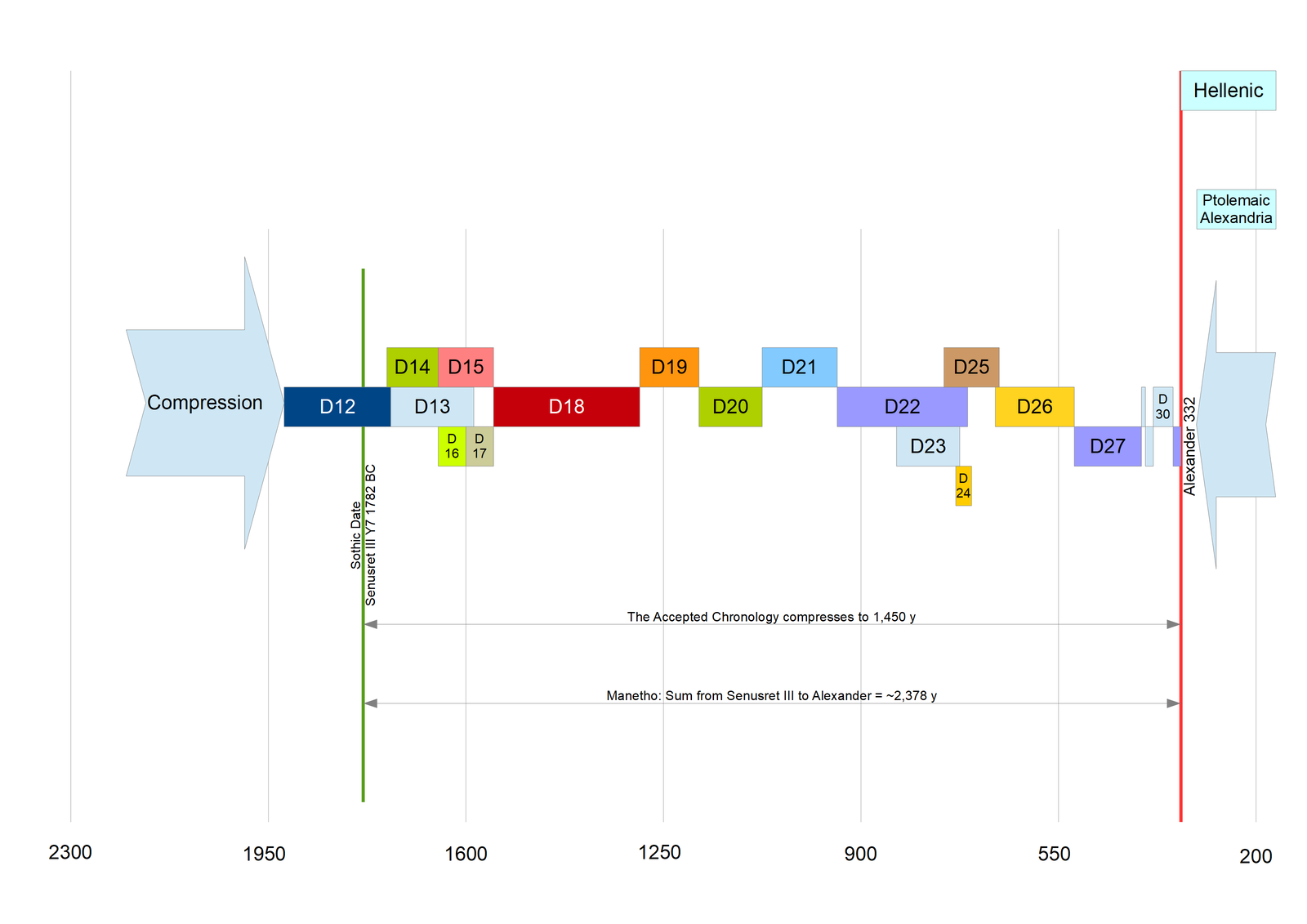
Fig. 25. The Procrustean chronology of Egyptologists.
Two Egyptian textual records of Sothic risings (dating to the reigns of Senusret III and Amenhotep I) form the basis of the conventional chronology of Egypt, which, in turn influences that of the whole Mediterranean region. (Shaw 2003, 9)
This method is a Procrustean Bed for chronology that lops off 772 years to squeeze the 2,304 years of Manetho’s dynasties 13–30 into 1,532 years of the Sothic chronology (fig. 25). To achieve this Egyptologists must shorten the reigns of the majority of kings. Gardiner summarized the bias of Egyptologists against regnal lengths from Manetho and classical sources:
Here, as in estimating all of the classical writers, we are faced with a dilemma: wherever a detail is confirmed by trustworthy external evidence, that confirmation renders the statement somewhat superfluous; where such evidence does not exist, our confidence can seldom be sufficient to carry complete conviction. (Gardiner 1964, 8)
In other words, the classical sources may be “superfluous” because we cannot believe them without archaeological confirmation, and where they are confirmed, we don’t need them. The logic of Gardiner’s summary is identical to the command given by the Muslim Caliph Umar ibn al-Khaṭṭab to his emir to destroy the scrolls of the very same classical Egyptian sources (c. AD 642):
And he received a letter from ‘Umar telling him [what follows]: “As for the books you mention, if there is in it what complies with the Book of God [Q’uran], then it is already there and is not needed and if what is in these books contradict the Book of God there is no need for it. And you can then proceed in destroying them.” (Al-Qifti 2010)
The fallacy that both Umar and Gardiner committed was to assume that the classical sources did not contain any useful information that was not already included in their preferred sacred texts.
Gardiner epitomizes the trend of Egyptologists to limit any king’s reign to his highest year-dated artifact, despite the fact that 99.9% of all such artifacts have been lost or destroyed. This policy is how they lop off the “excess” 772 years. Should we apply the same standard to sources about Emperor Nero, we would know virtually nothing of his reign other than that he left some dated bricks. The accounts of his homosexuality and persecution of Christians would be discarded as unreliable. The preferred method of Egyptologists entails a strong bias against recorded history while forcing Egyptian history into the Procrustean Bed of Sothic Theory.
B. Manetho’s Dynasties Are Understood to Have Been in Parallel
Eusebius was the first Christian scholar to articulate this theory:
But if, even so, the number of years [in Manetho’s history] is found to be too large, then we must investigate the reason for this. Perhaps it happened that there were many kings in Egypt at the same time. They say that some of them were kings of Thinis, some of Memphis, some of Sais, and some of Ethiopia; and there were yet others in other places. And as it seems that these dynasties ruled each in its own nome, it is very unlikely that they ruled in succession to each other. Rather, some of them ruled in one place, and others in another place. Therefore the increase in the number of years can be explained in that way. (Eusebius 1993, 136–137)
This possibility was also commented on by Syncellus (Manetho 1964, 11, 209–211) and was later proposed by Cullimore and Pool in the nineteenth century (Cullimore 1845; Poole 1851, 82–84). While not commenting on the period before the Exodus, Velikovsky leaned toward parallel dynasties in his interpretation of Dynasties 18–20 which he placed in parallel to Dynasties 21–30 (Velikovsky 1977; 1978). Since Velikovsky, parallel revisions have been proposed by Courville (1971), Down (2001), Engelbrite (2015), Habermehl (2013), Hoeh (1967, 16), Osgood (2020), and Waite (2016).
Only in the past four decades have Christian scholars attempted to work out such a parallel arrangement of Egyptian dynasties comprehensively. Our proposed solution uses the overlap method at both the dynasty level, and for kings of the same dynasty who shared coregencies. This allows us to use the full lengths of reigns found in Manetho and the other classical sources while still fitting the entirety of Egyptian history within the external restraints (fig. 1). We find that overlaps occur at two levels: coreigns between fathers and sons, and contemporary dynasties reigning from different cities.
C. Discard Manetho as Corrupt Nonsense
This option frees the historian to pick their favorite synchronisms and compose whatever chronology of Egypt suits them. The current generation of Egyptologists as well as Revisionists trend toward discarding Manetho entirely (Breasted 1909, 23; Gardiner 1964, 8; Mitchell 2008, 246–247; Montgomery 2021, 15) and chafe against the use of other classical historians as well. The classical sources of Manetho and the Old Egyptian Chronicle were used by early Egyptologists to construct their model, but after the accepted chronology attained the status of gospel, the sources were discarded as superfluous scaffolding by the end of the twentieth century.
Appendix Conclusion
We believe that Egyptologists have overlooked the value of Manetho and the classical sources for Egyptian history, largely due to misunderstanding Manetho’s method. This has led them to discard valuable information and fabricate a defective chronology by forcing Manetho’s dynasties into their Procrustean Bed of Sothic Dating. By using all of the classical sources, the authors have found a harmonious chronological framework that is supported by both internal Egyptian synchronisms between dynasties, and by many synchronisms between Egypt and the Bible.
